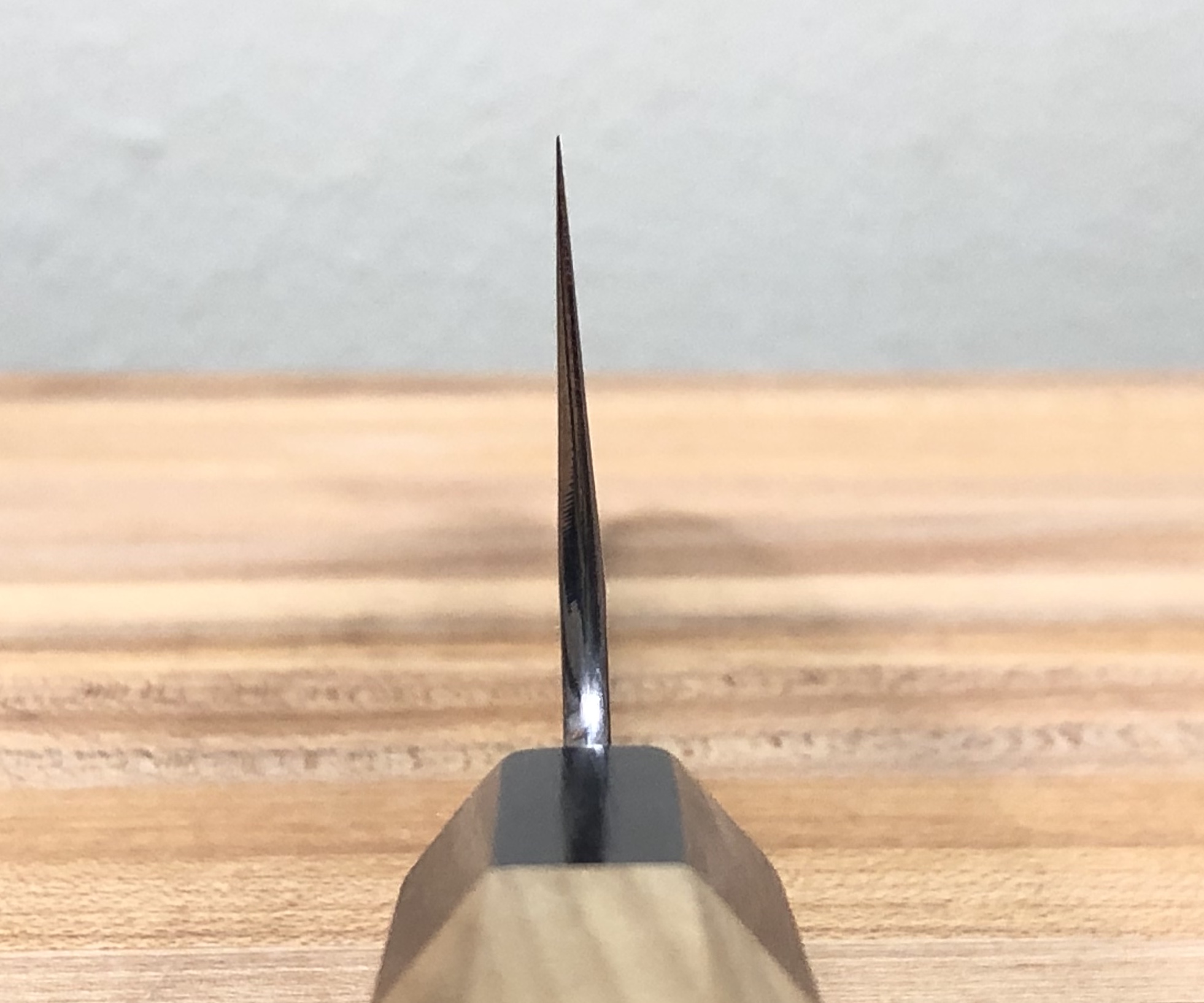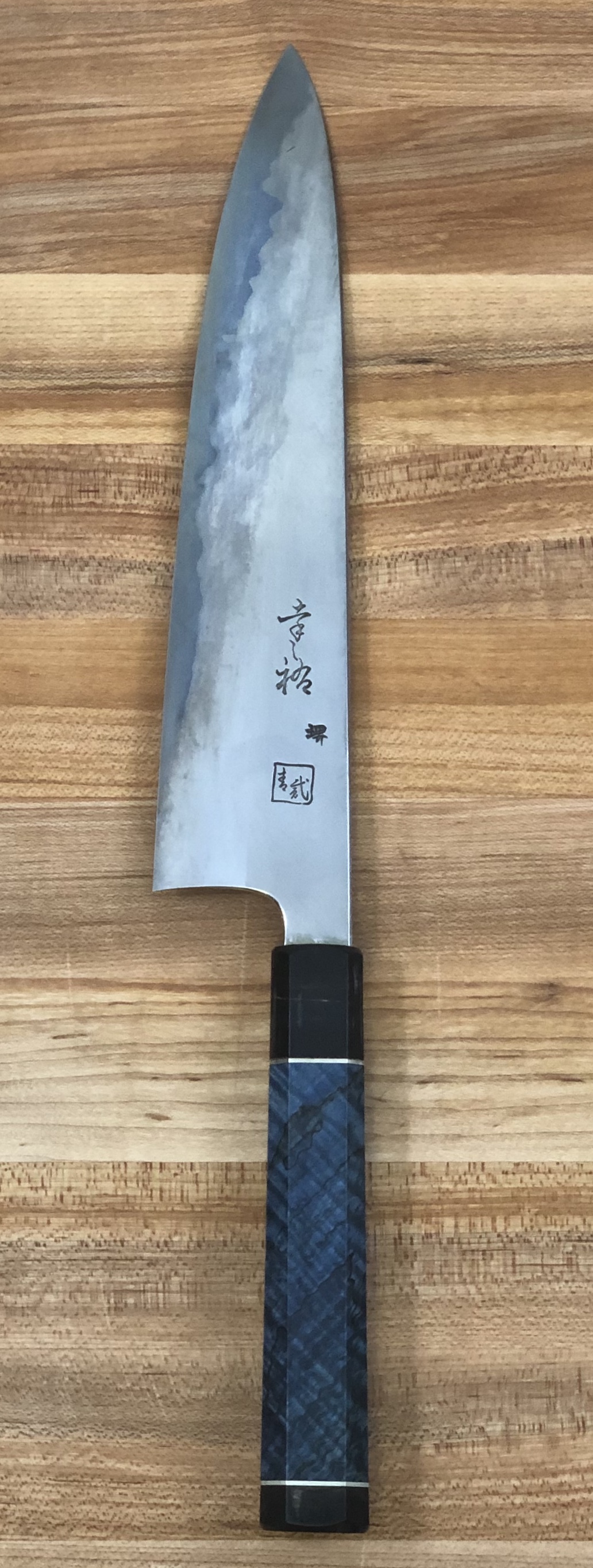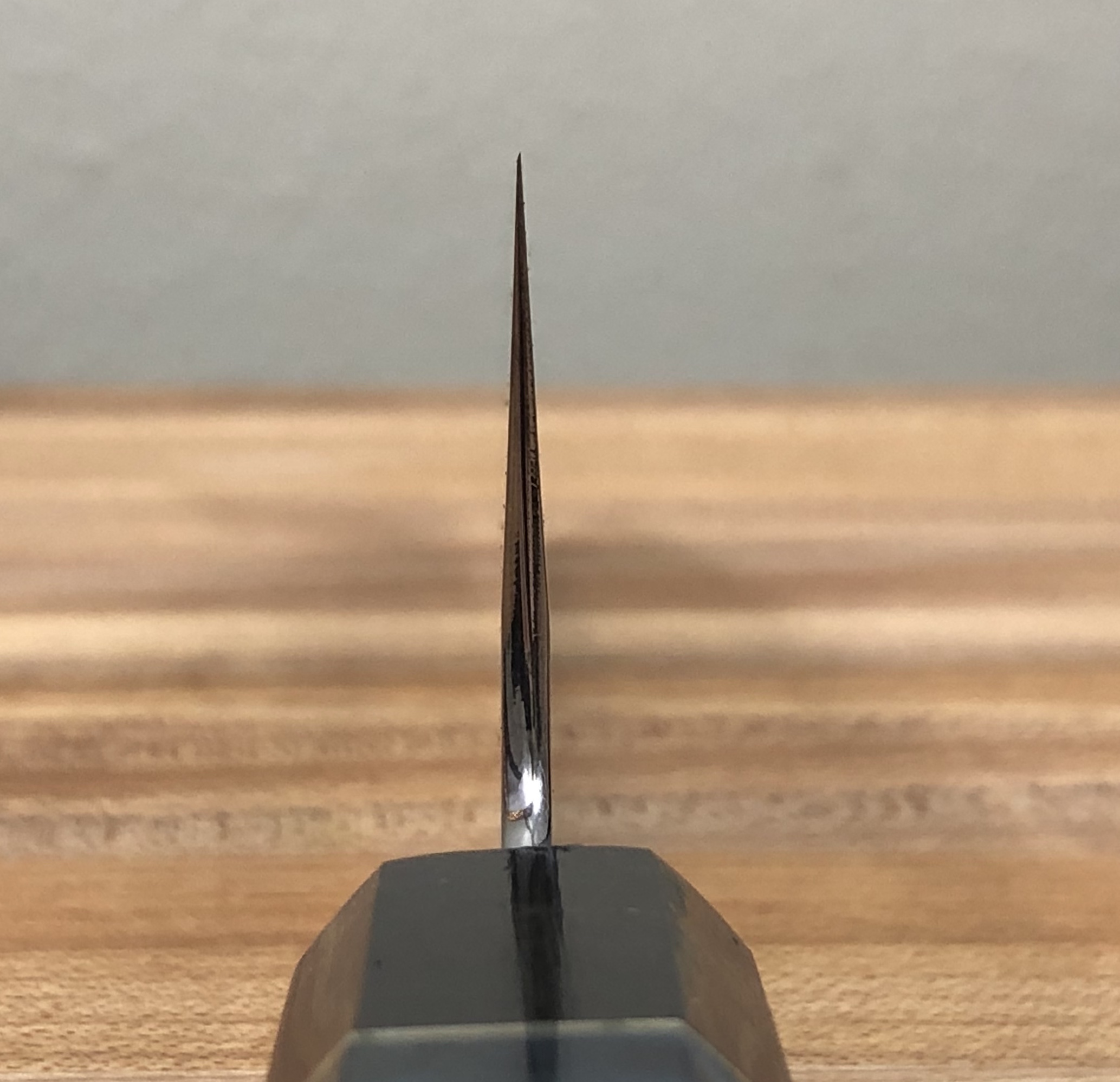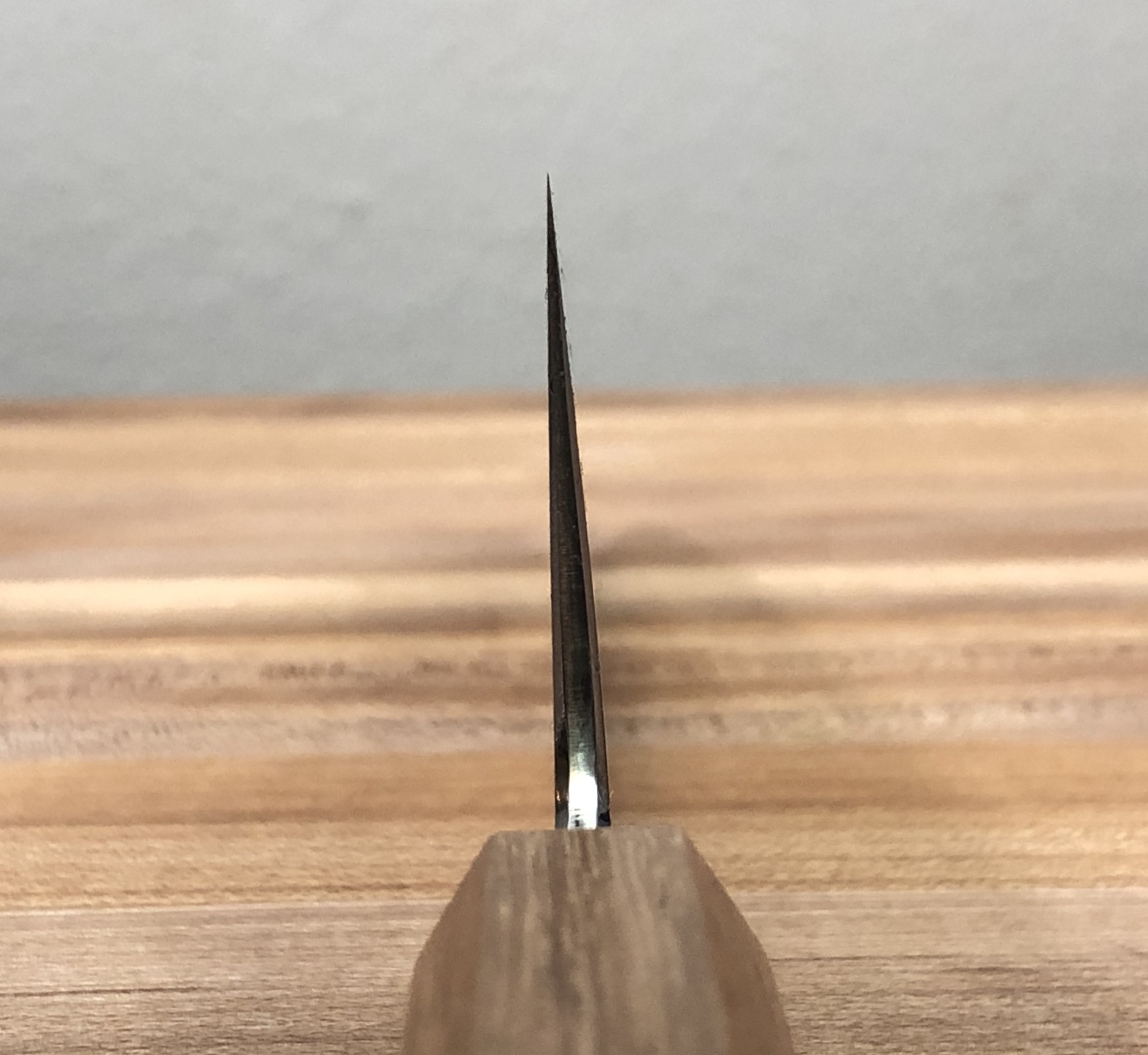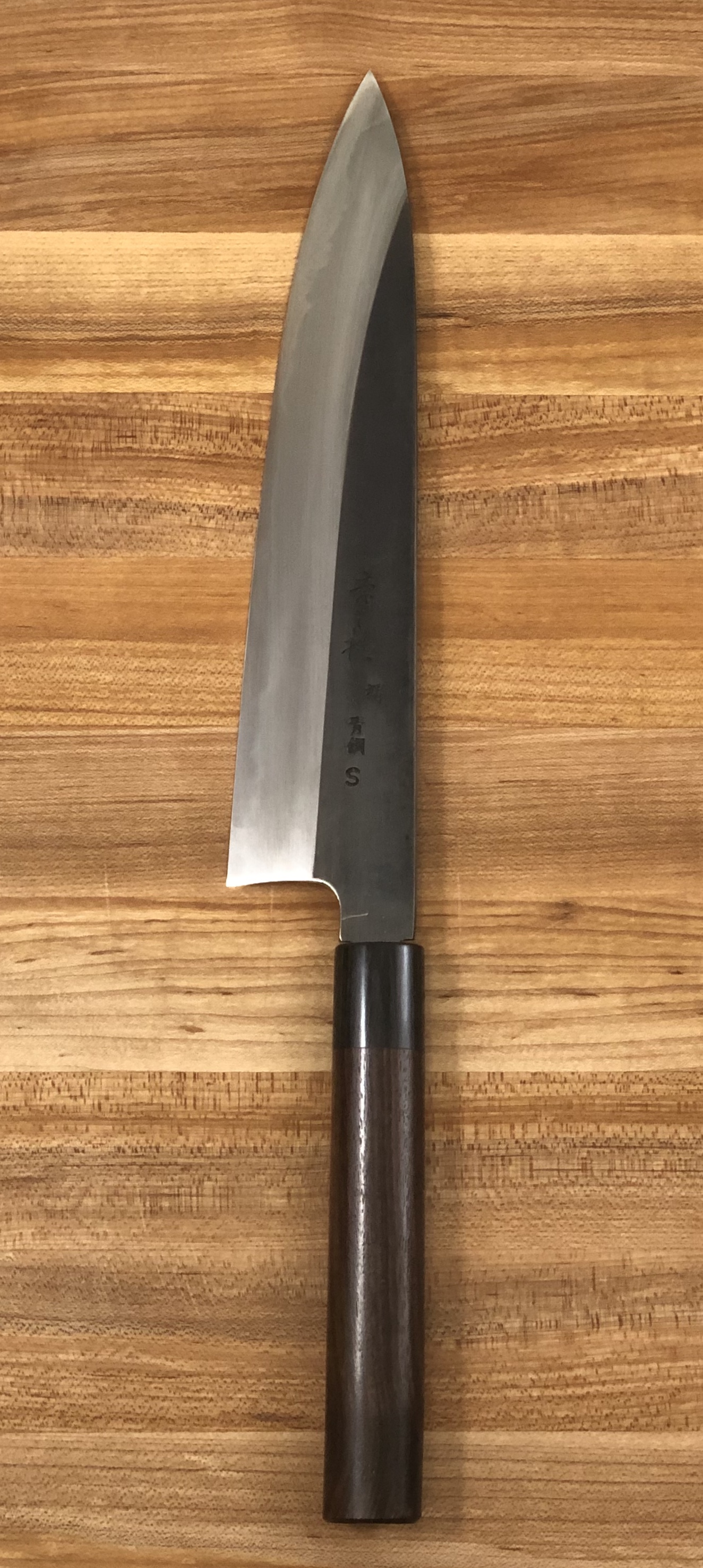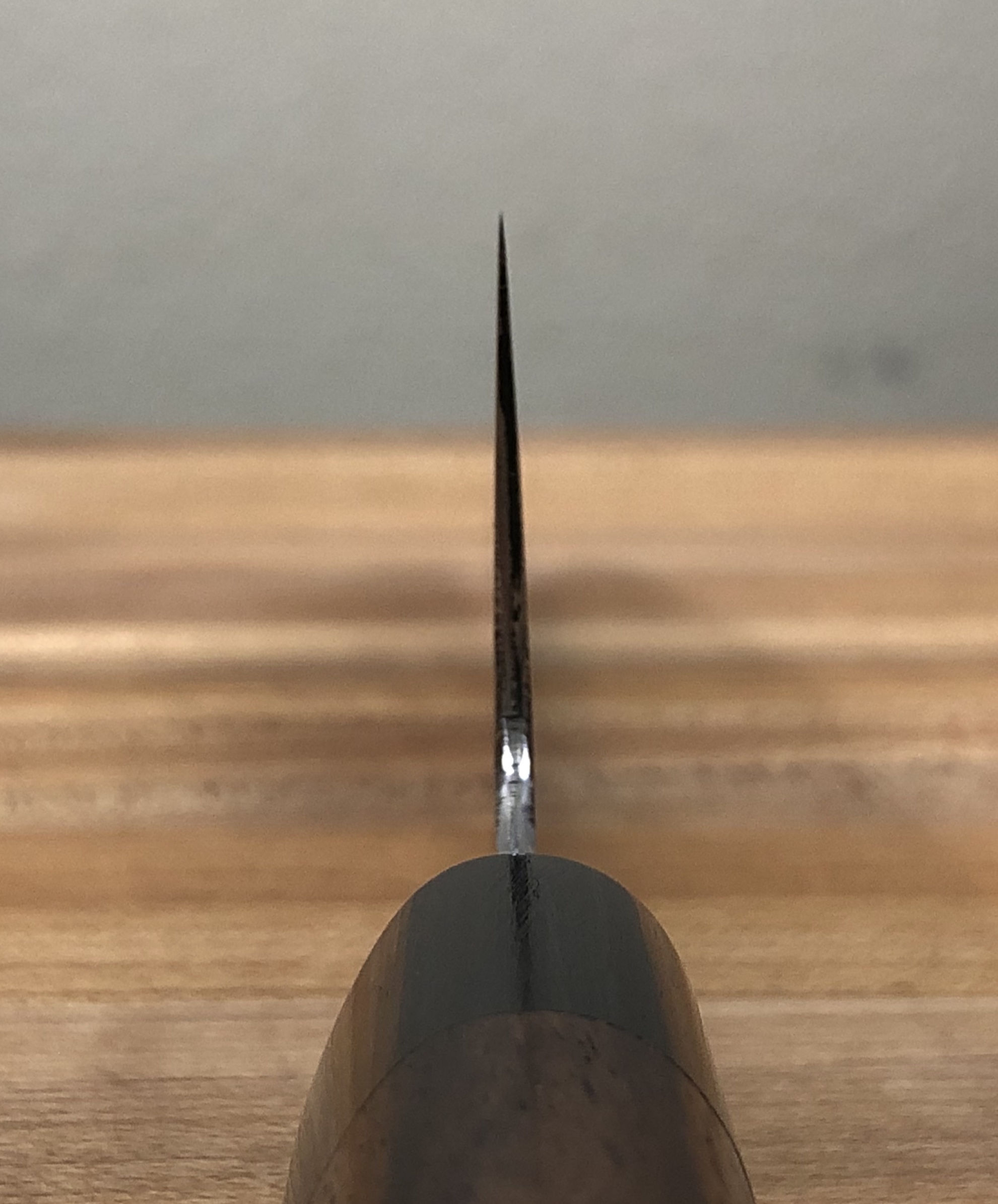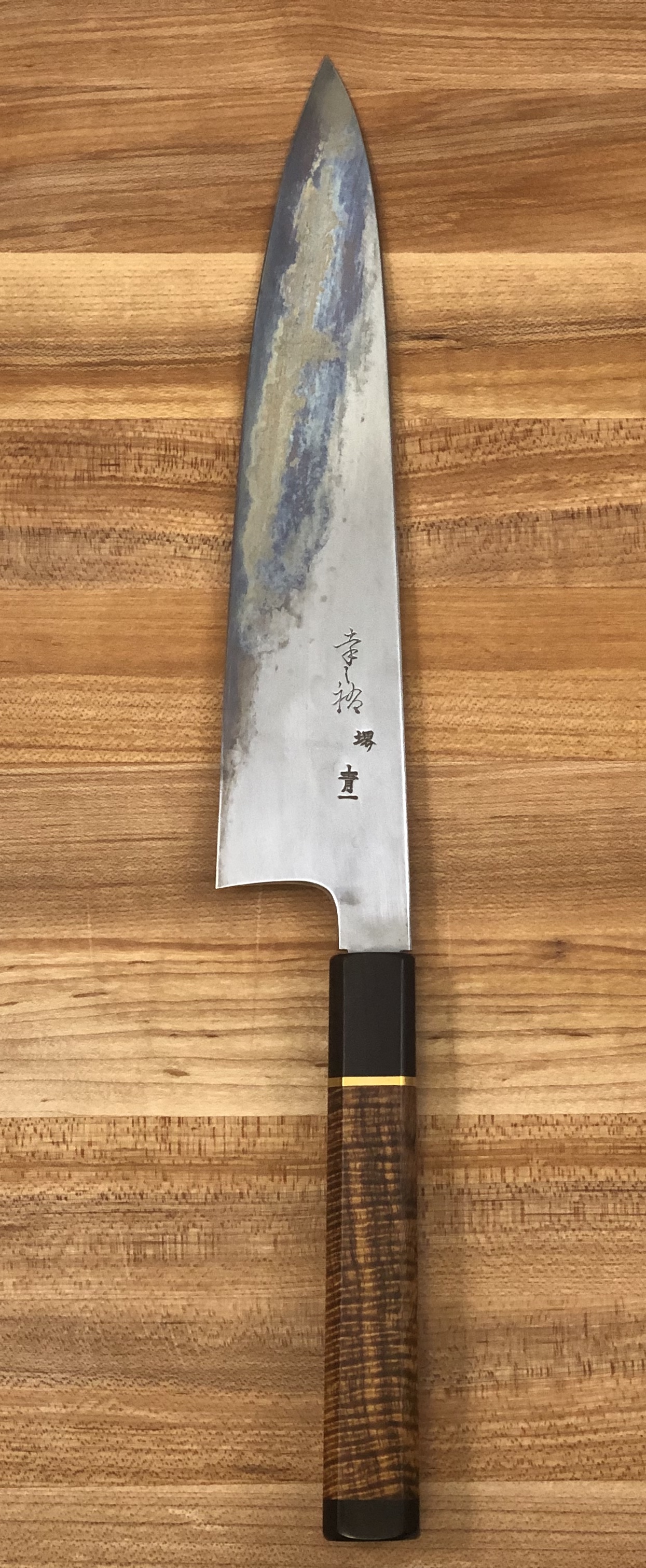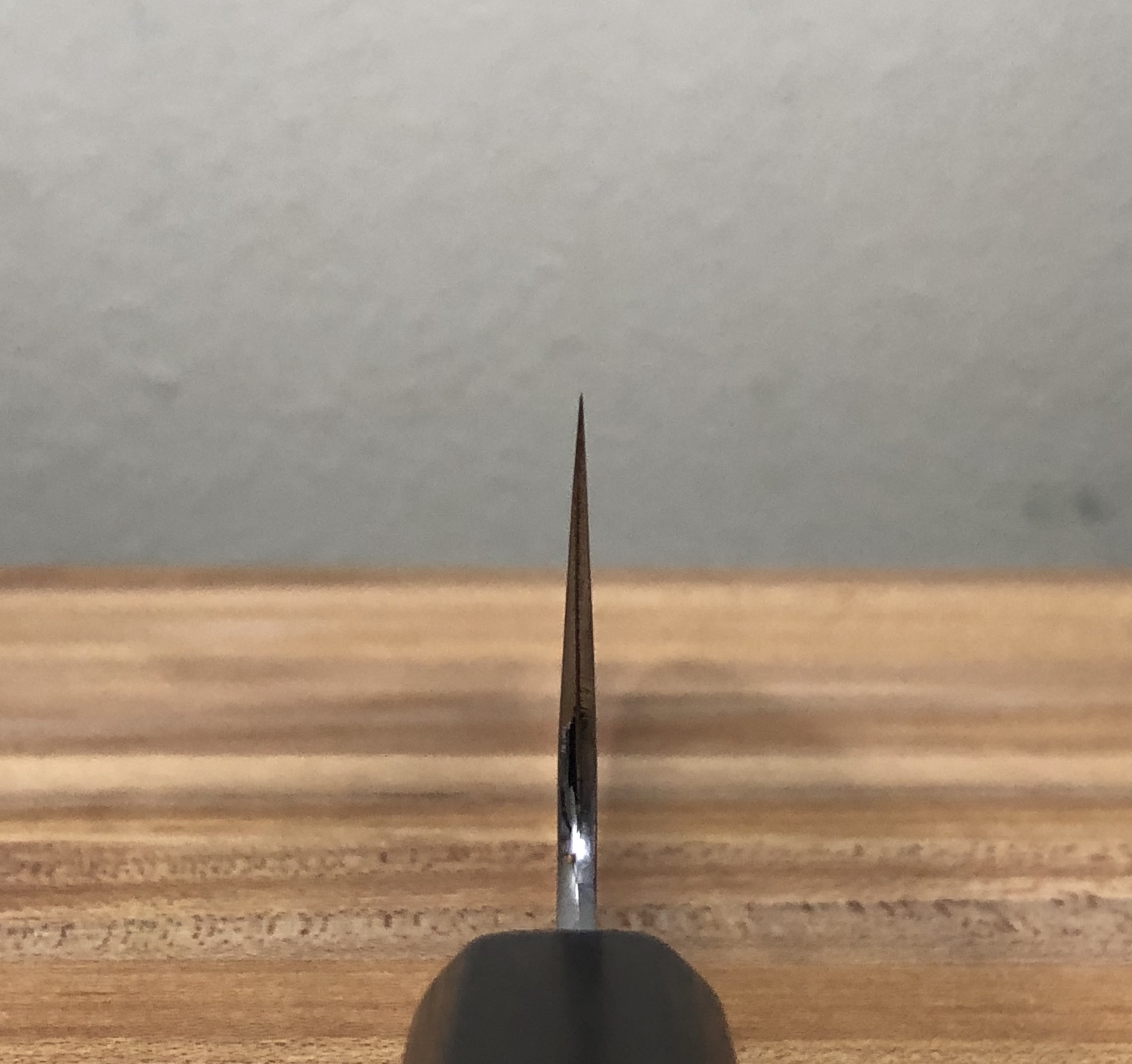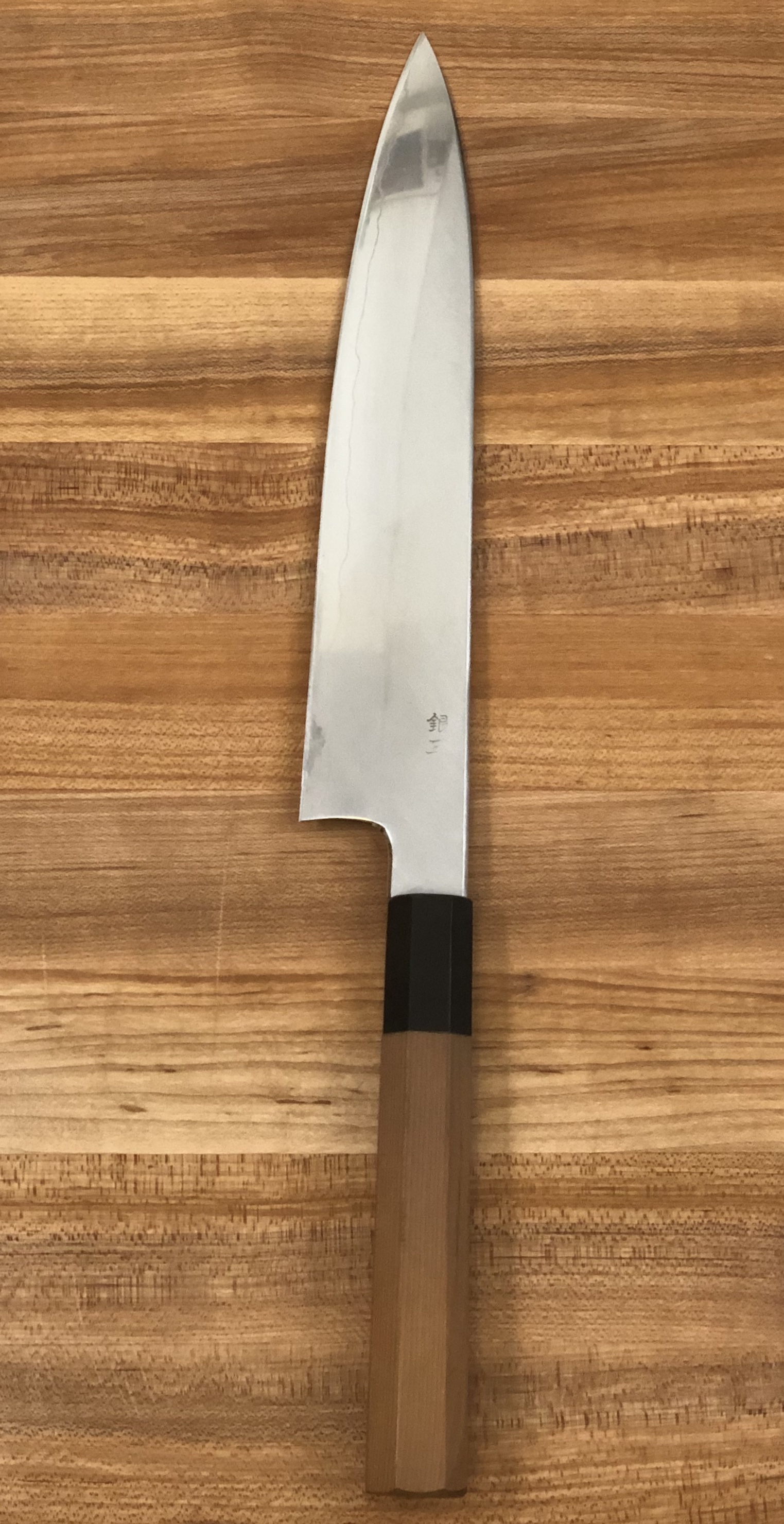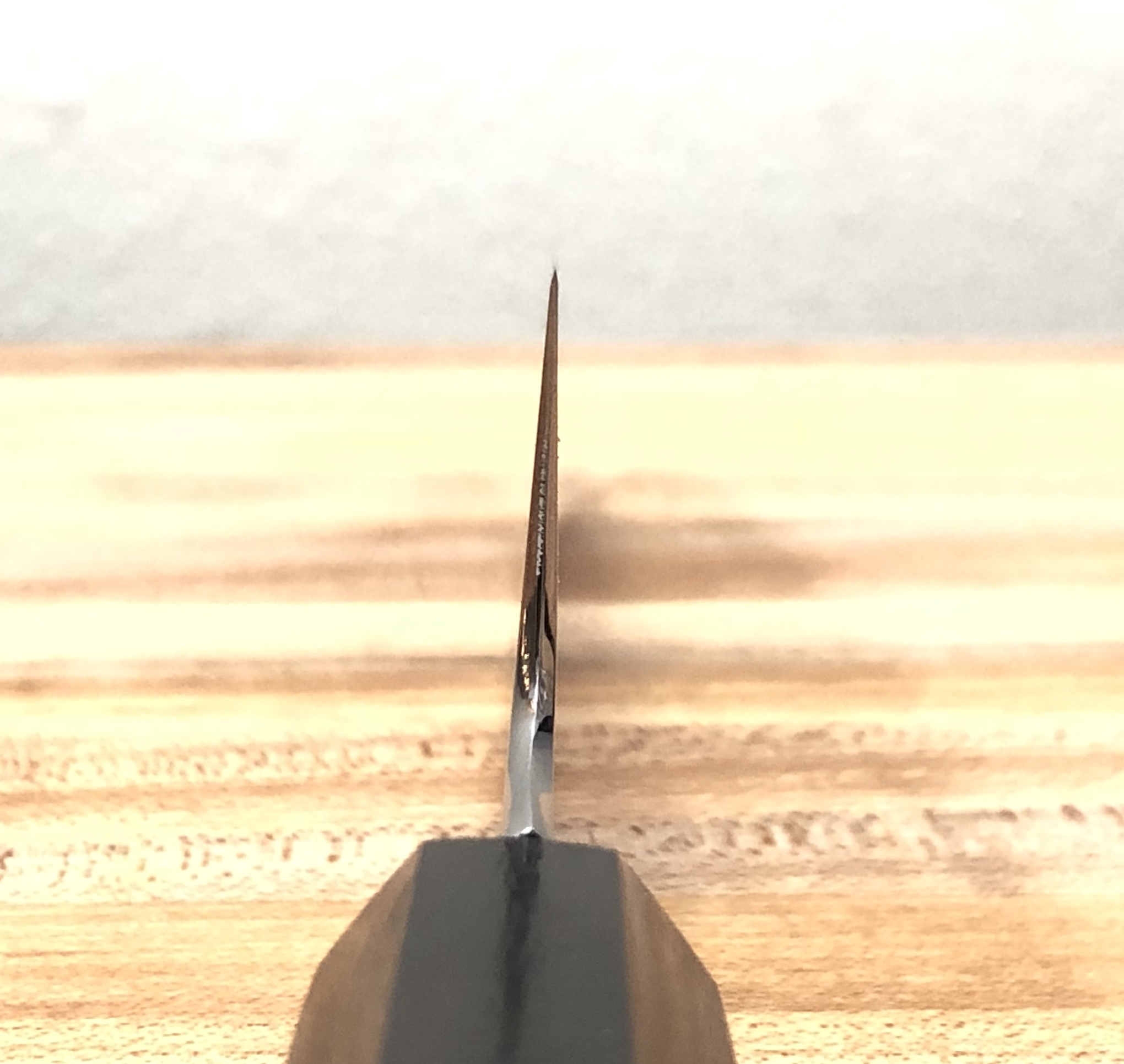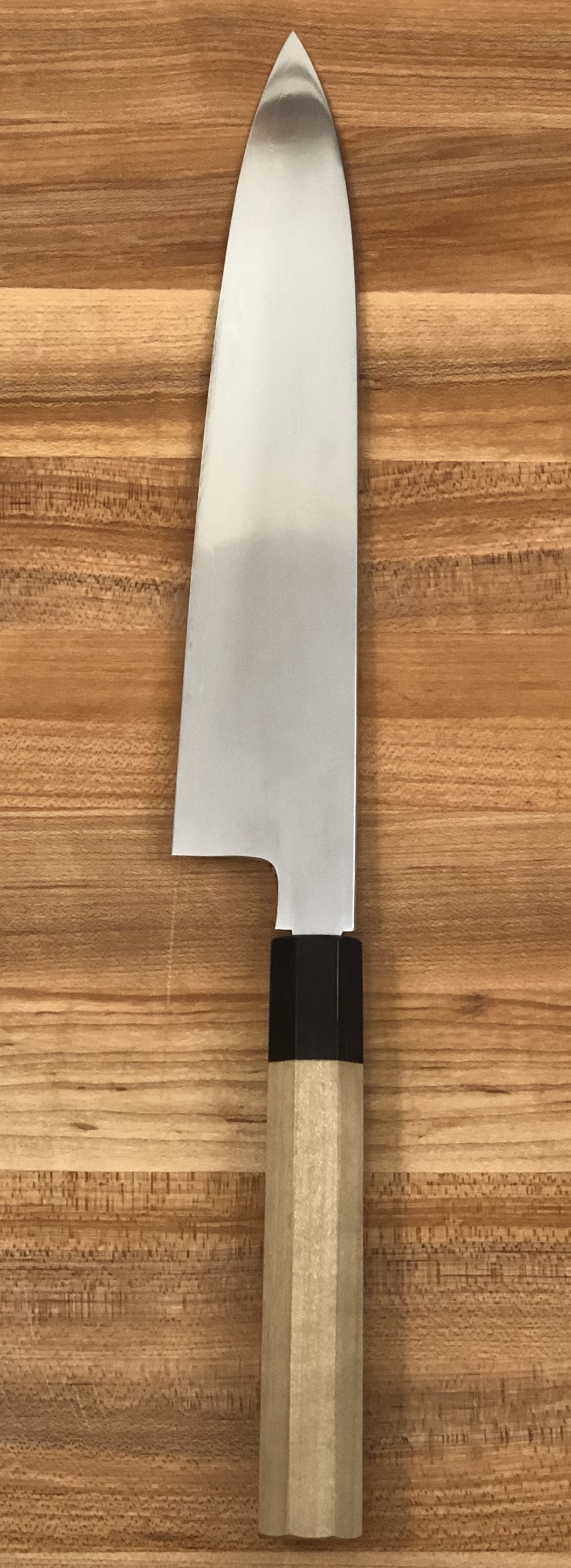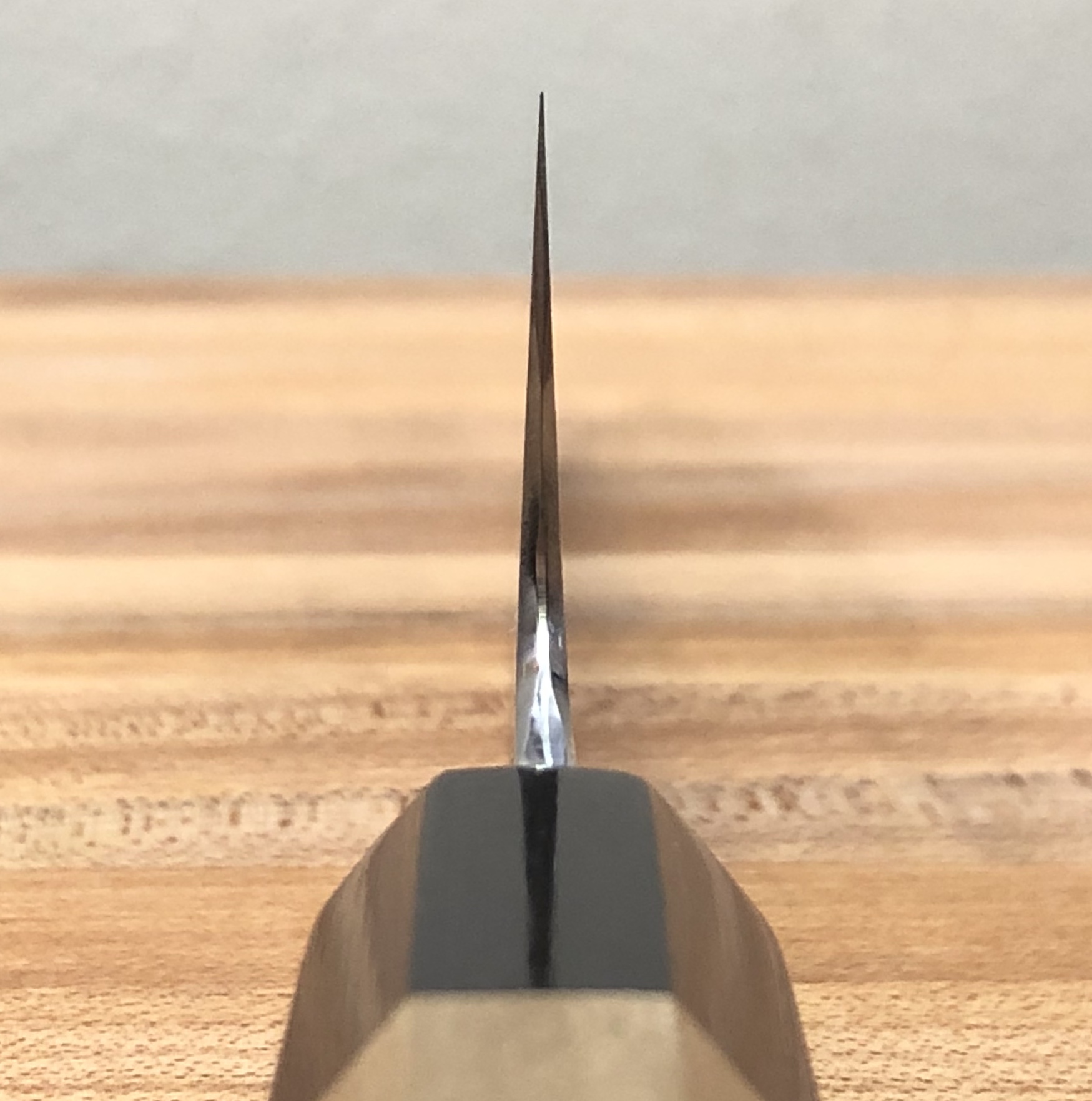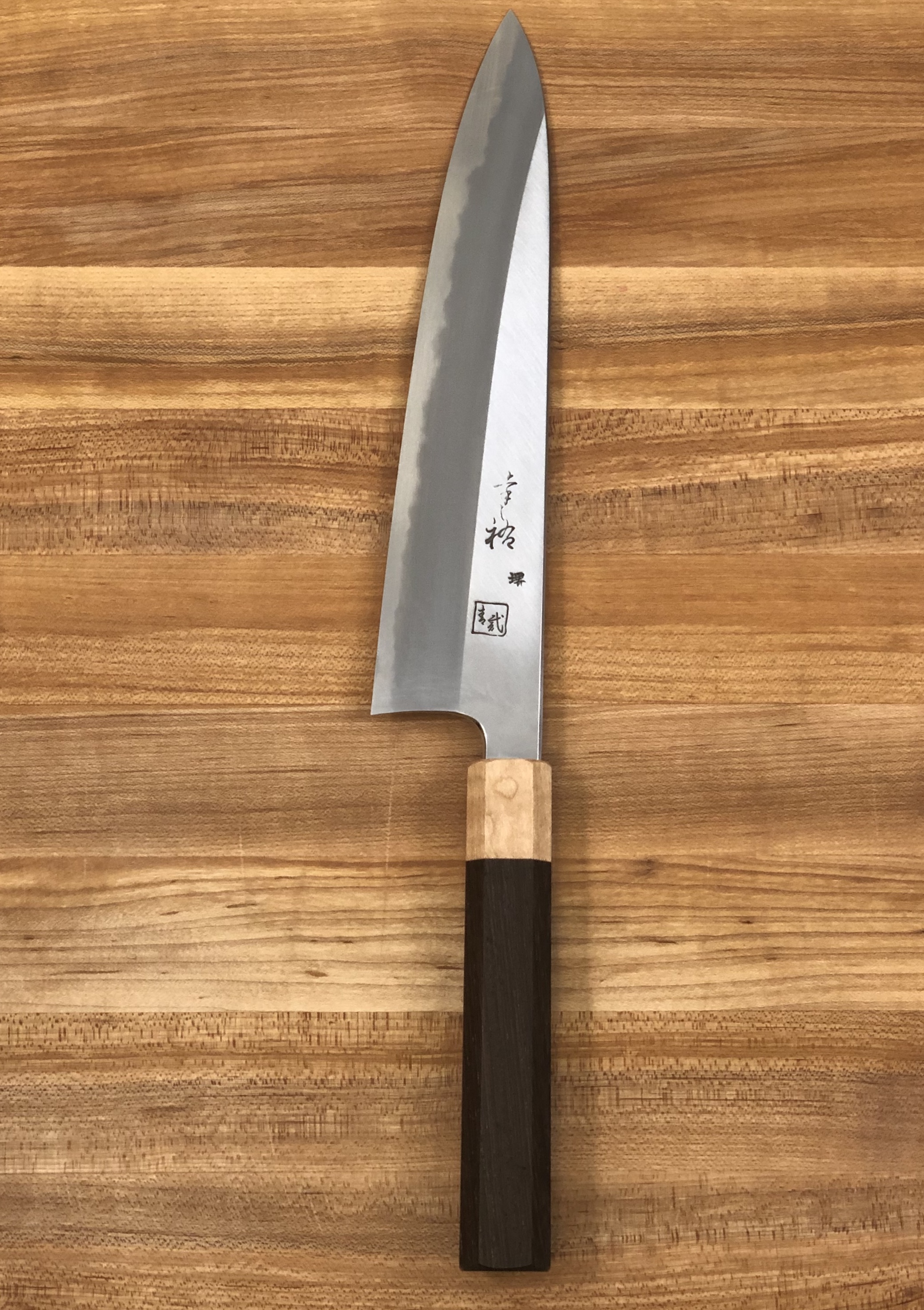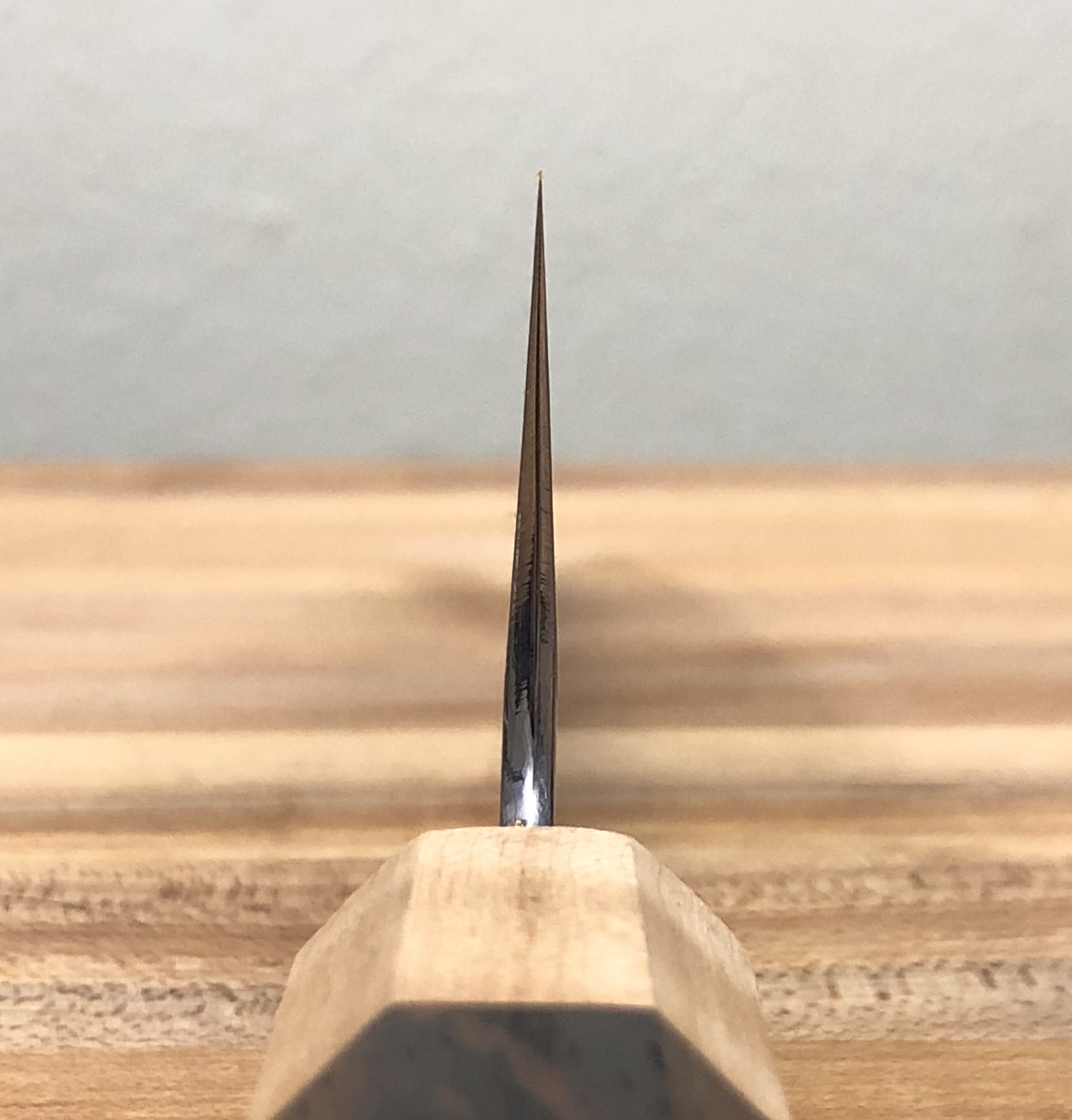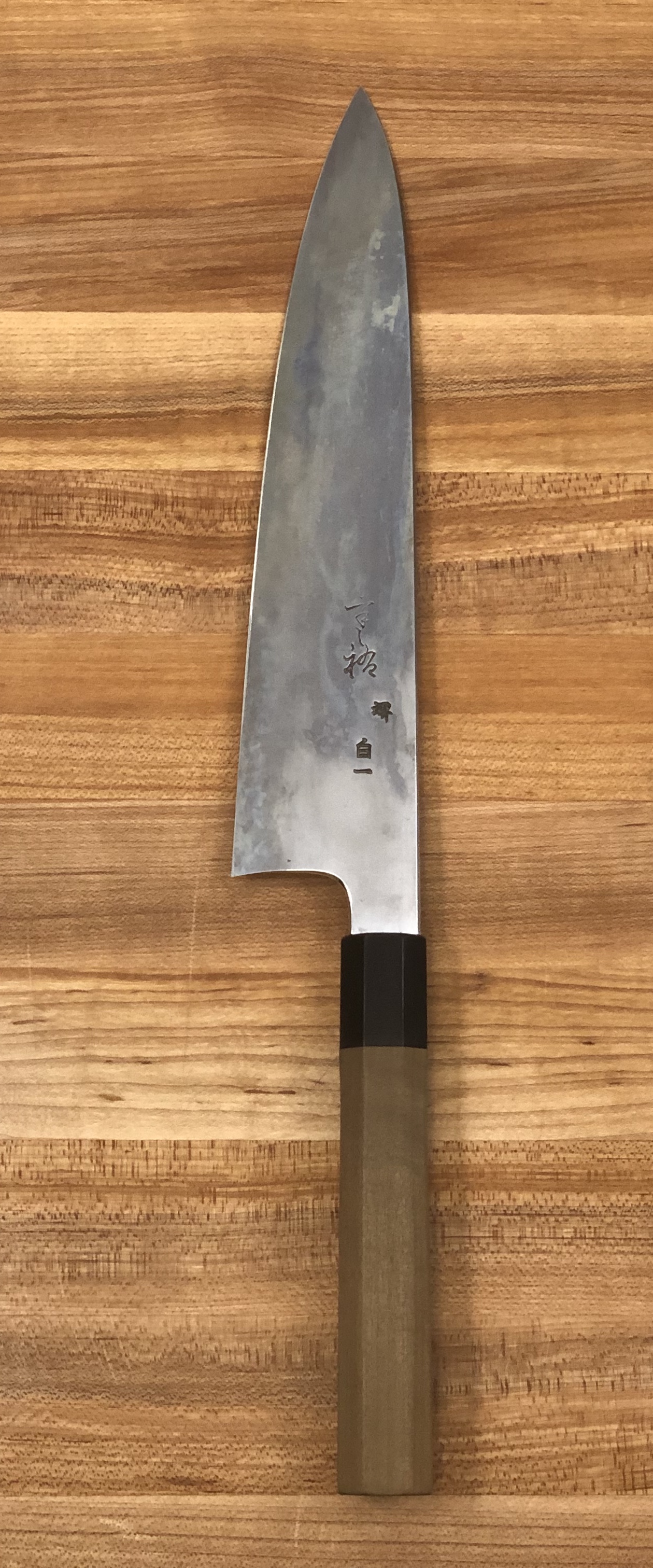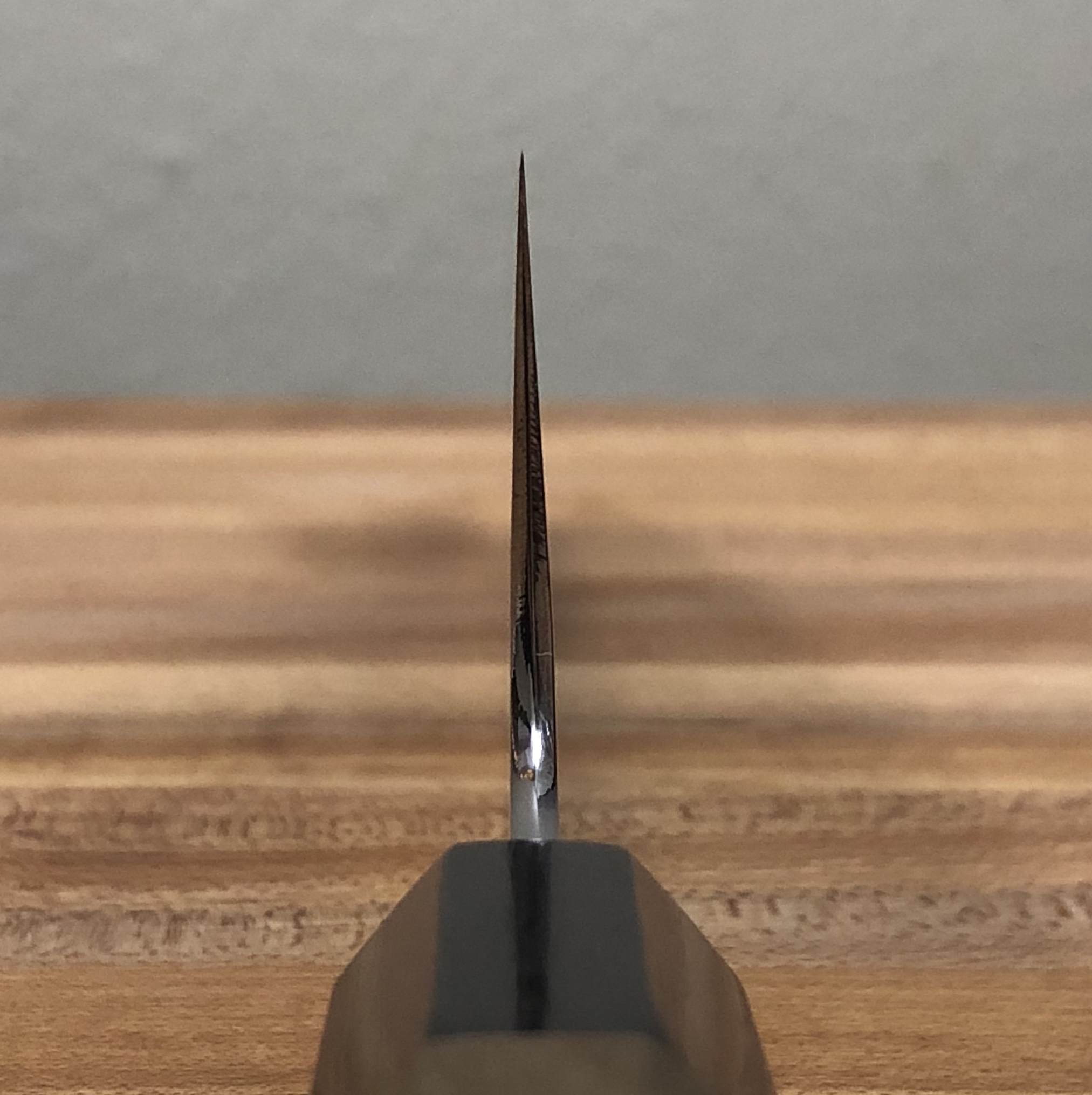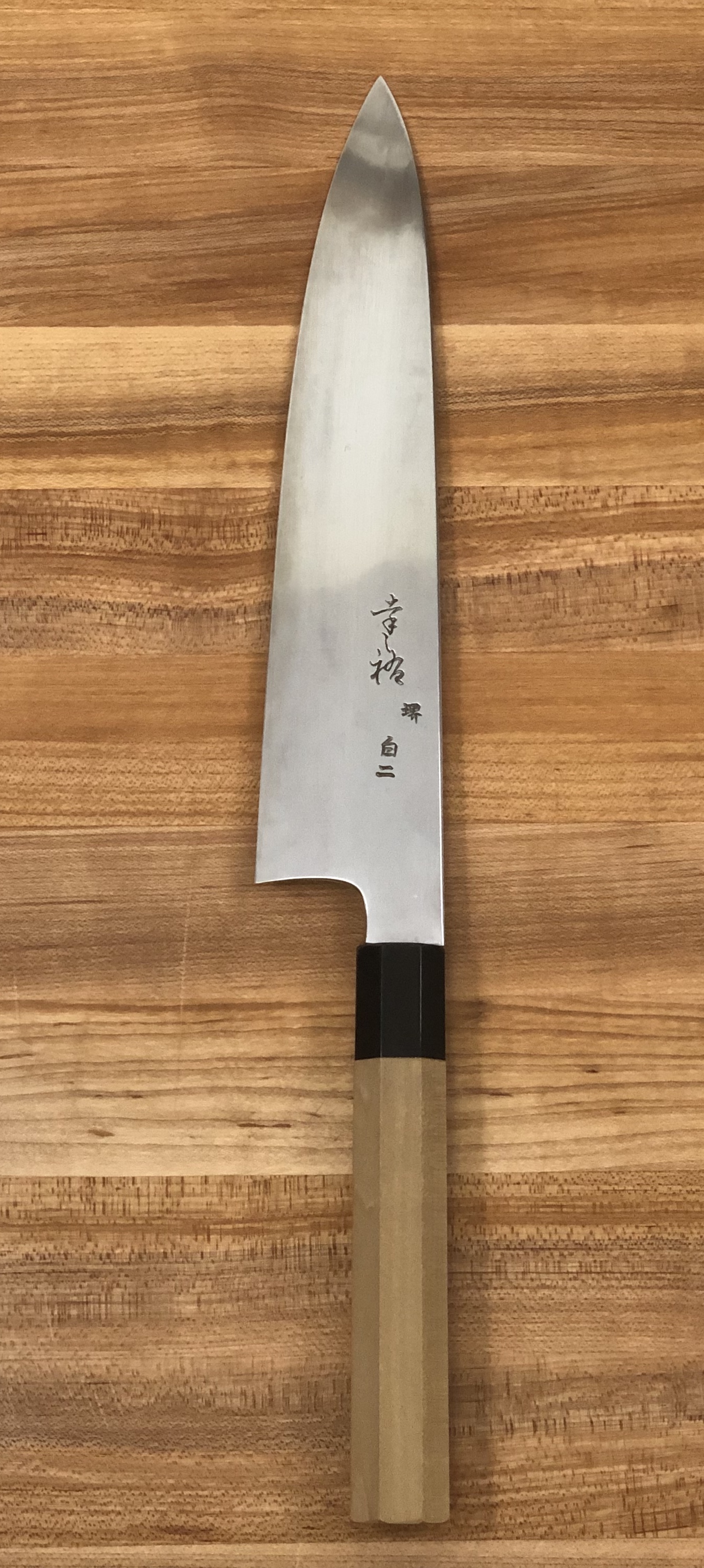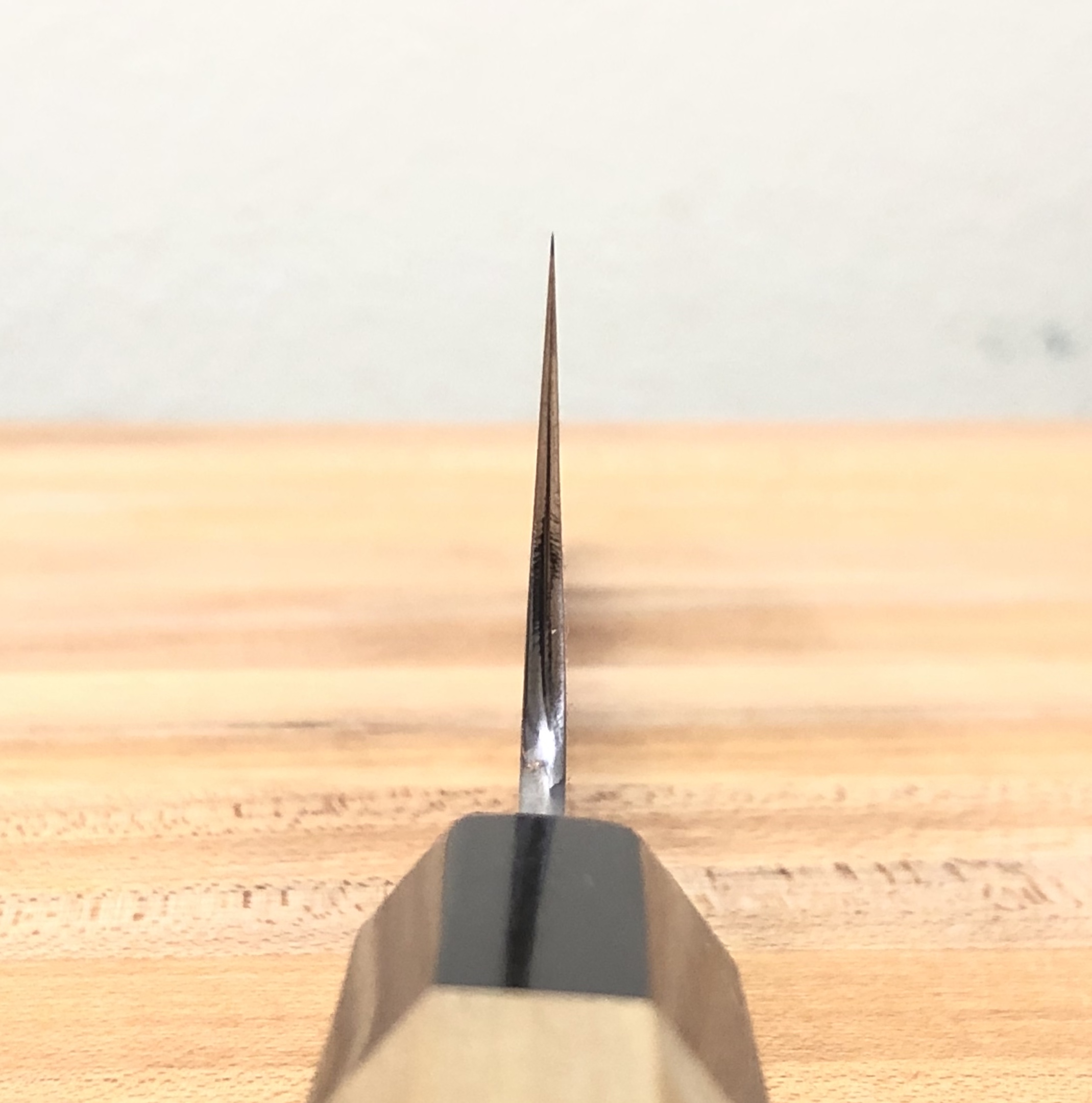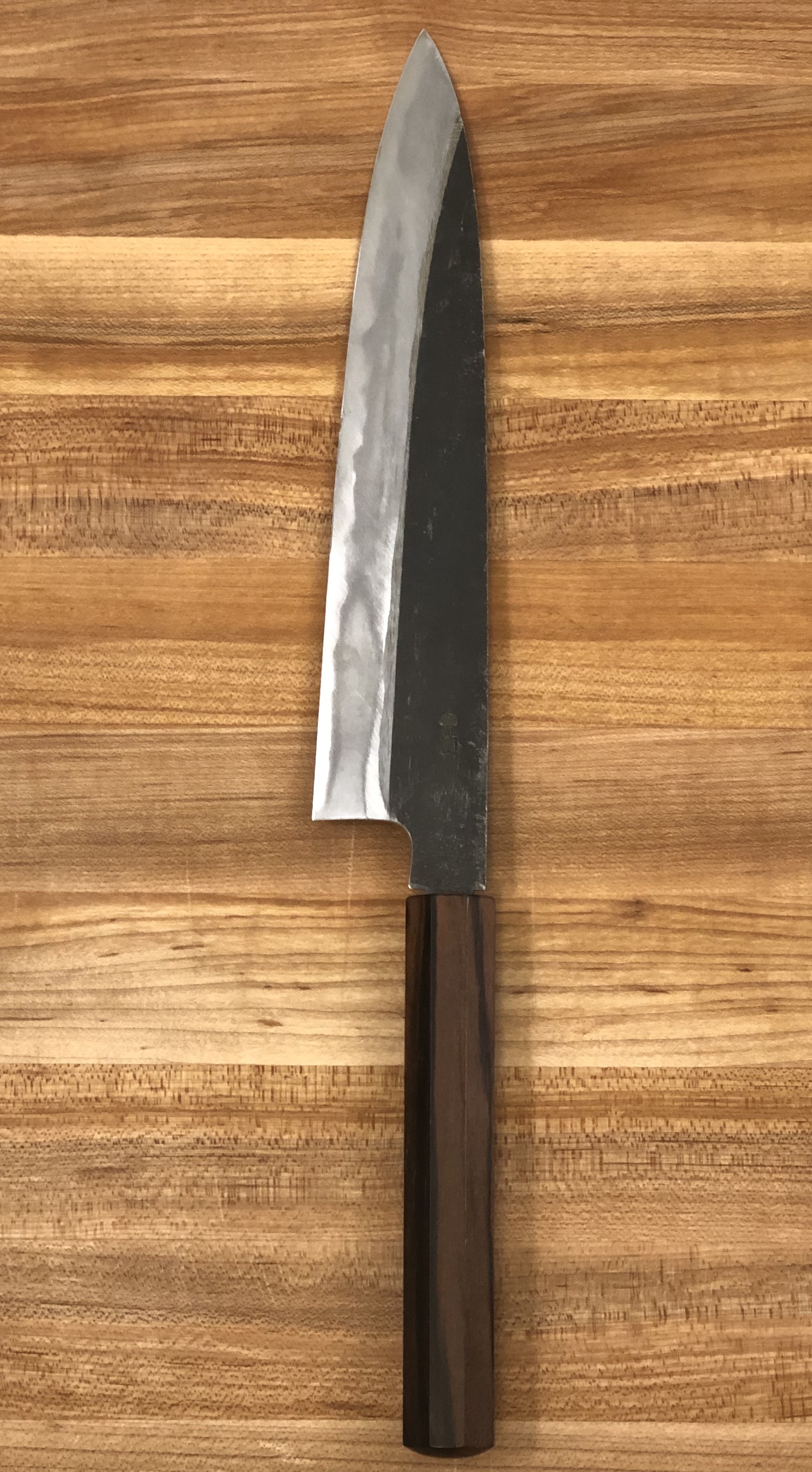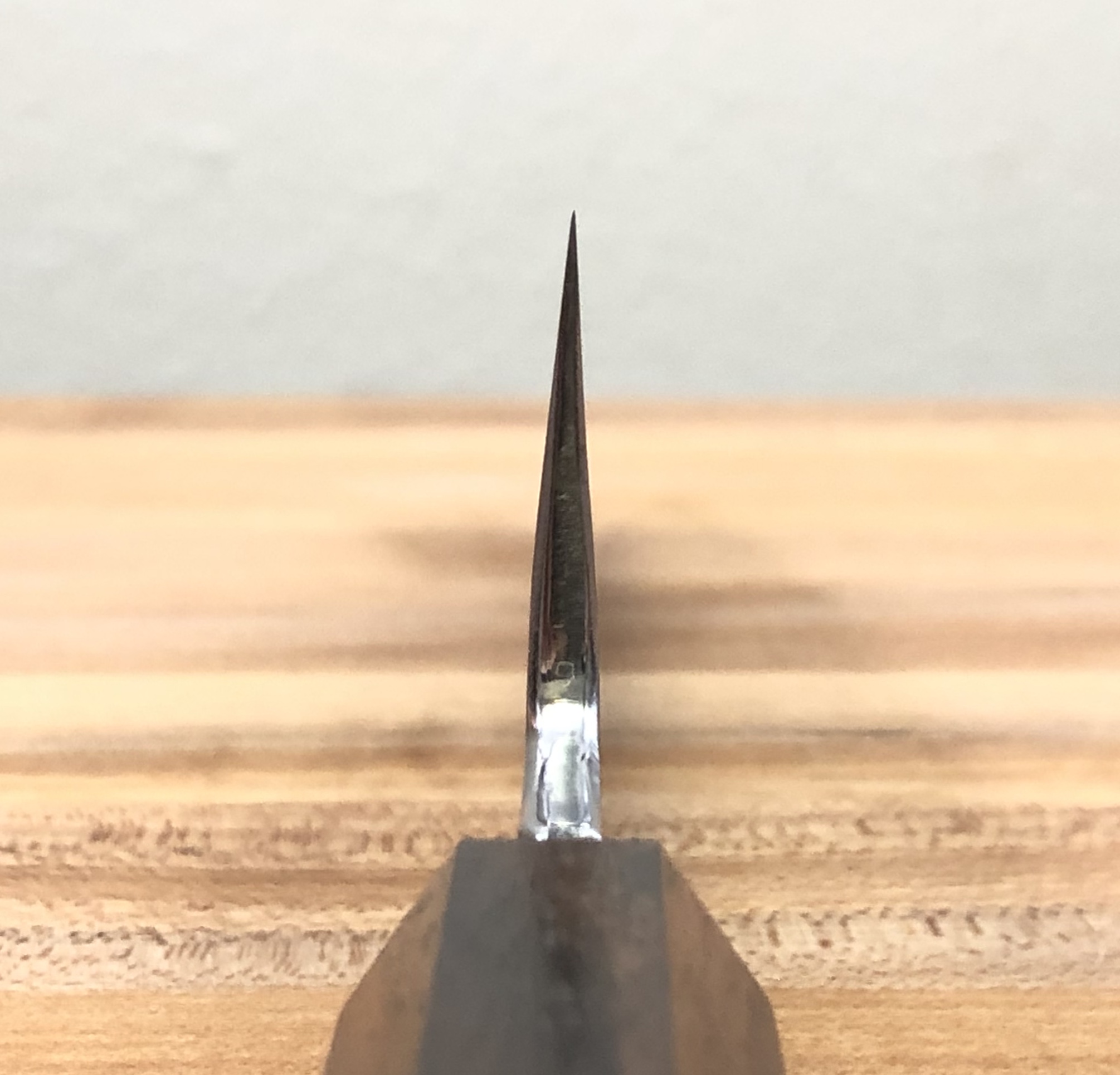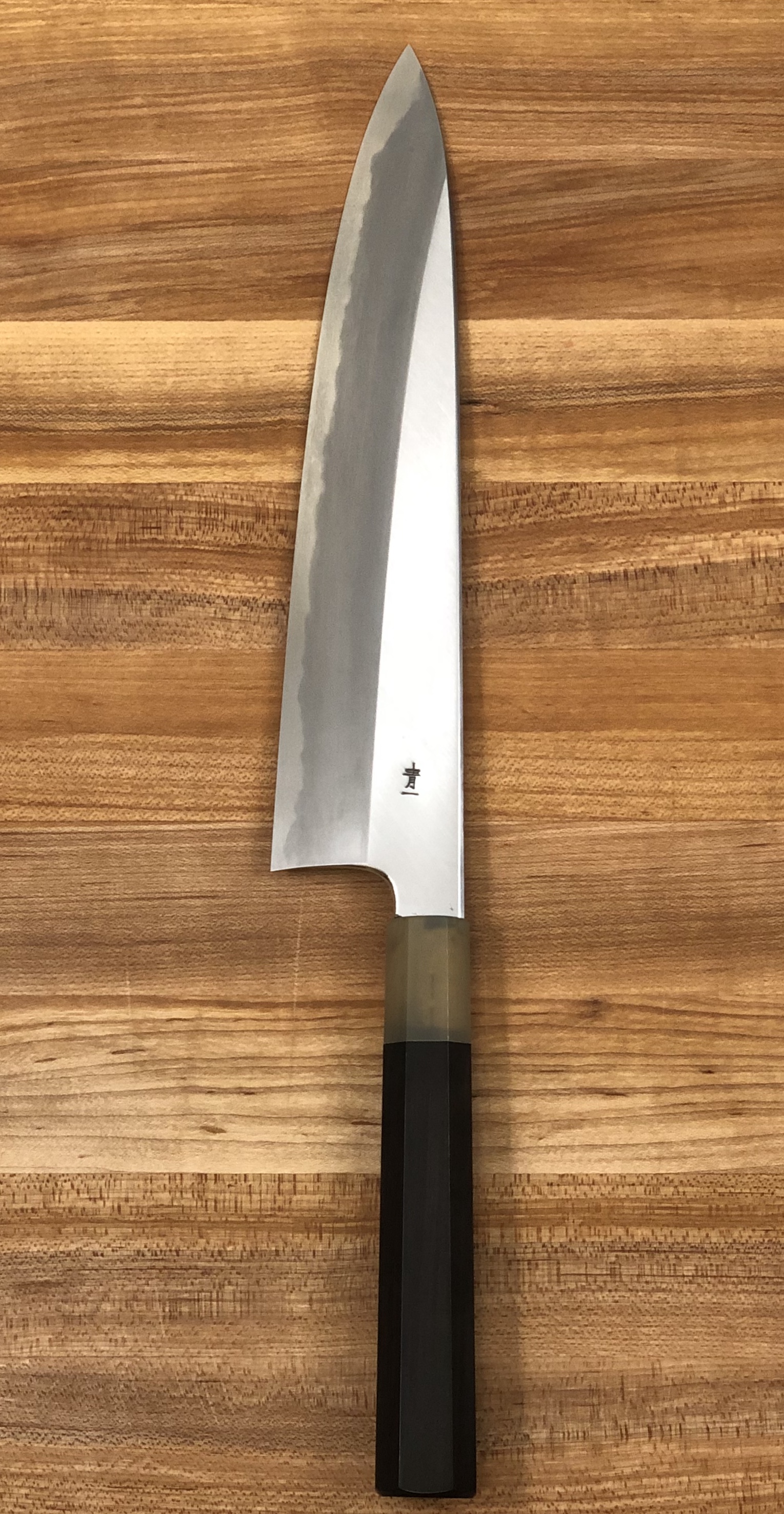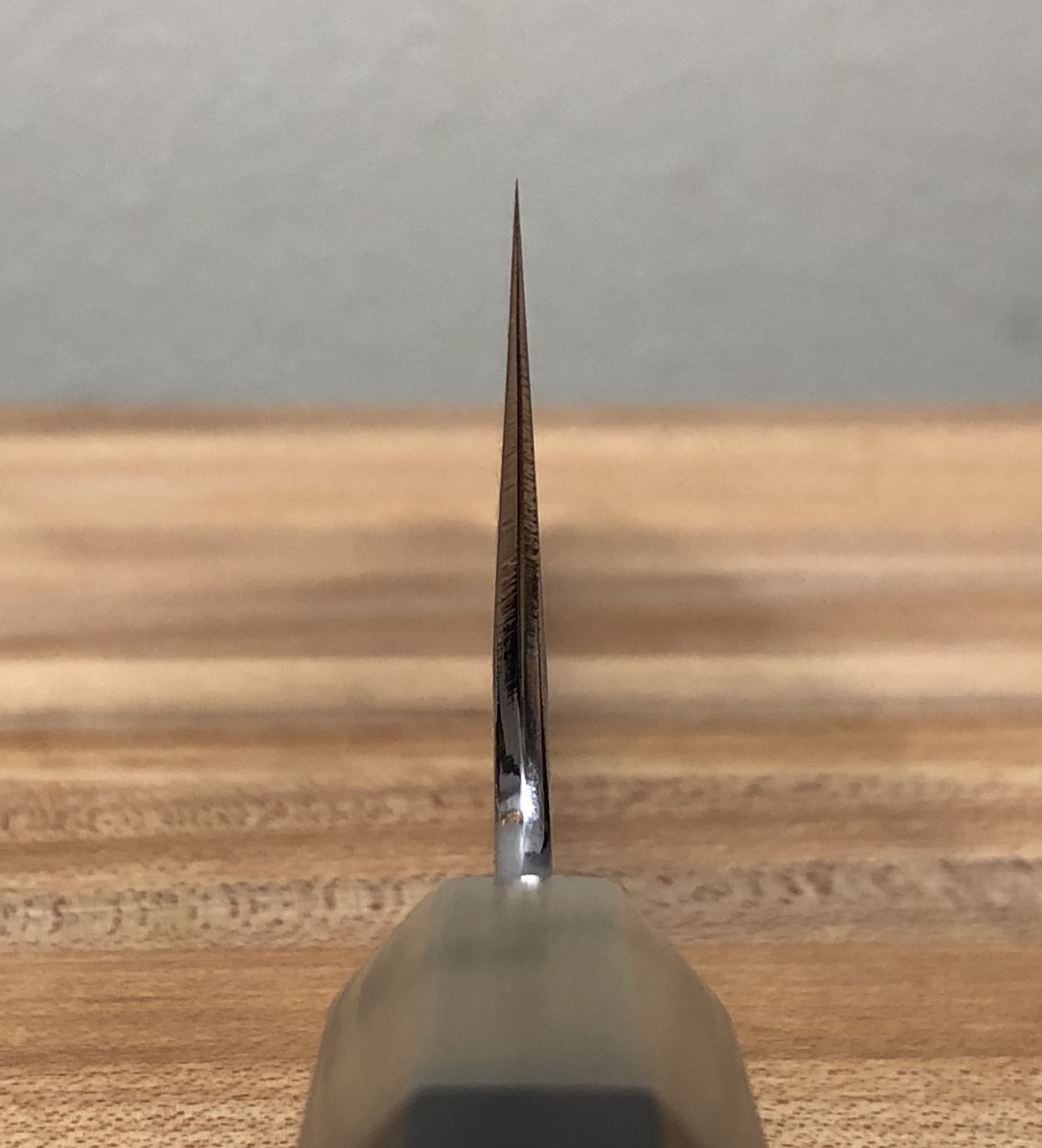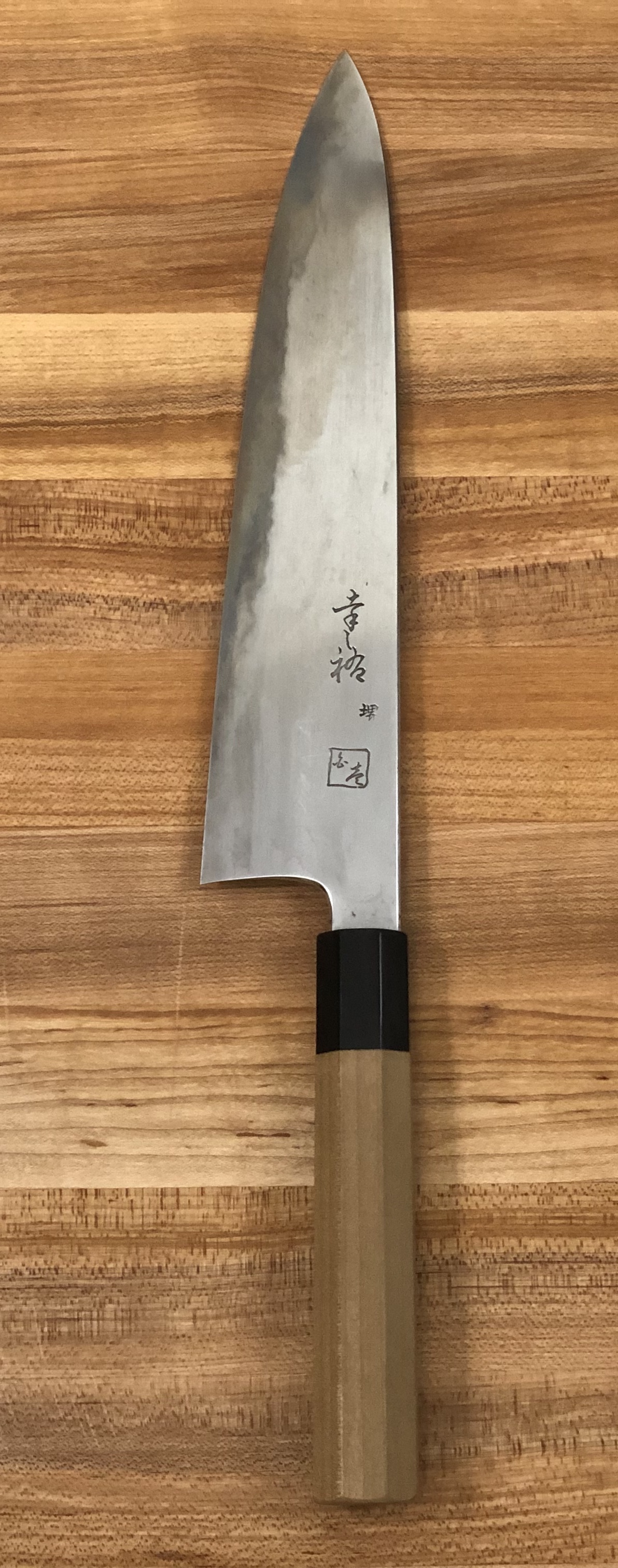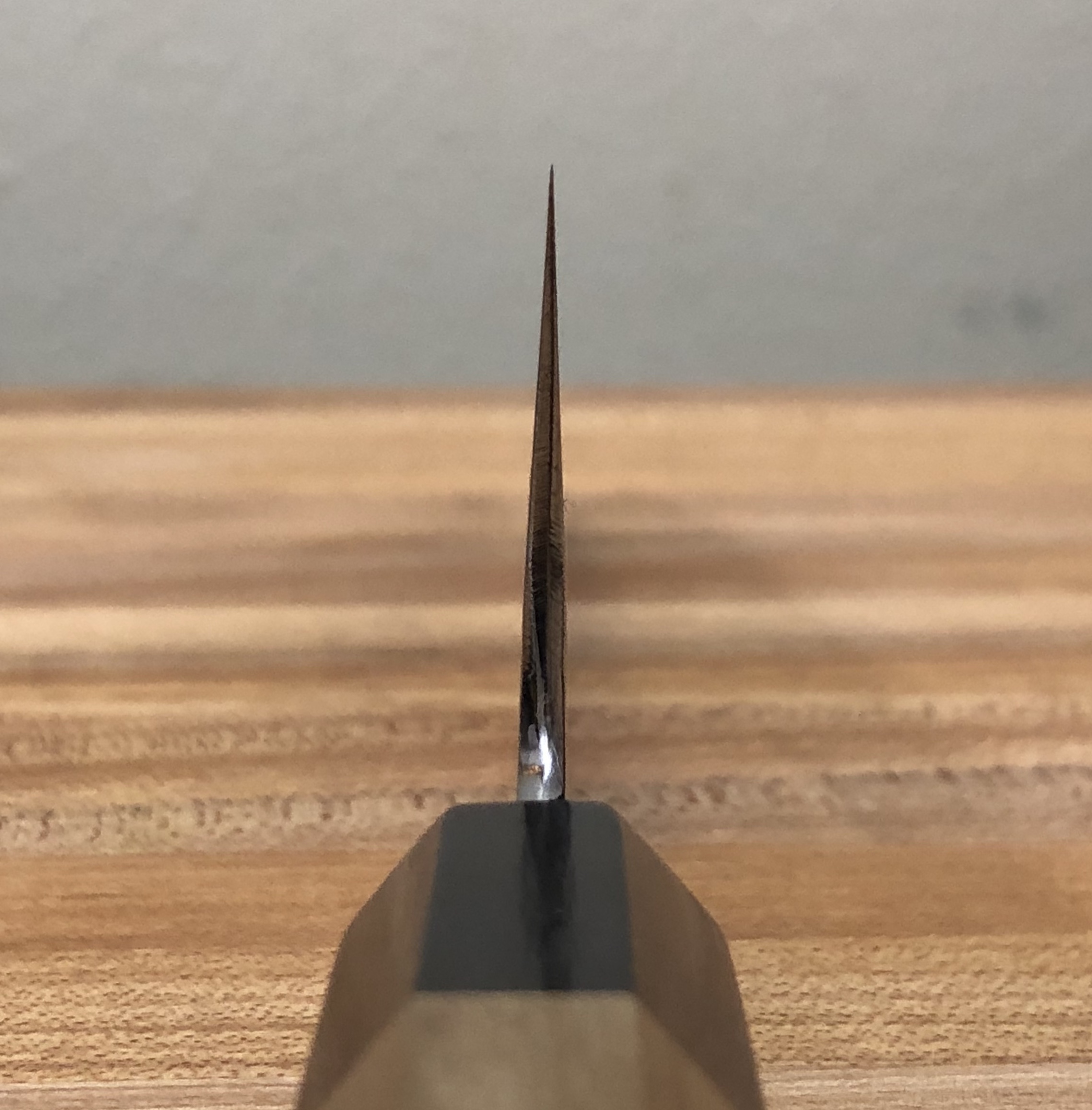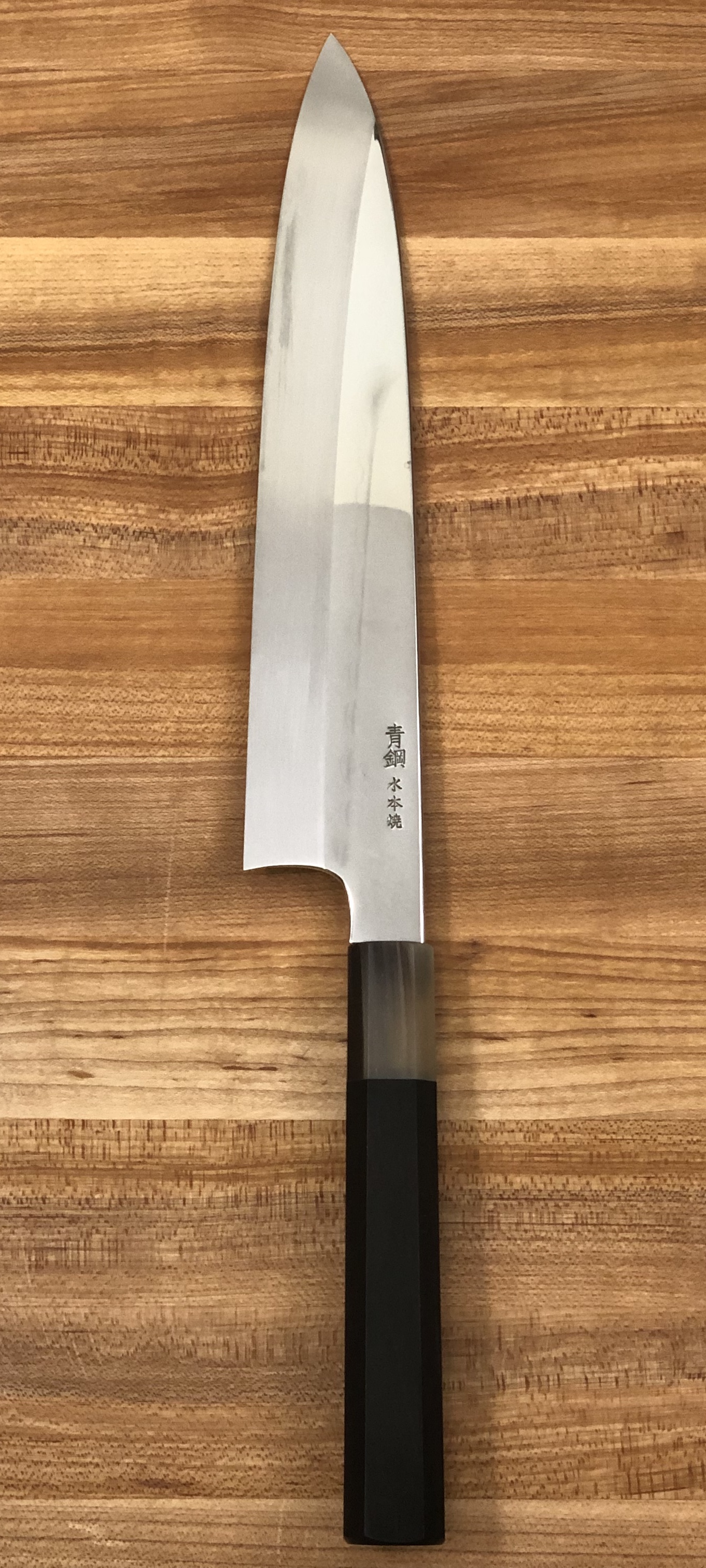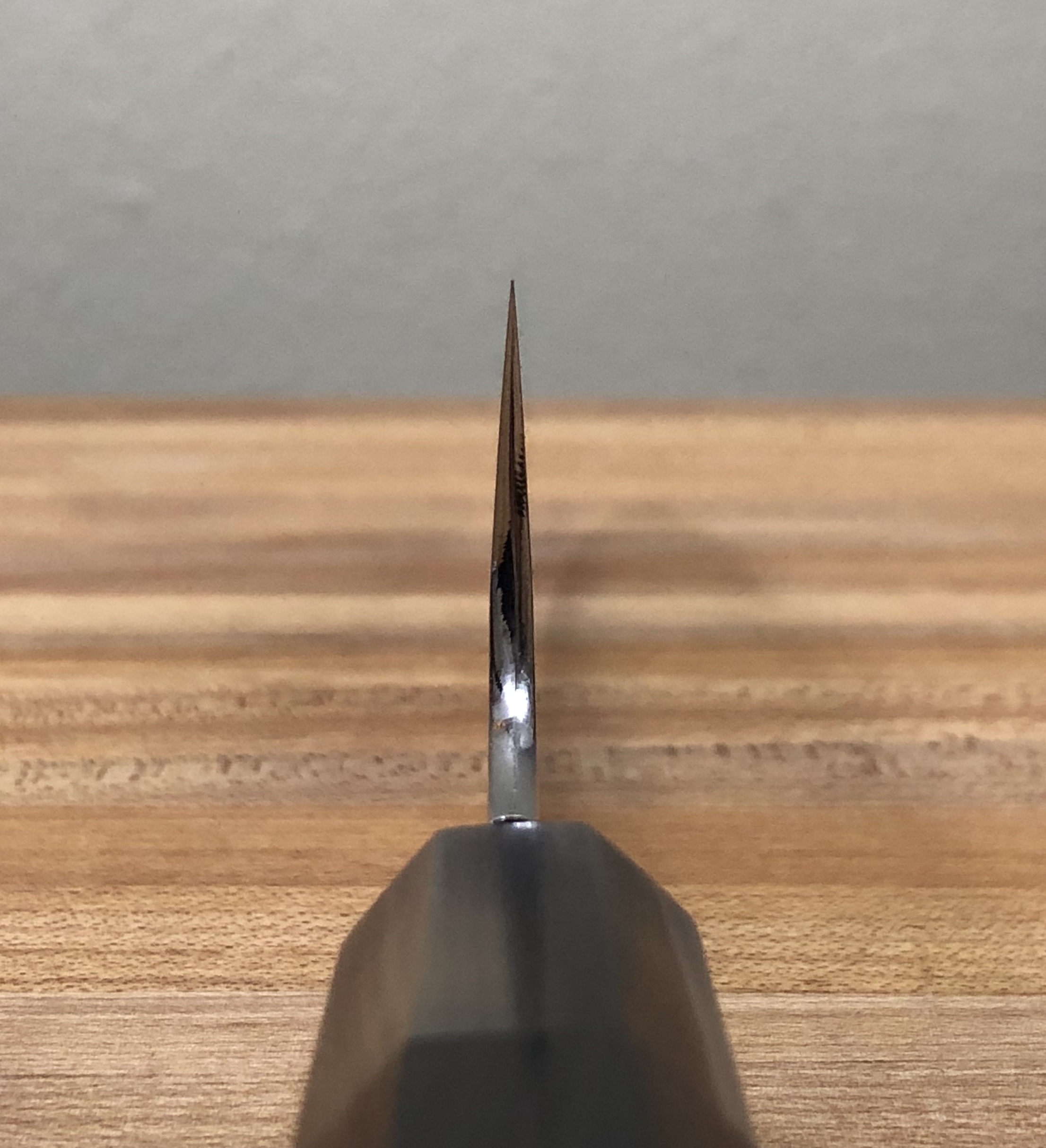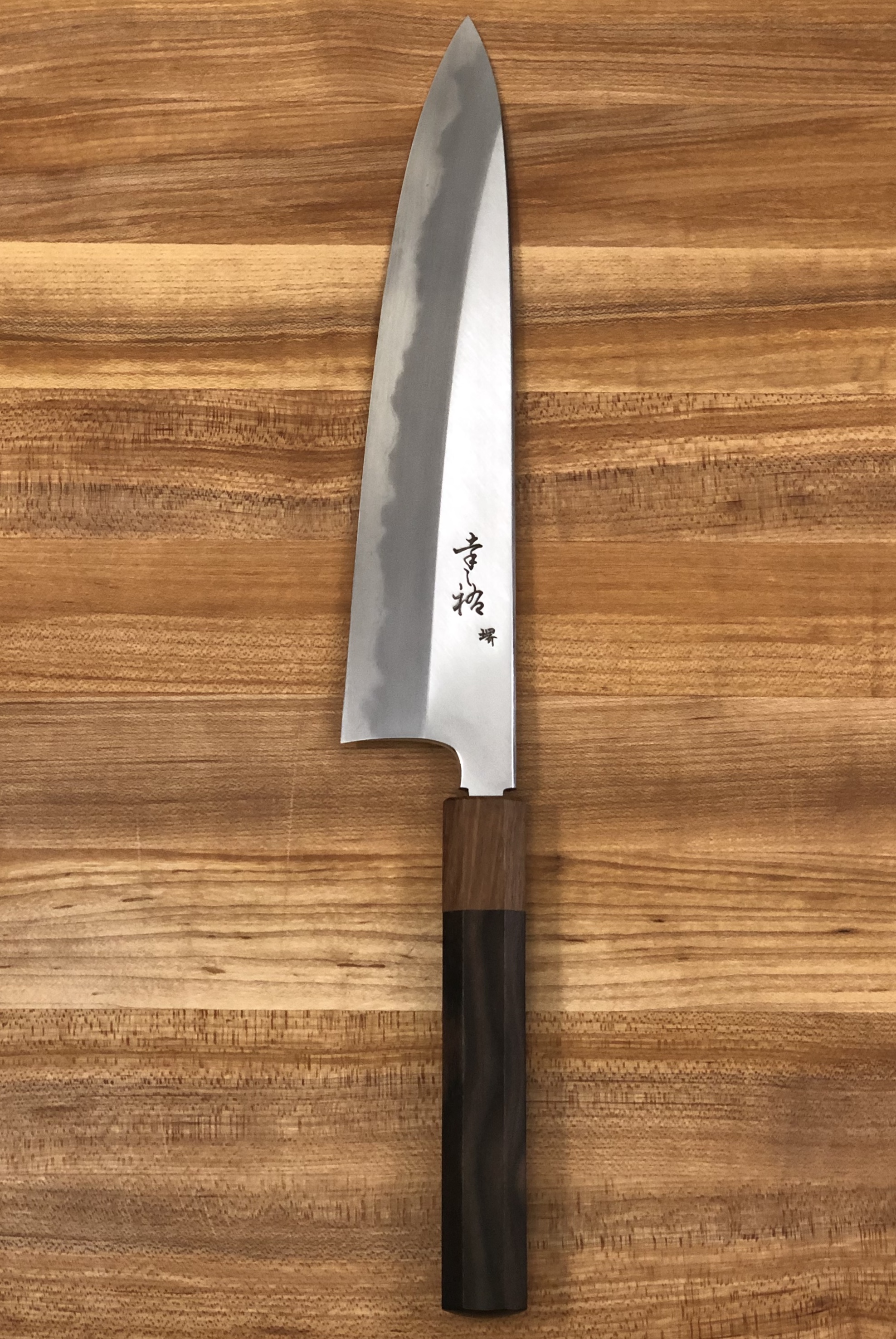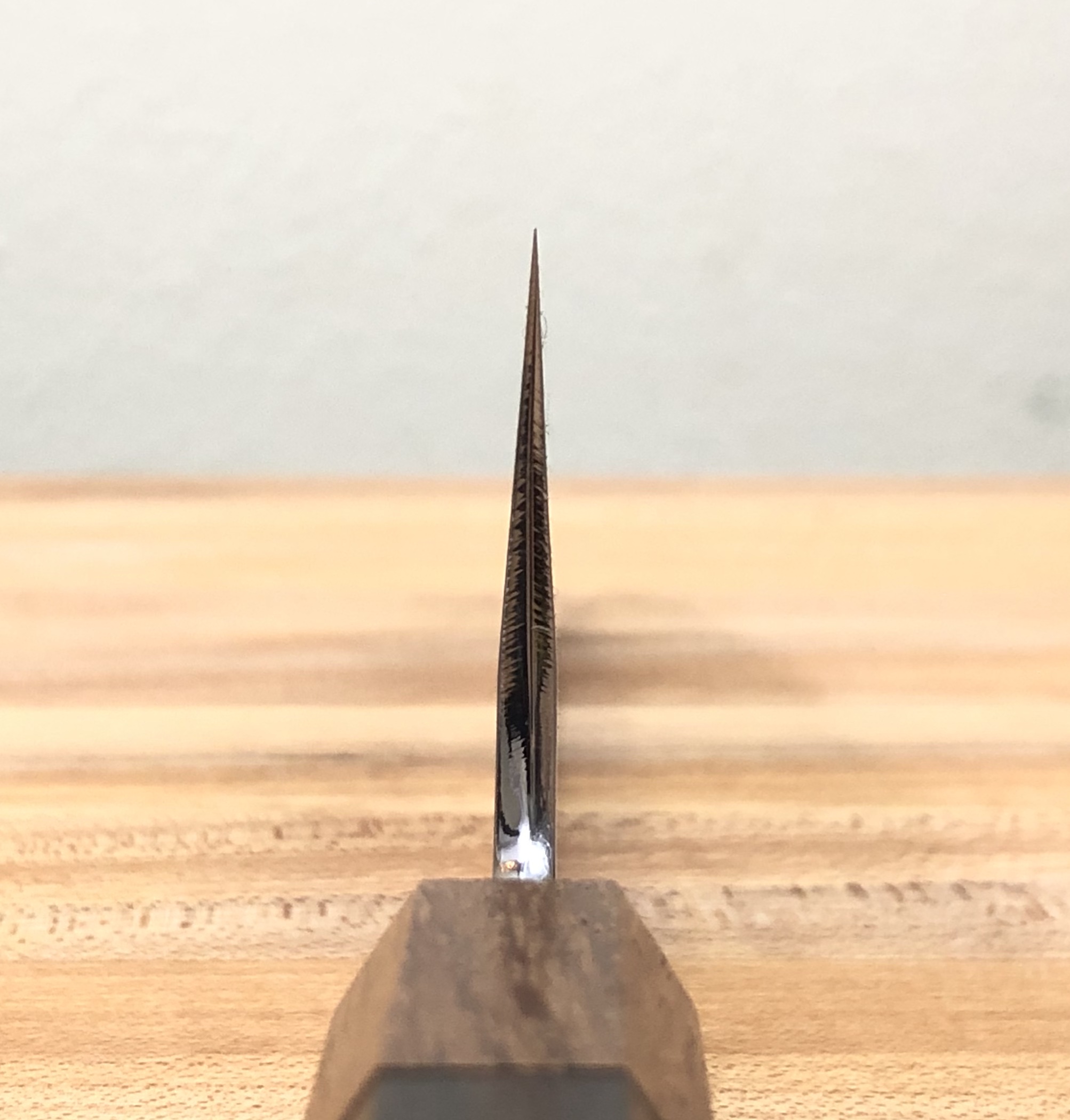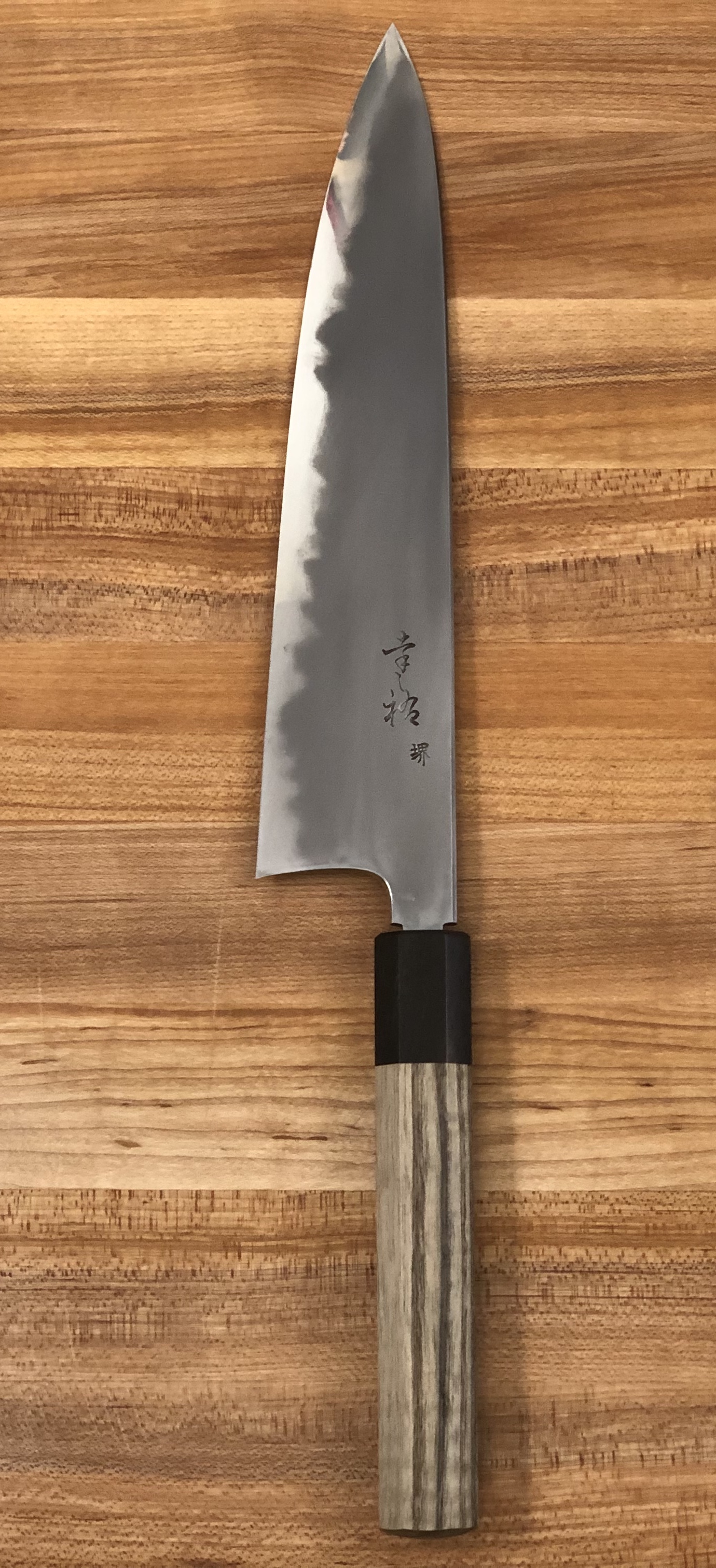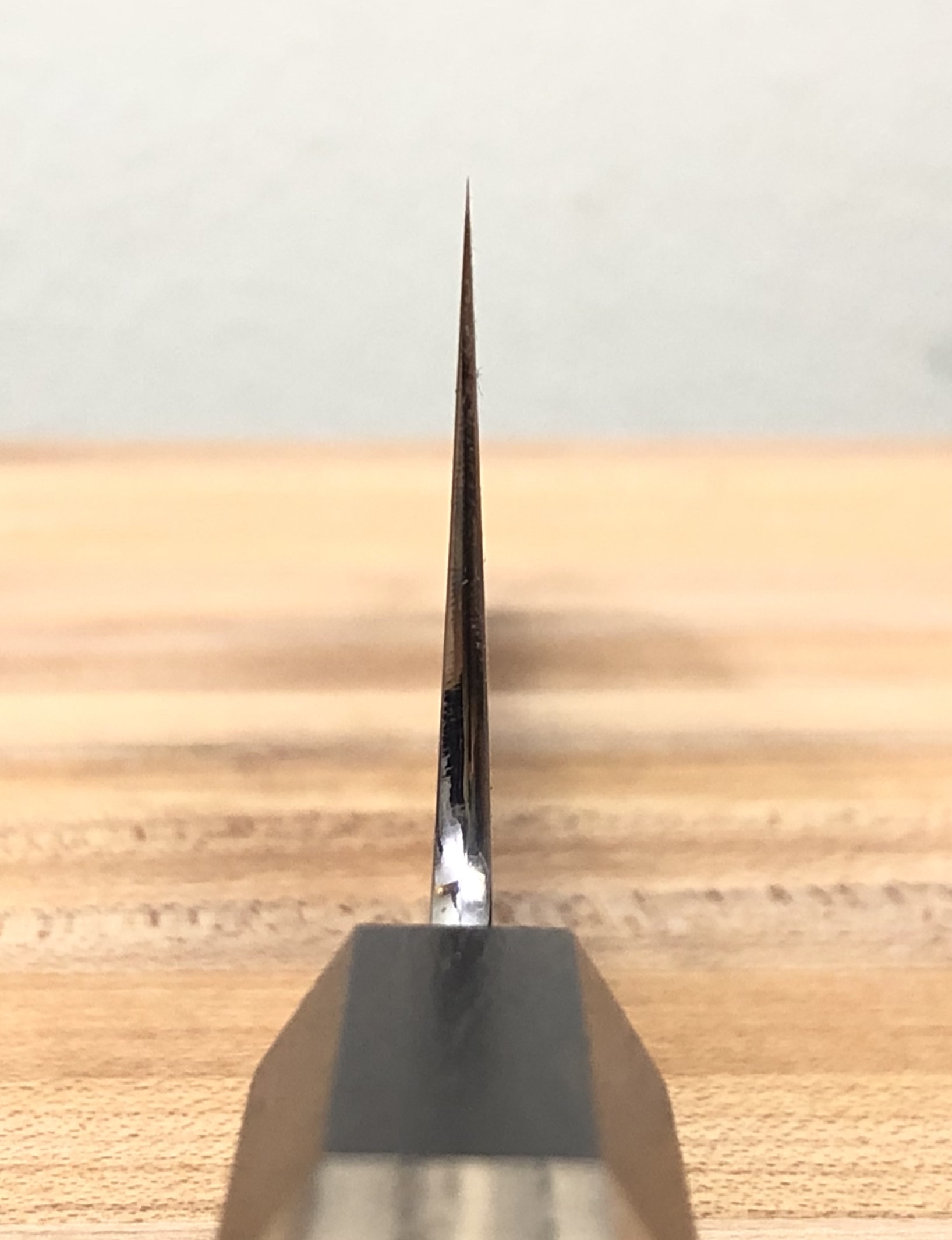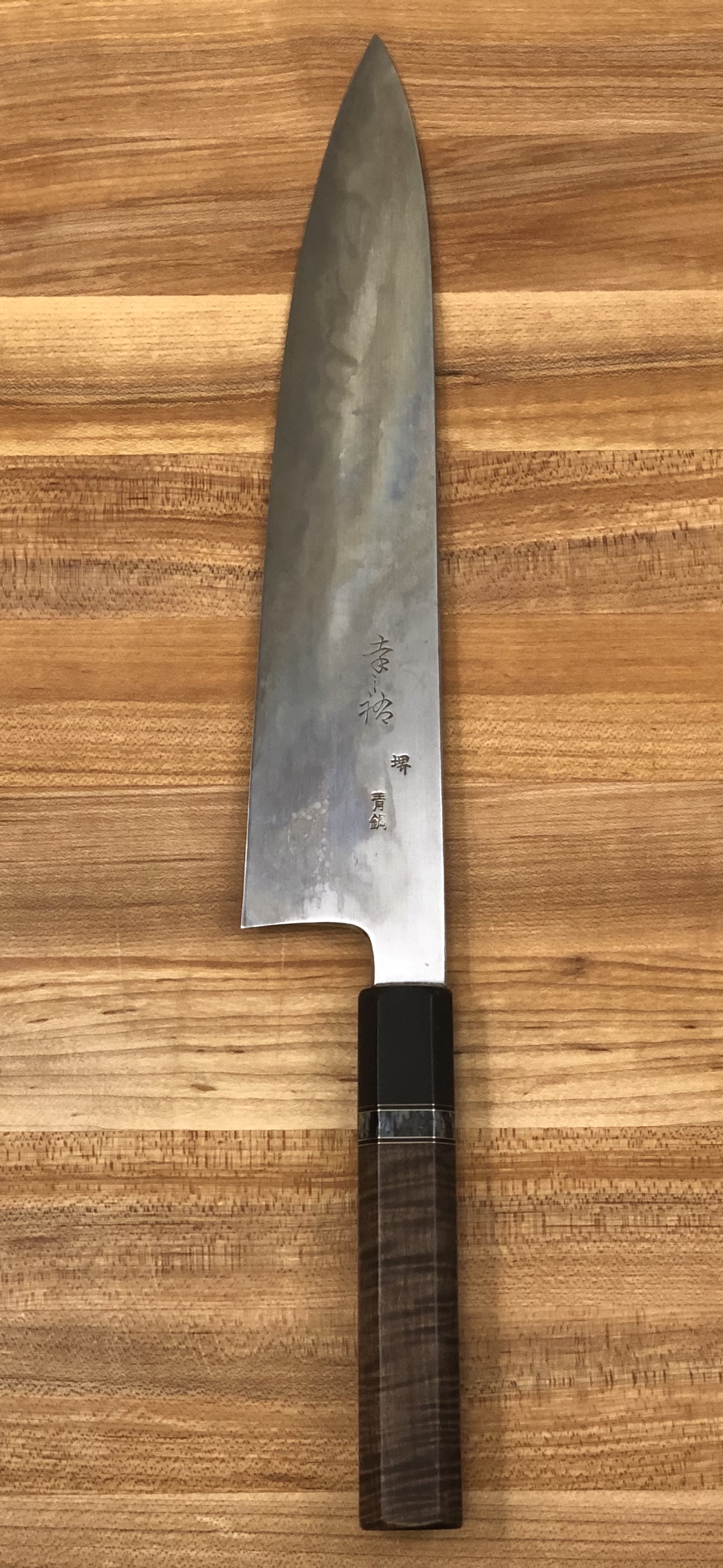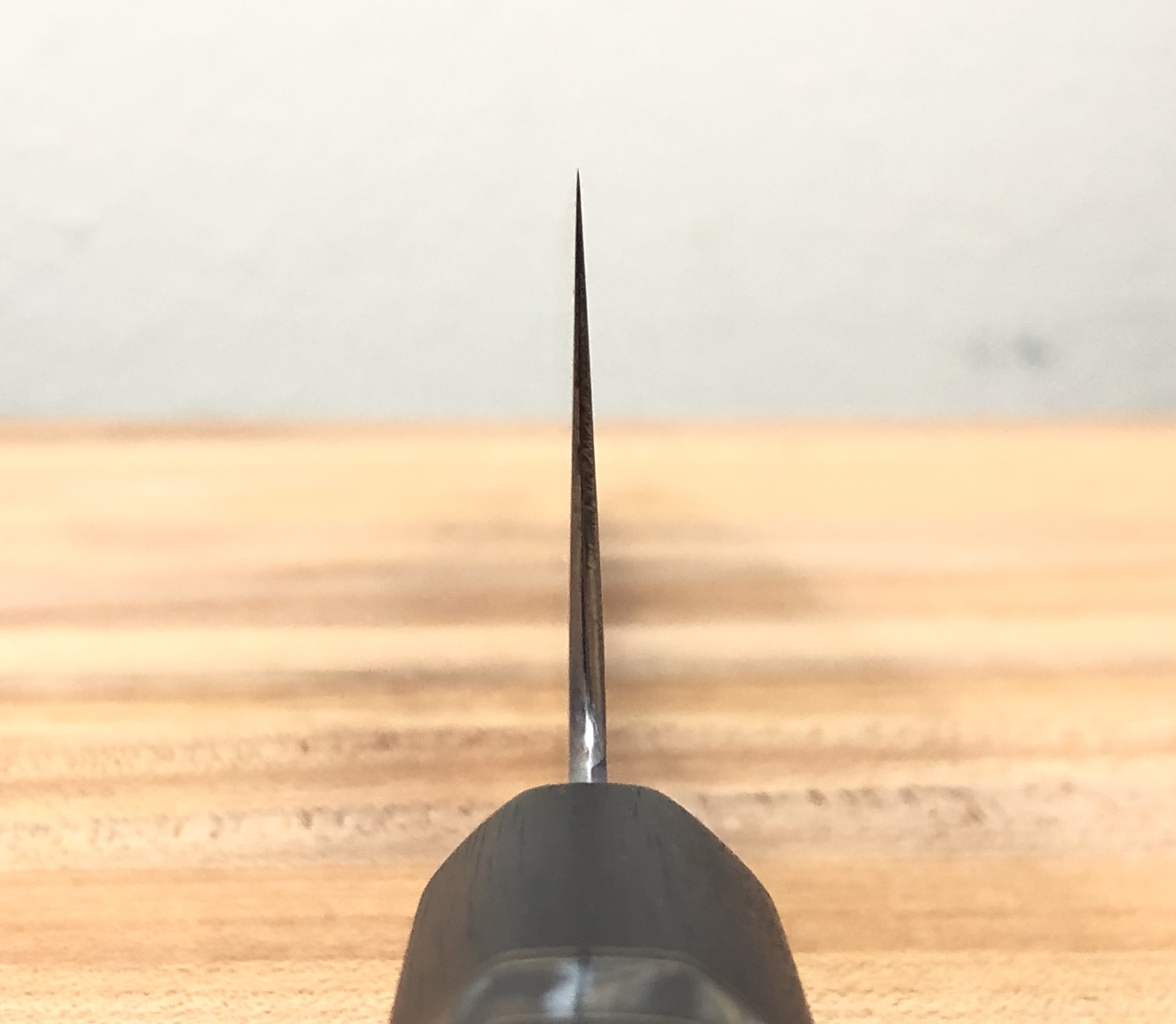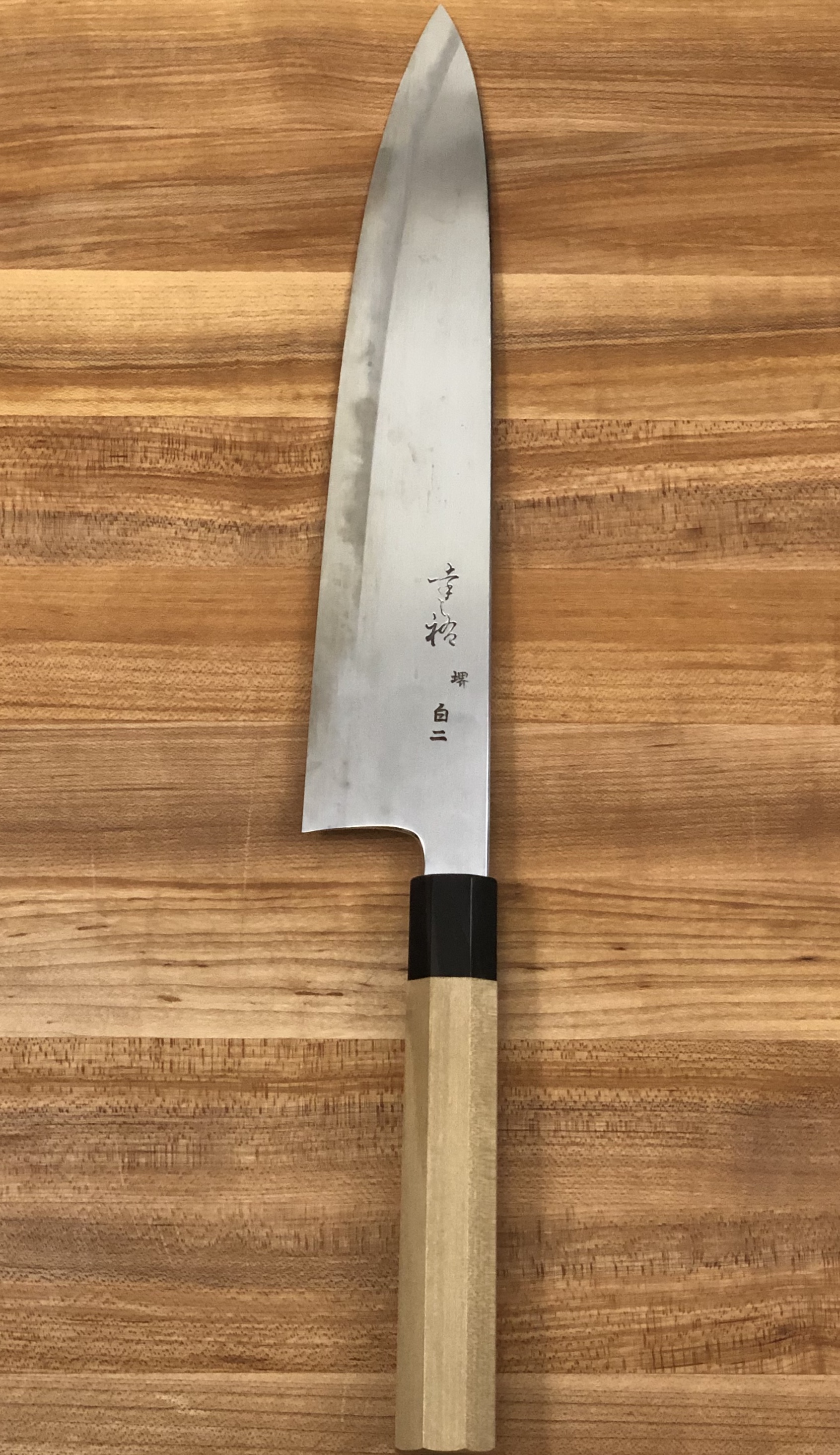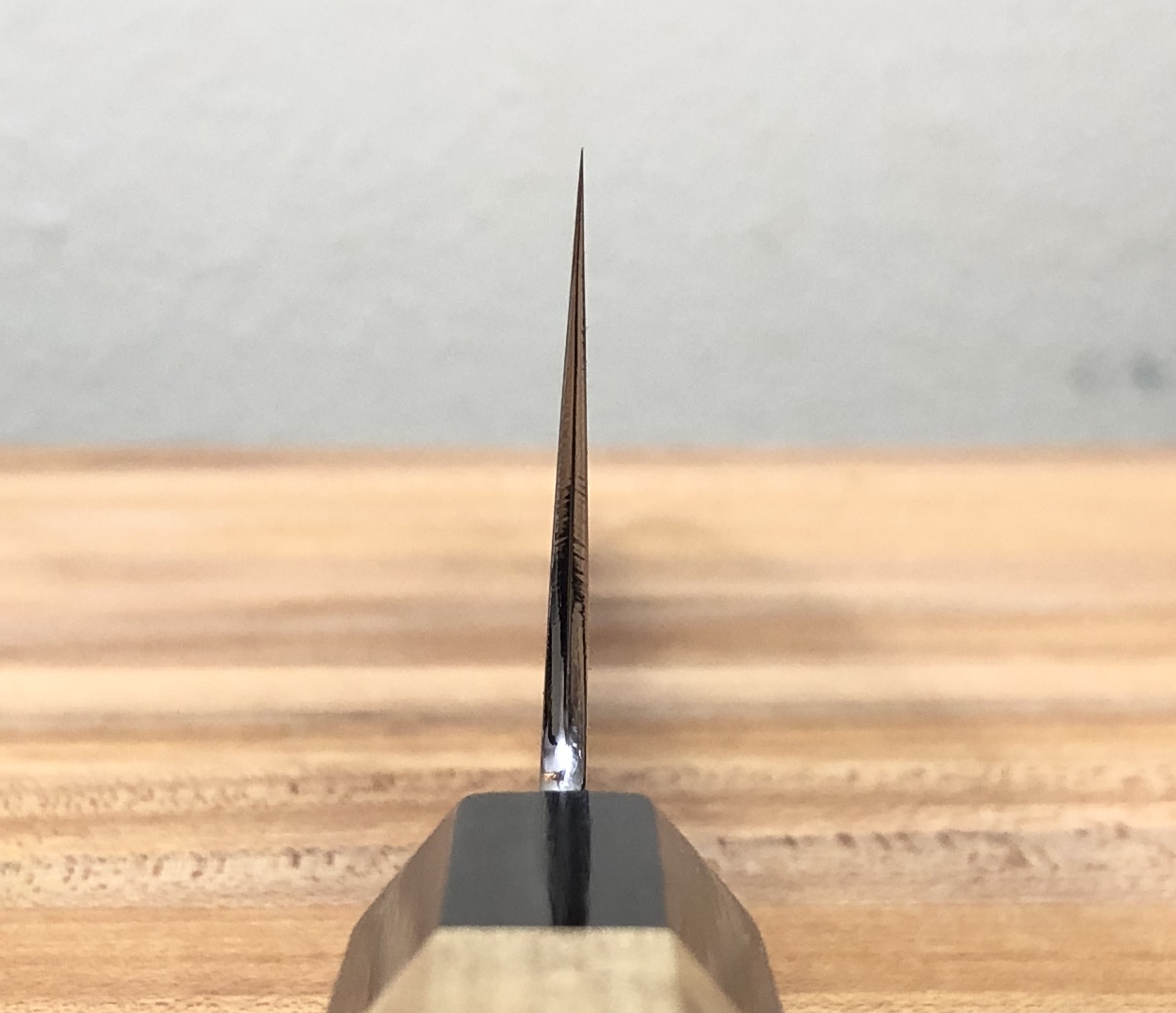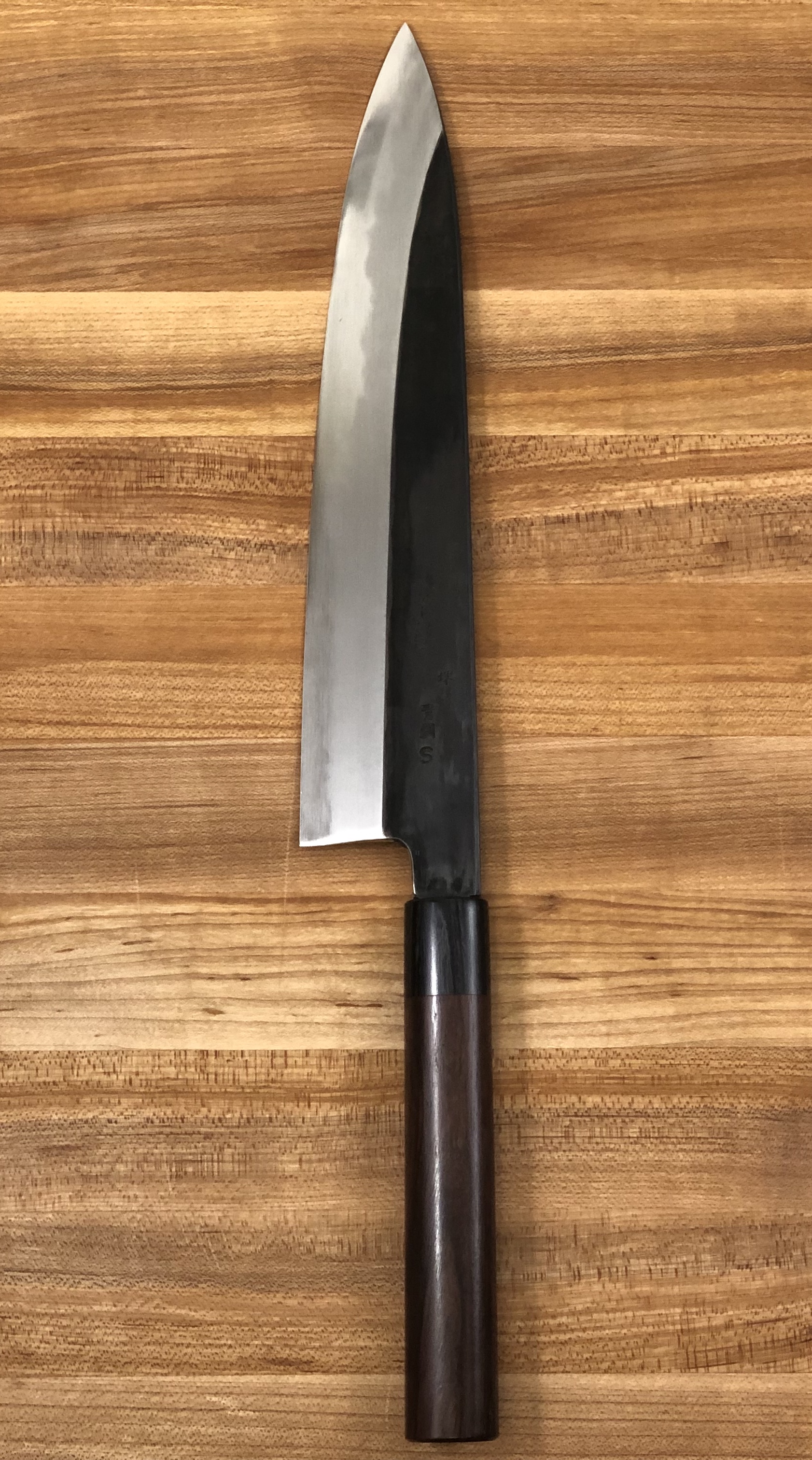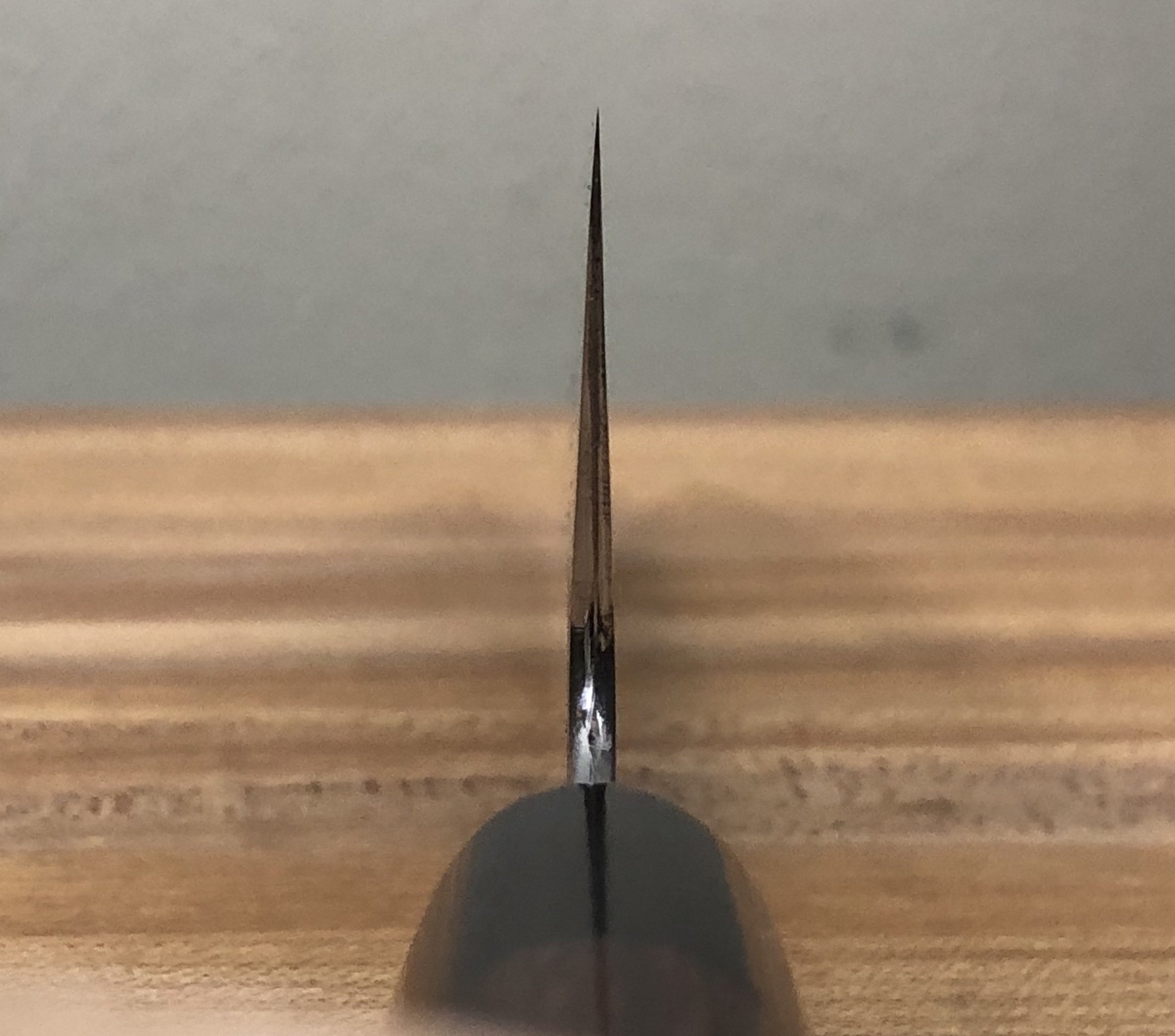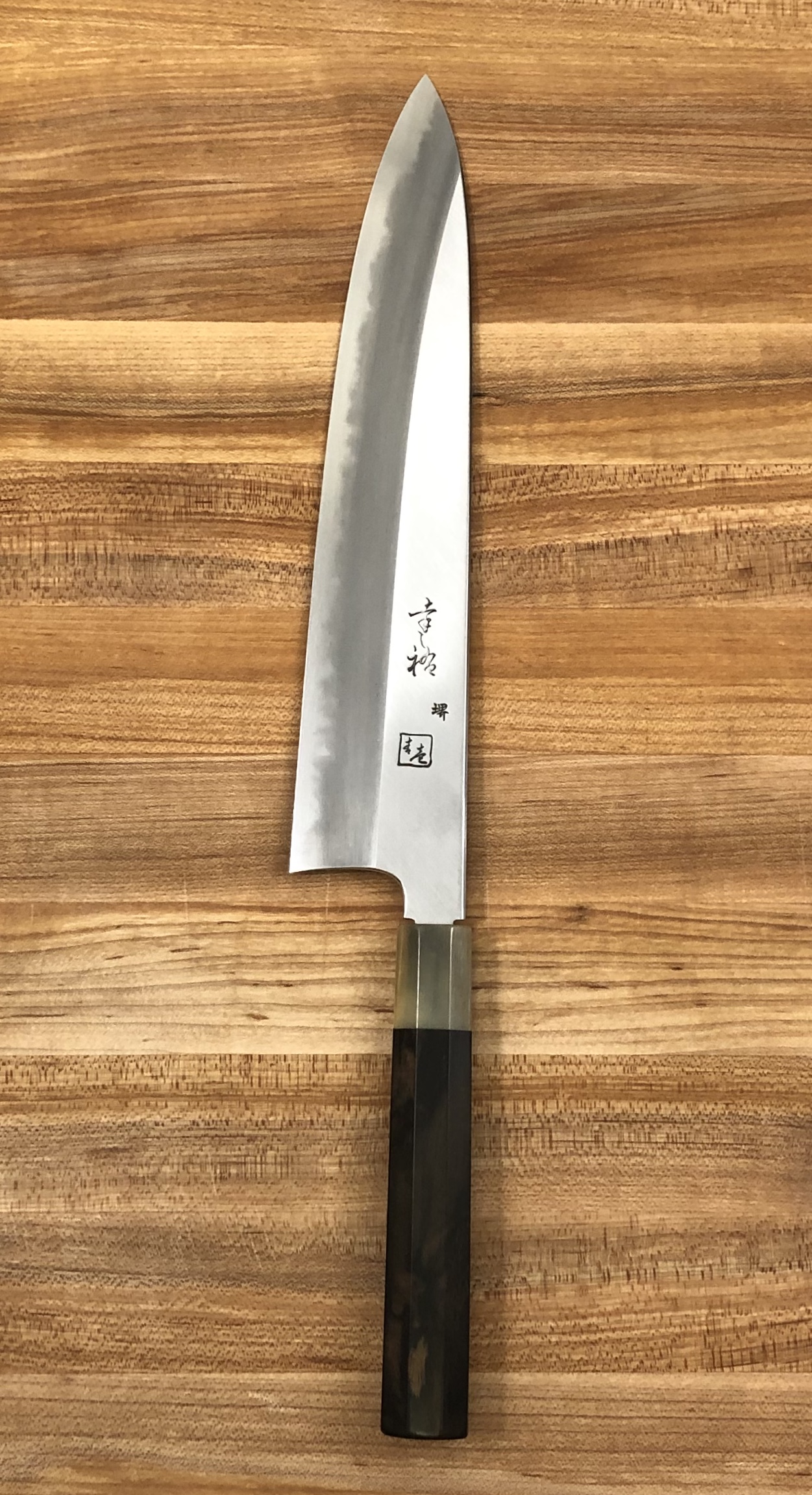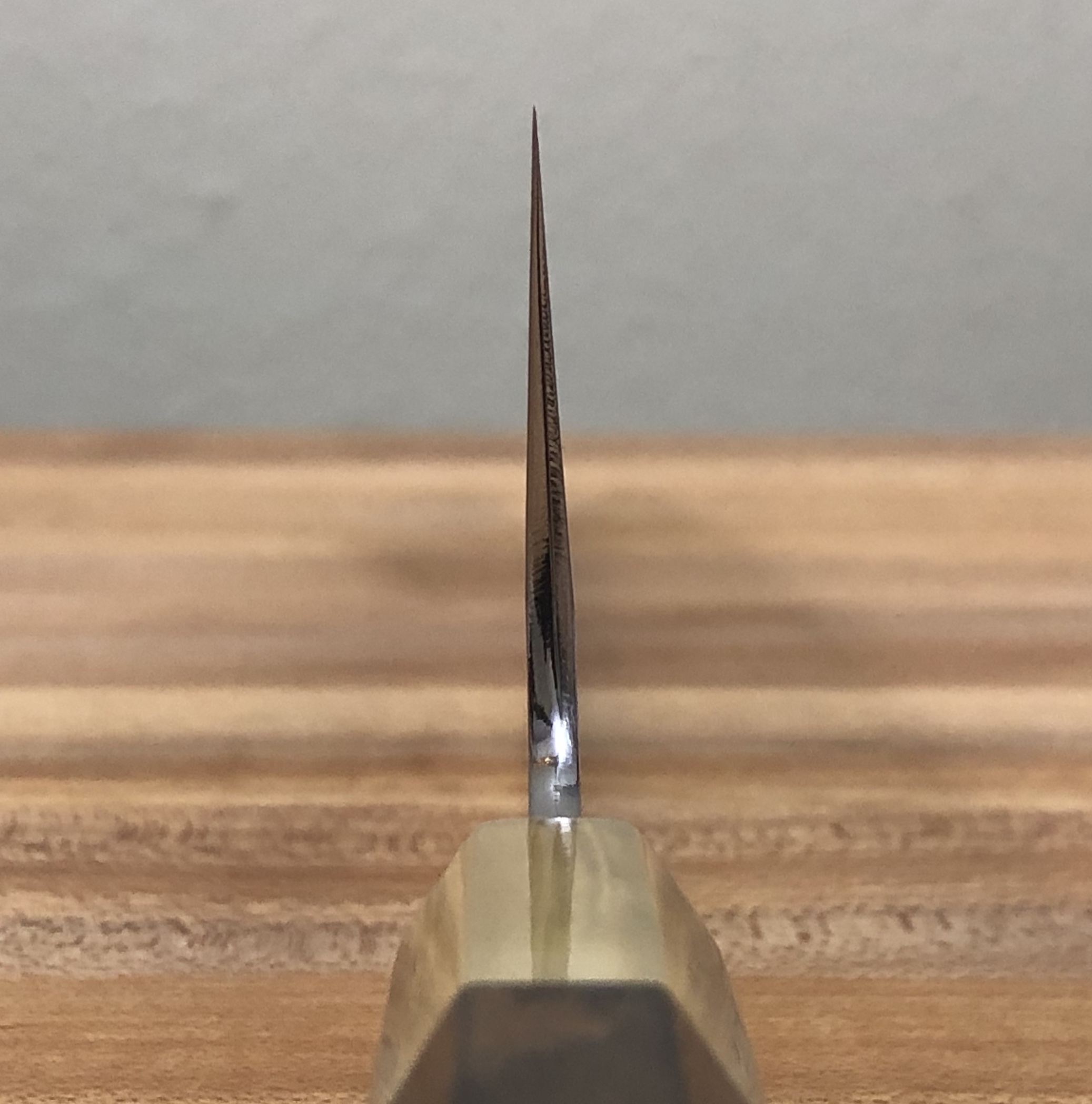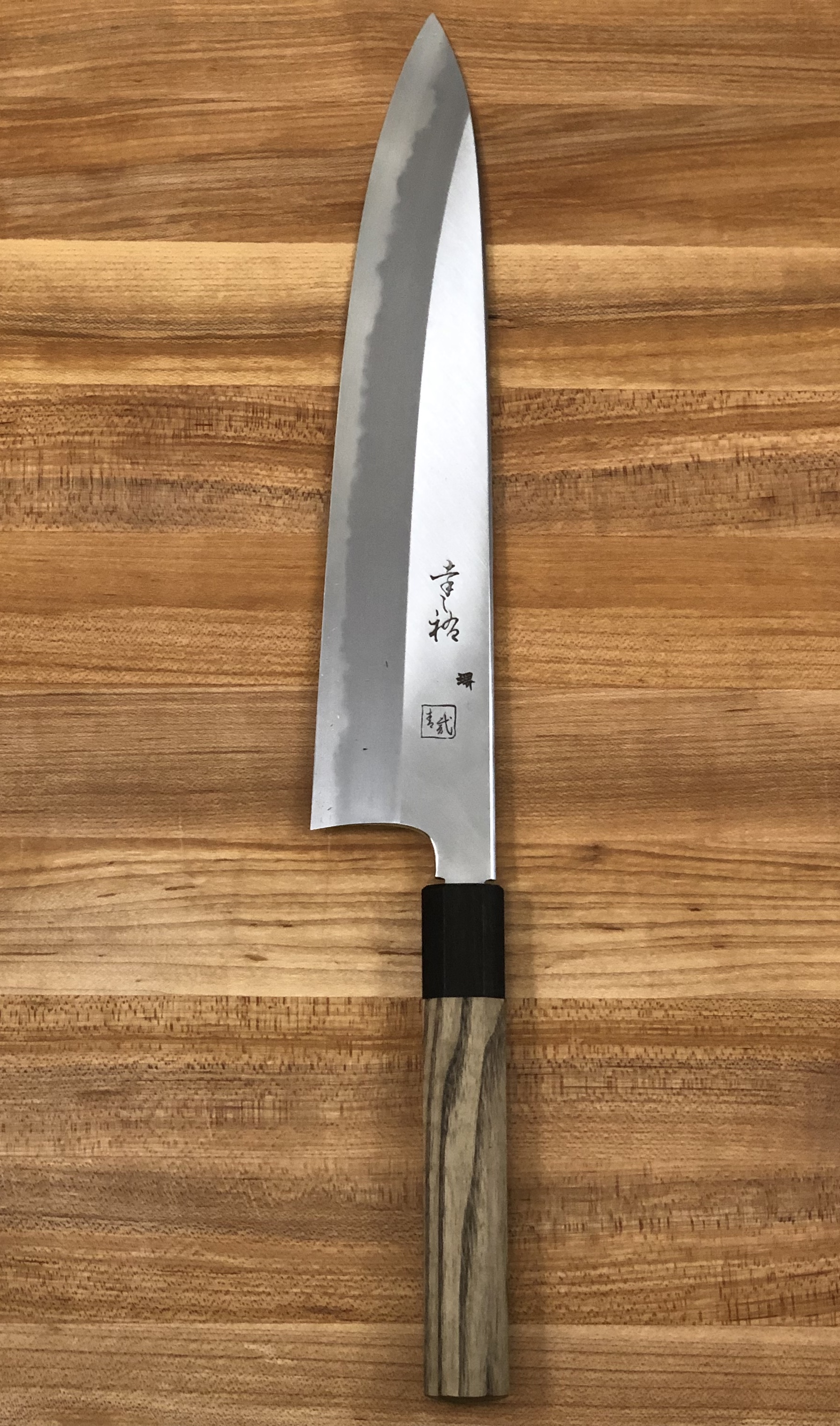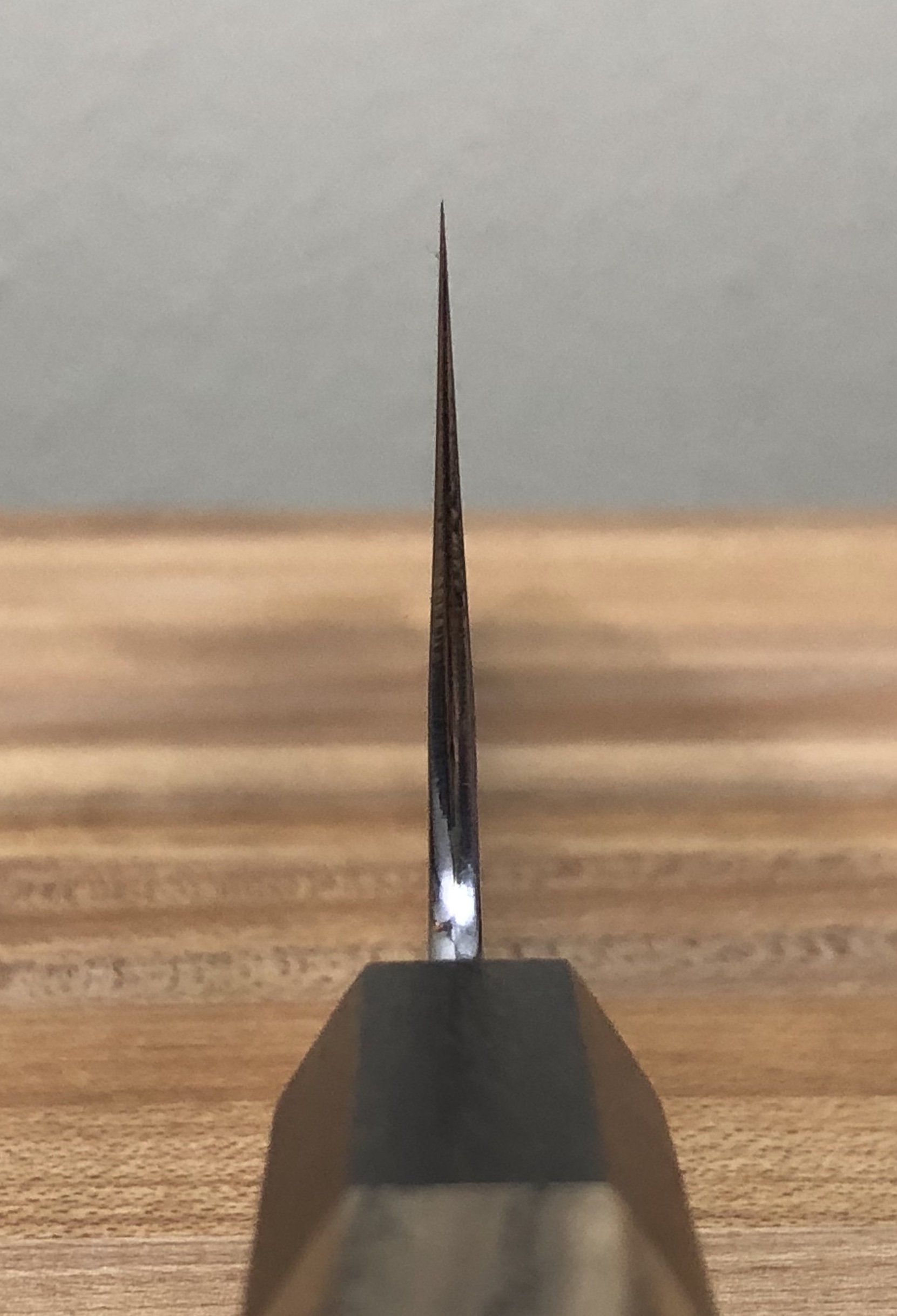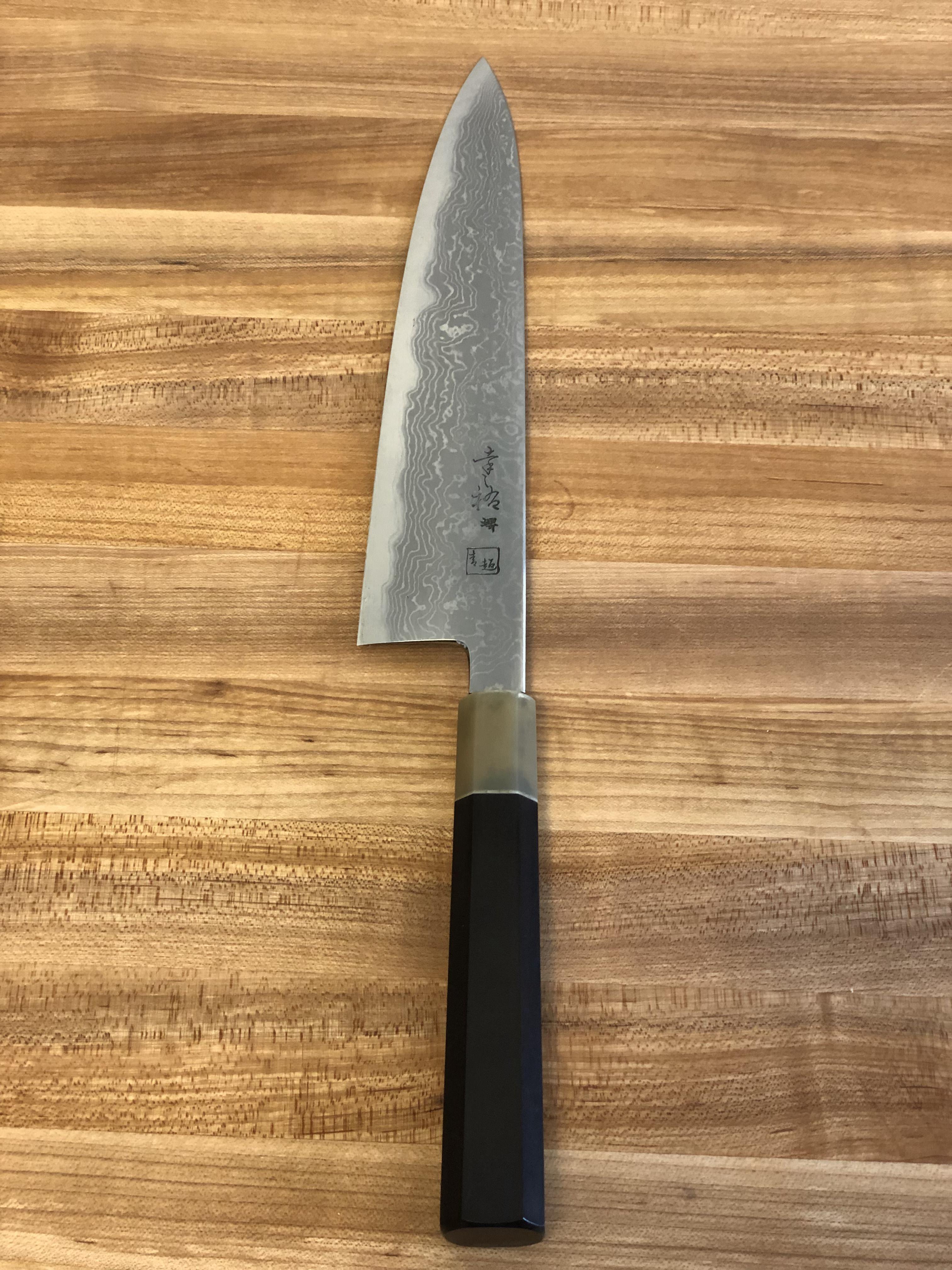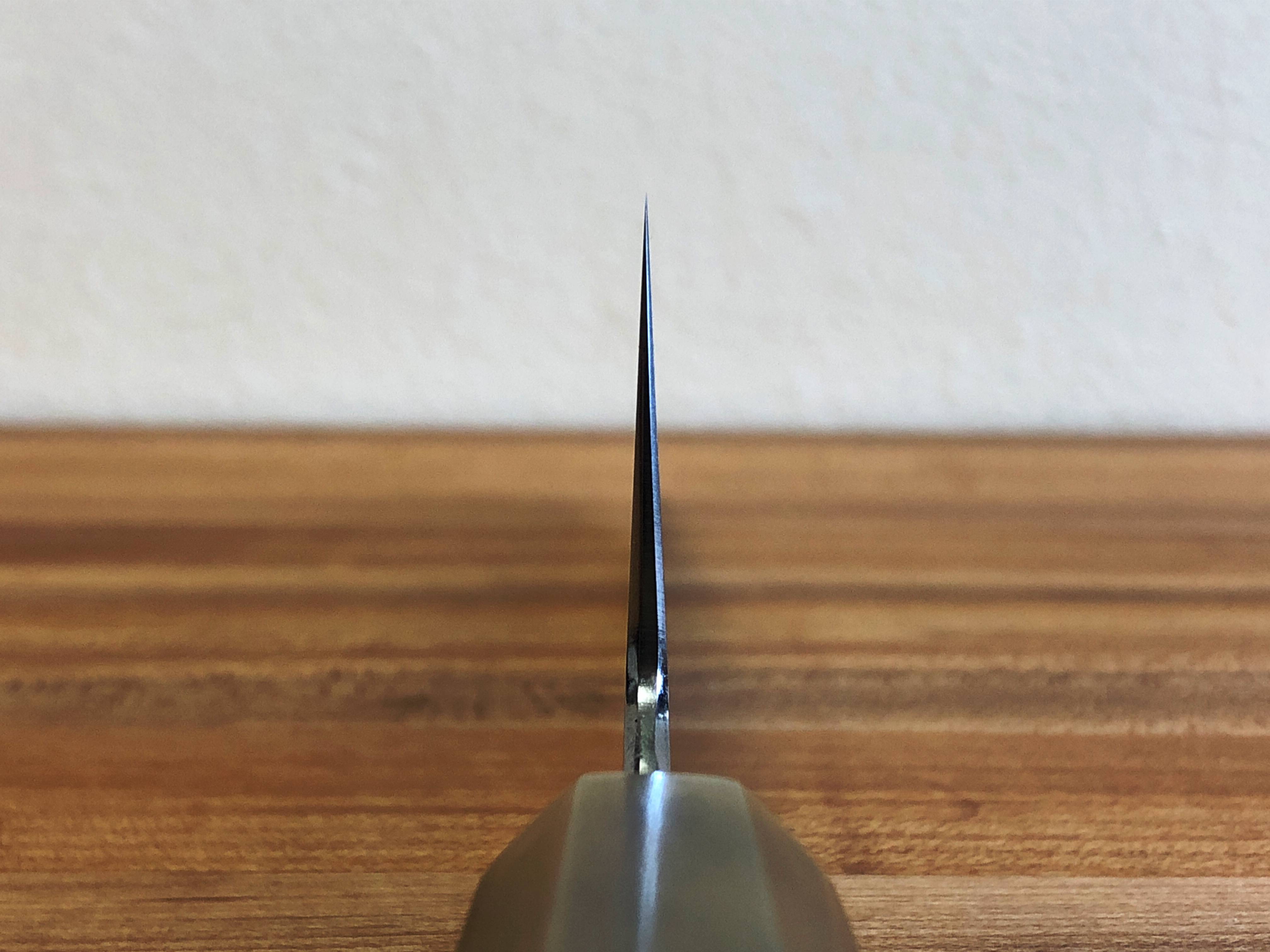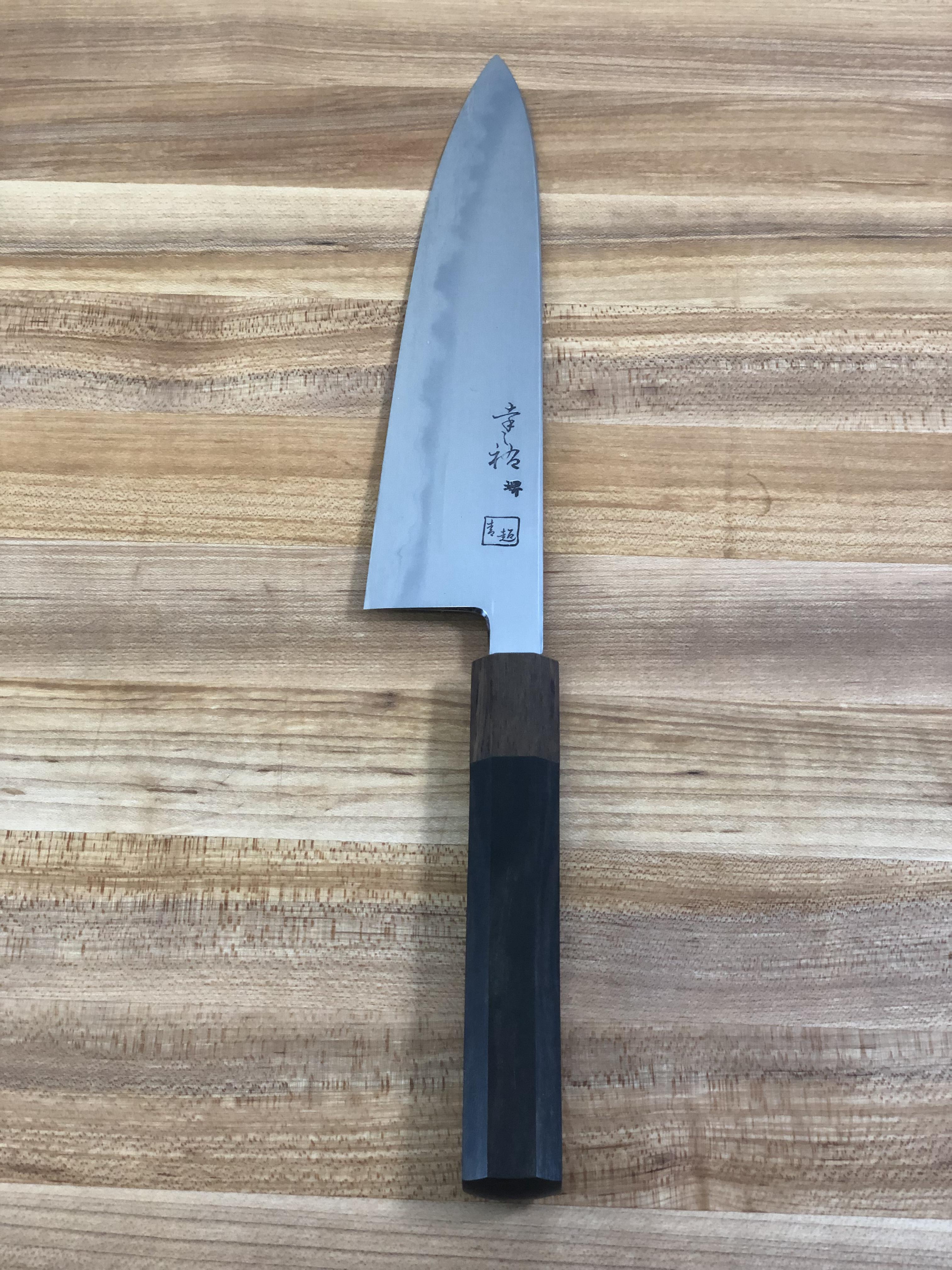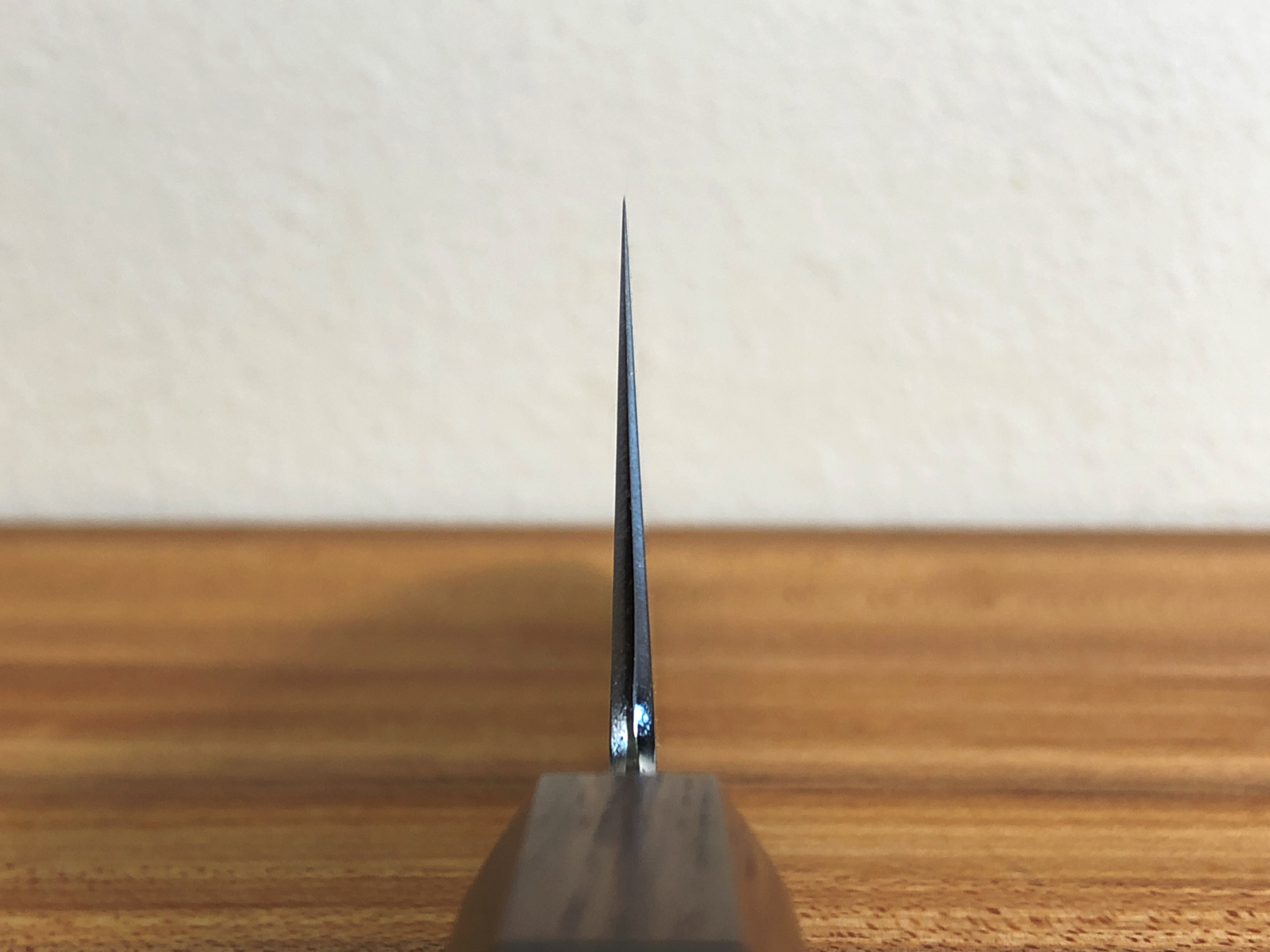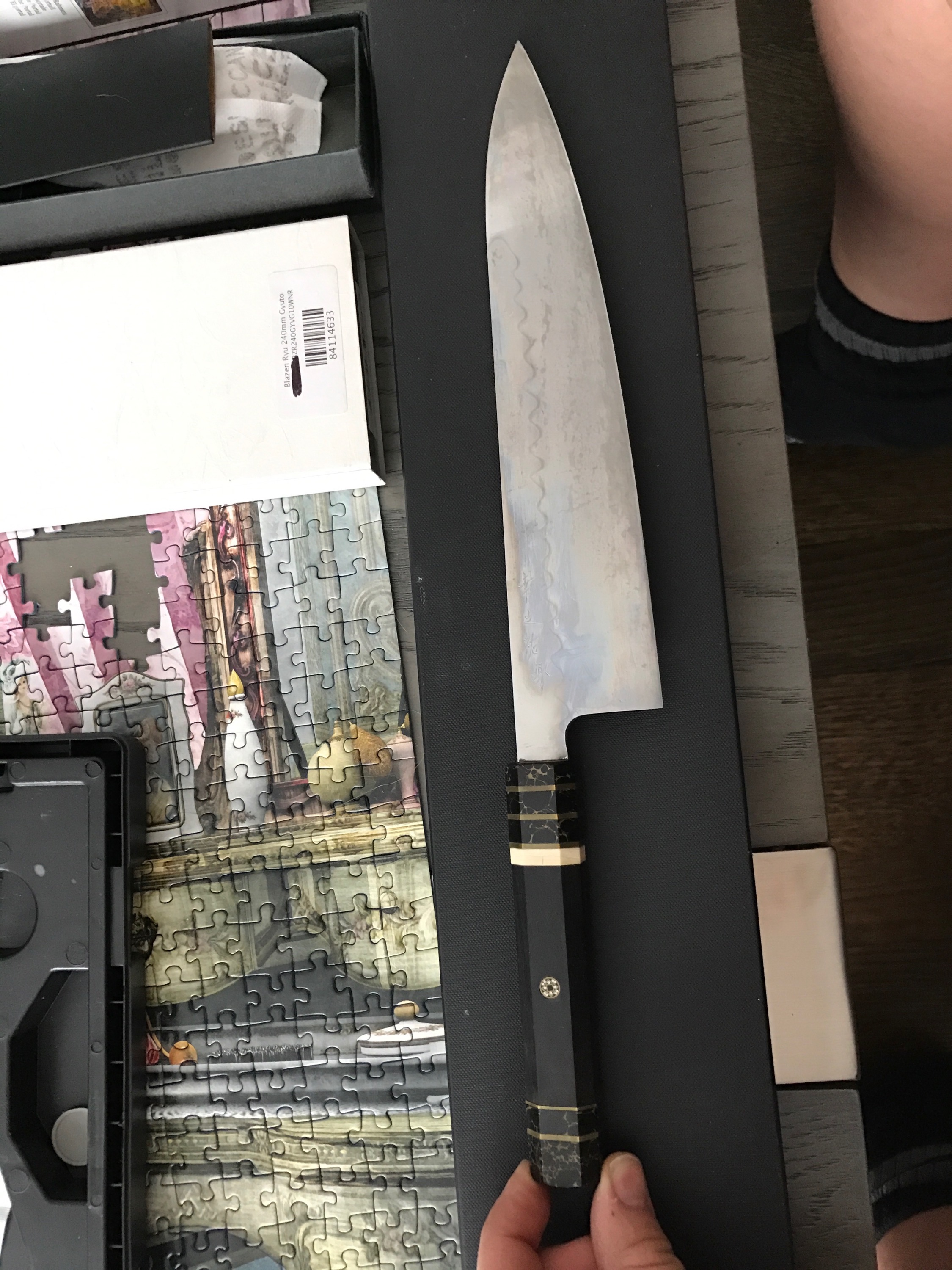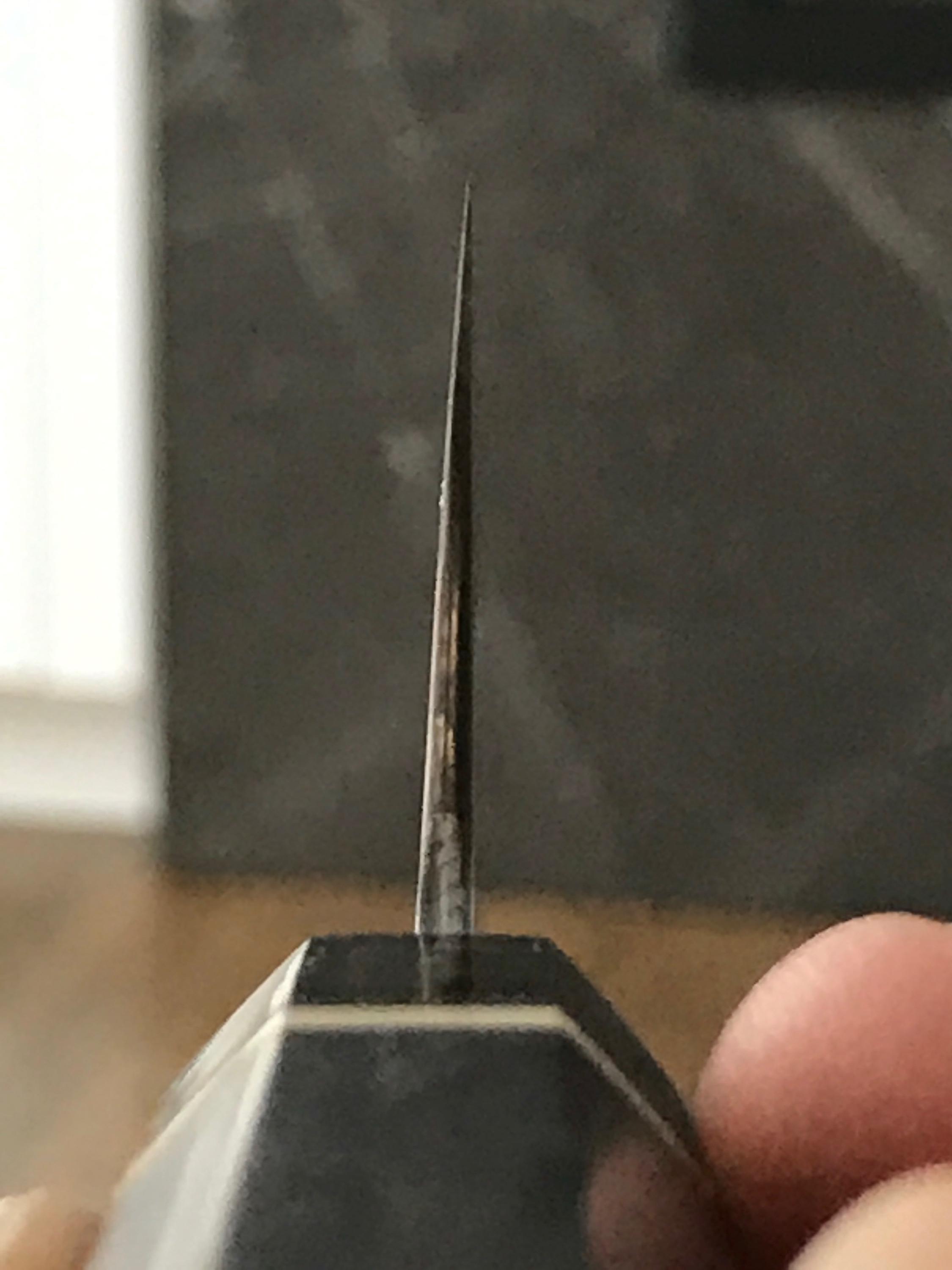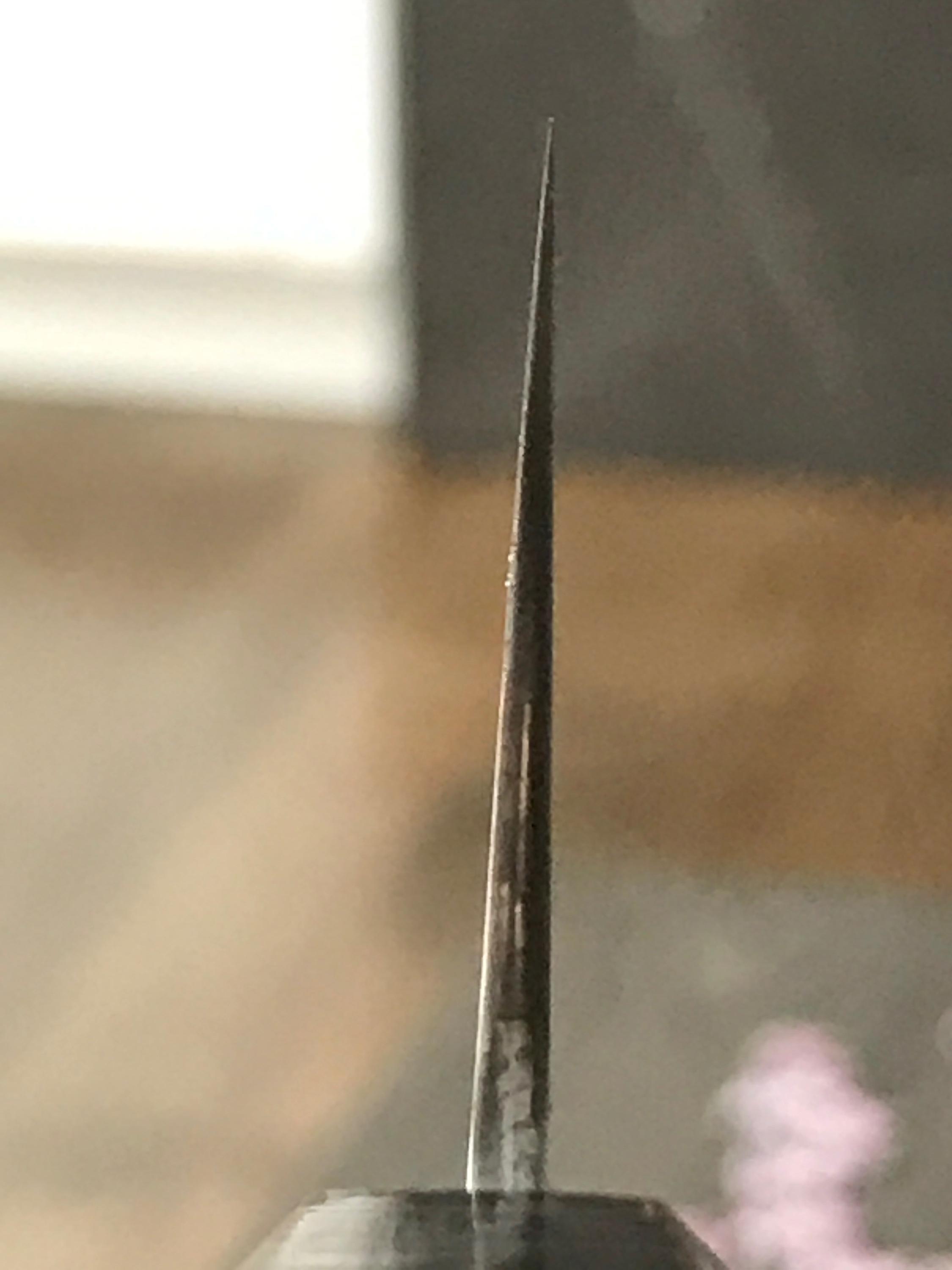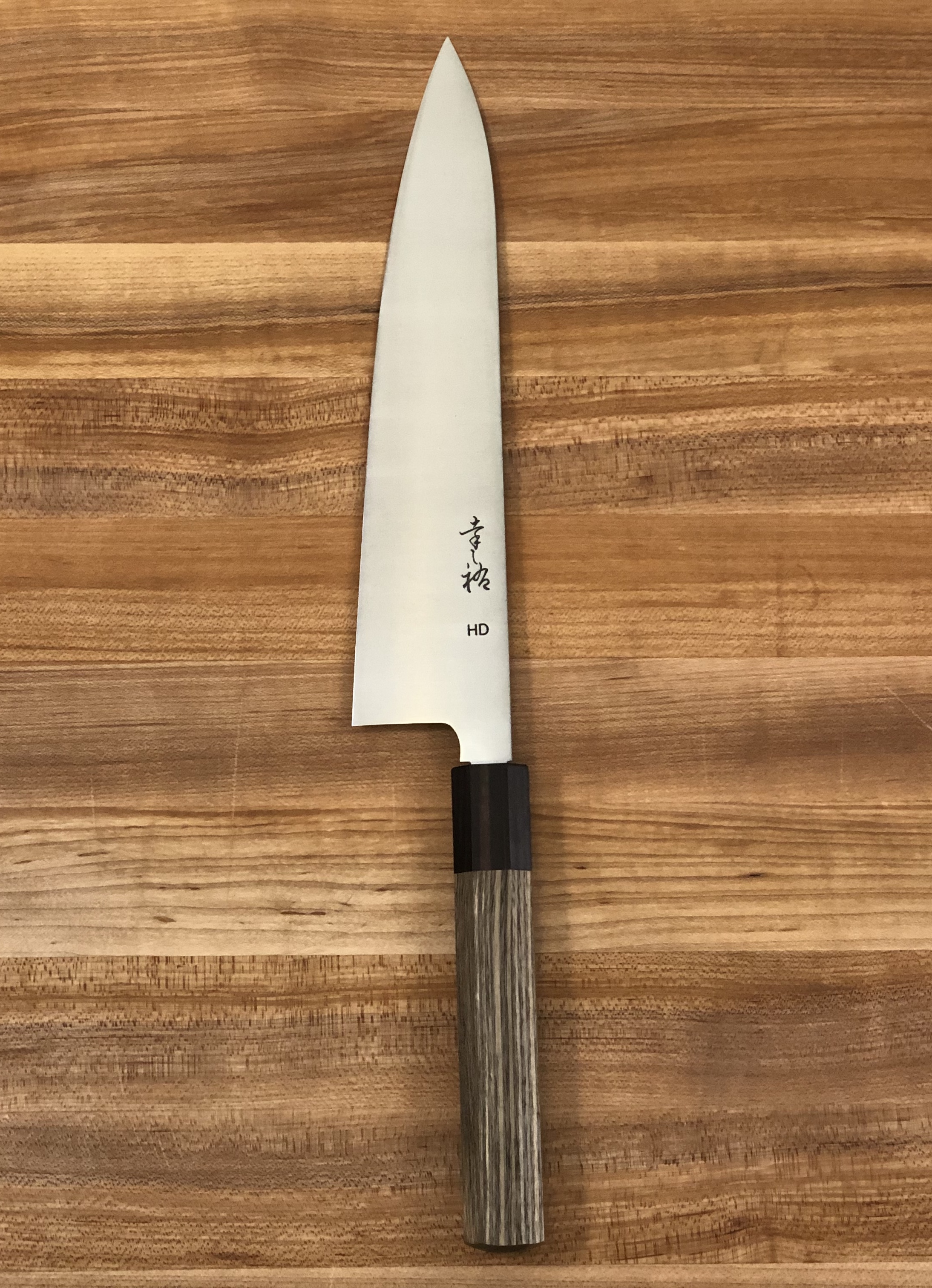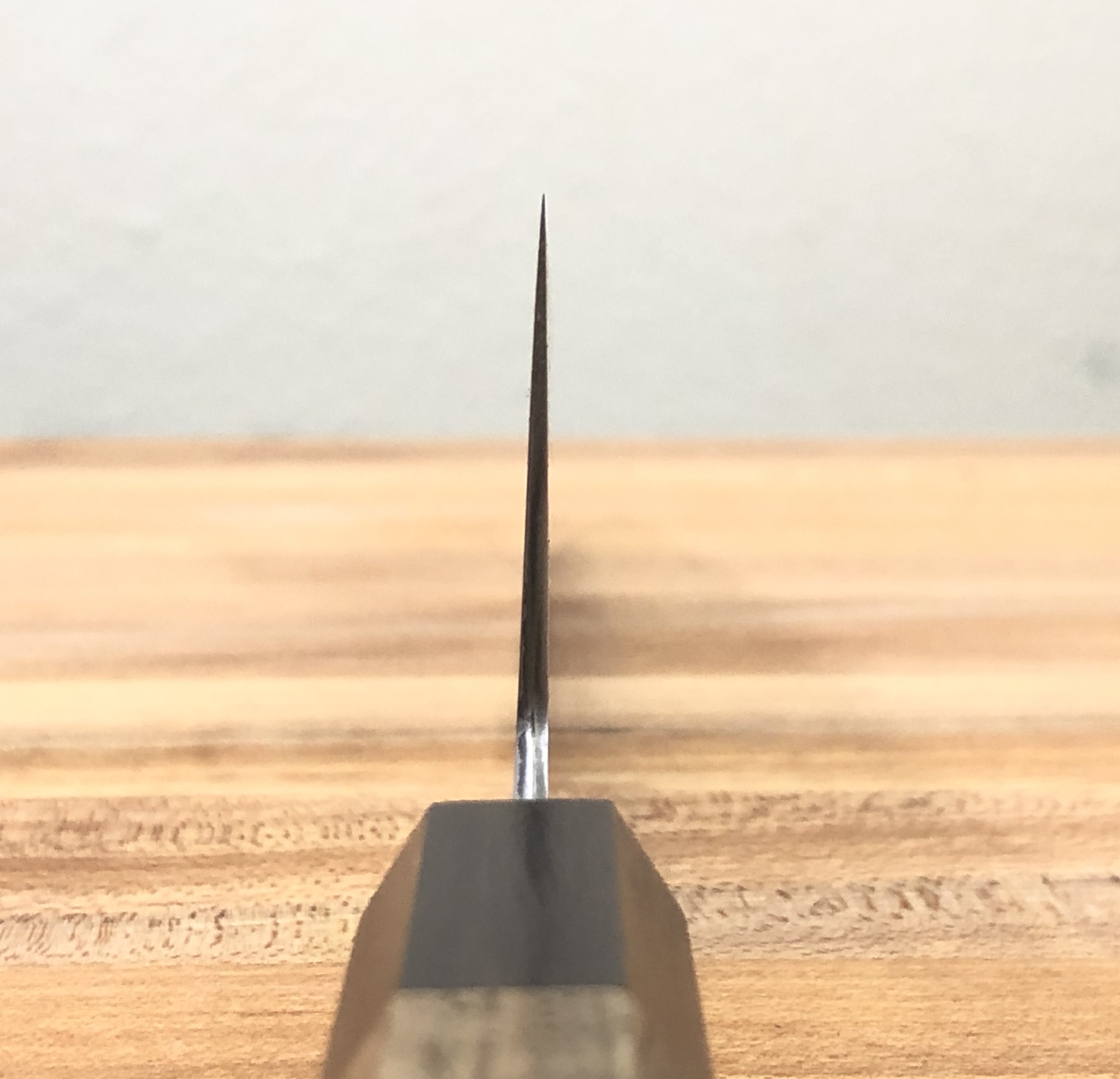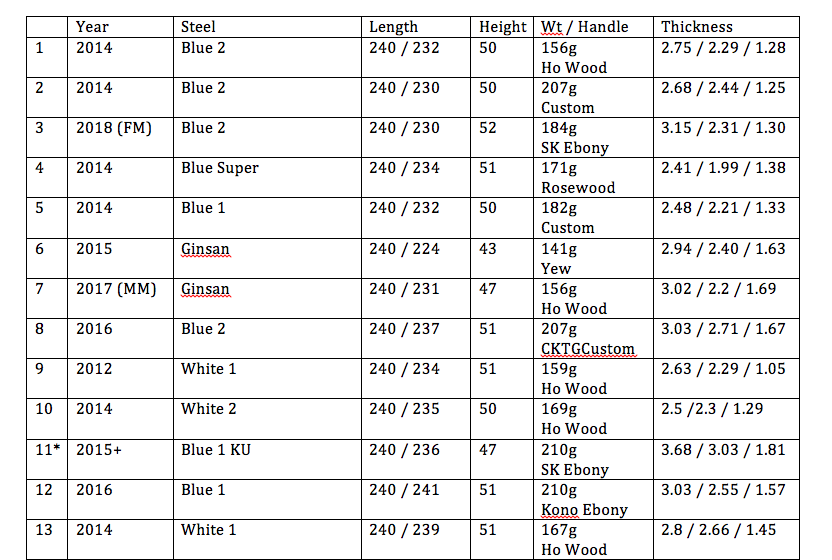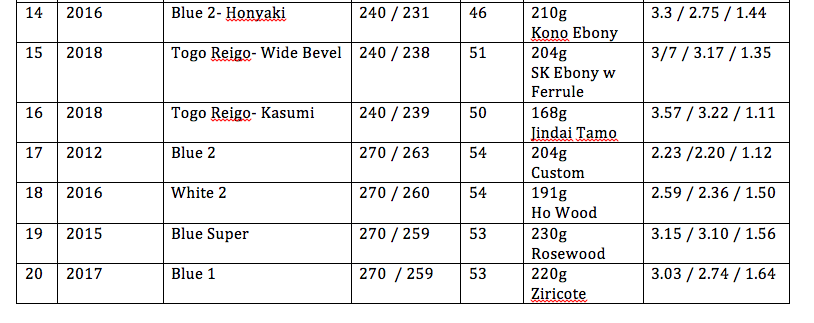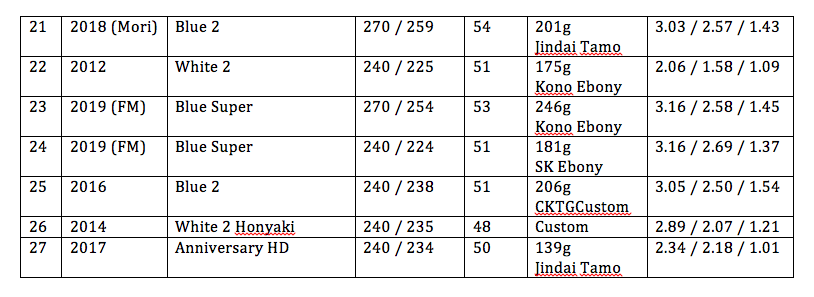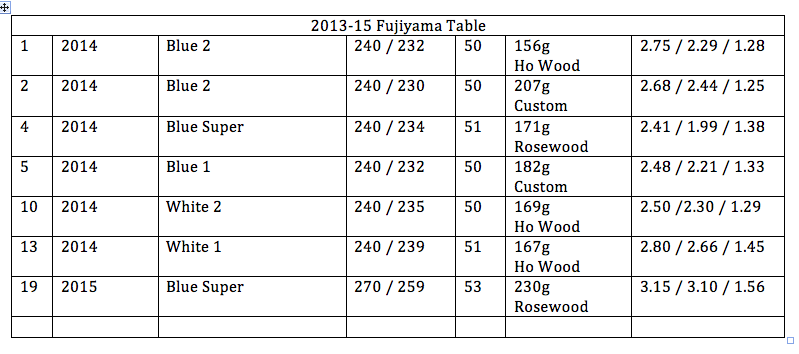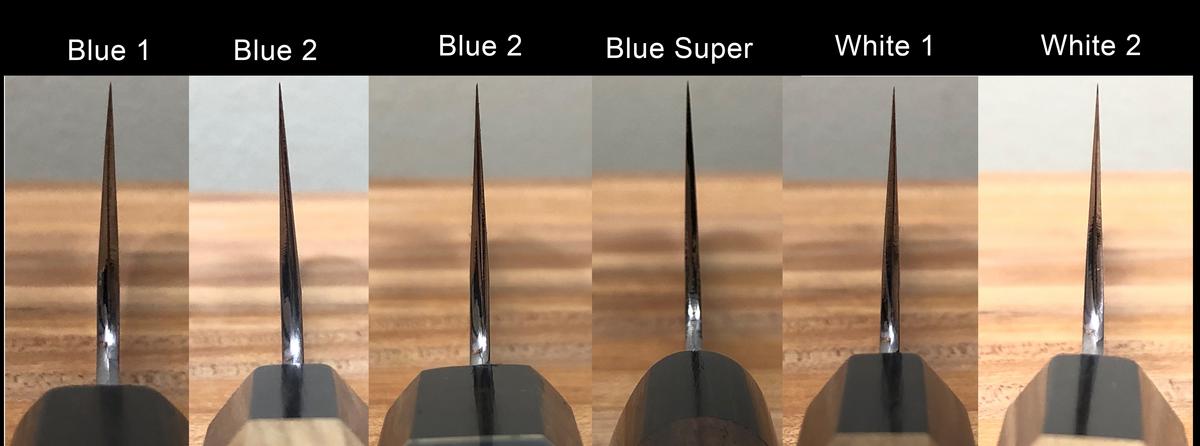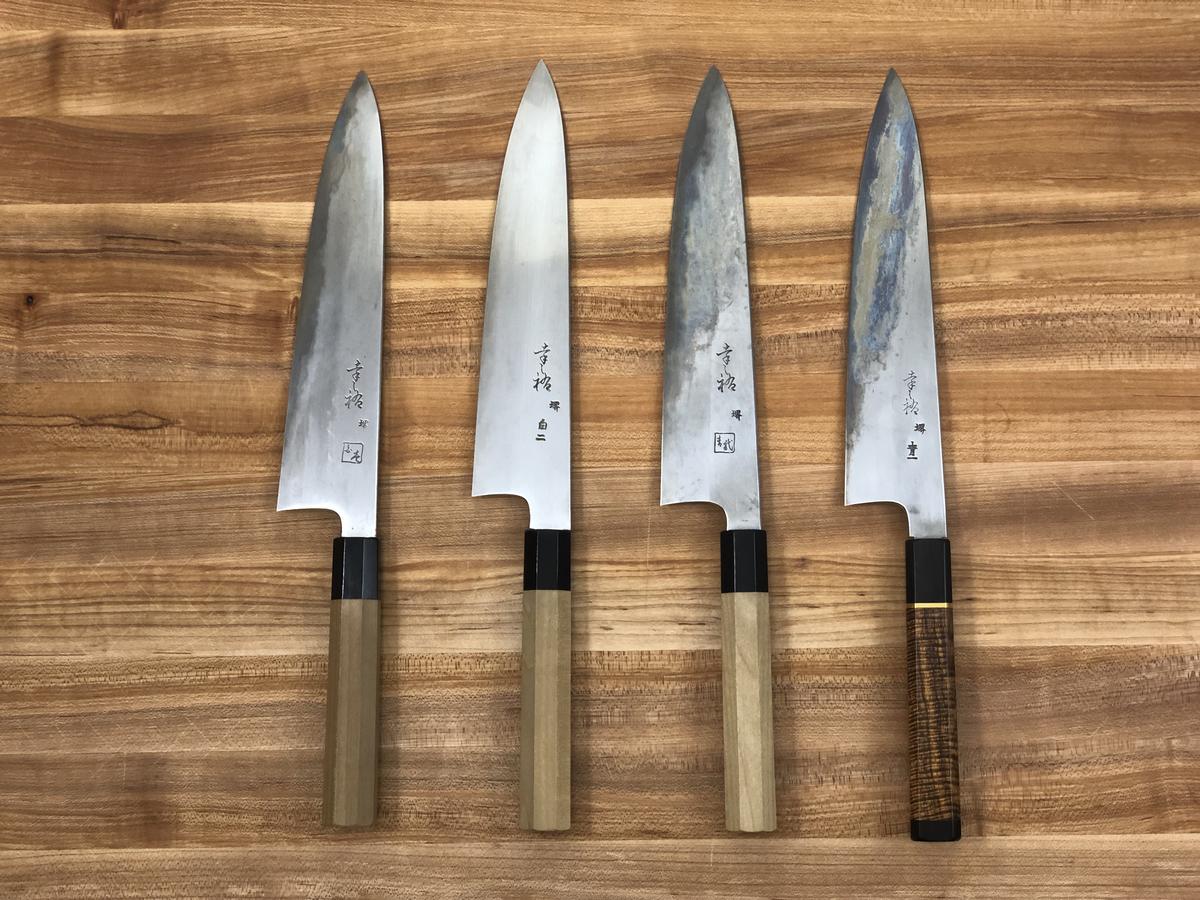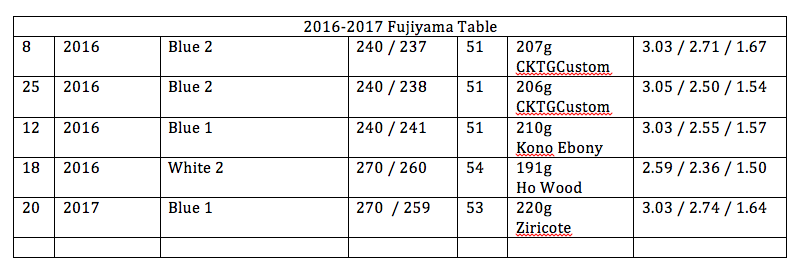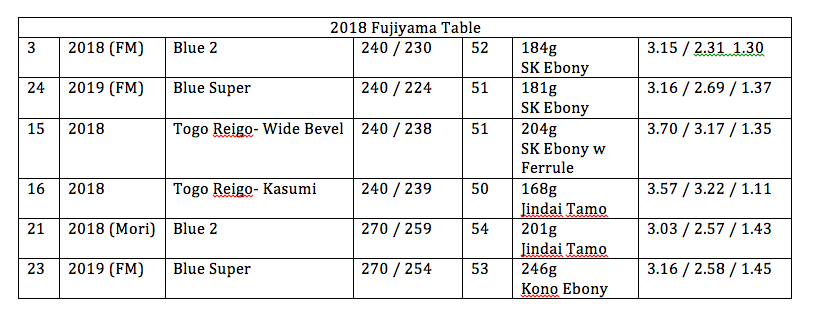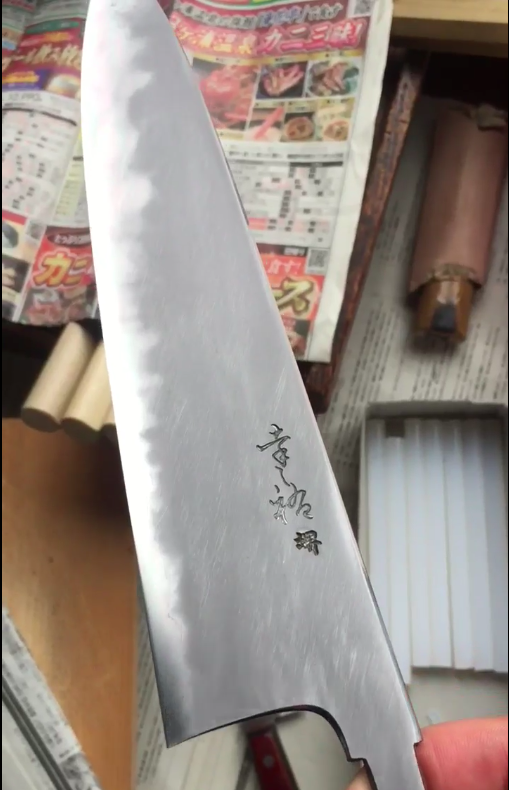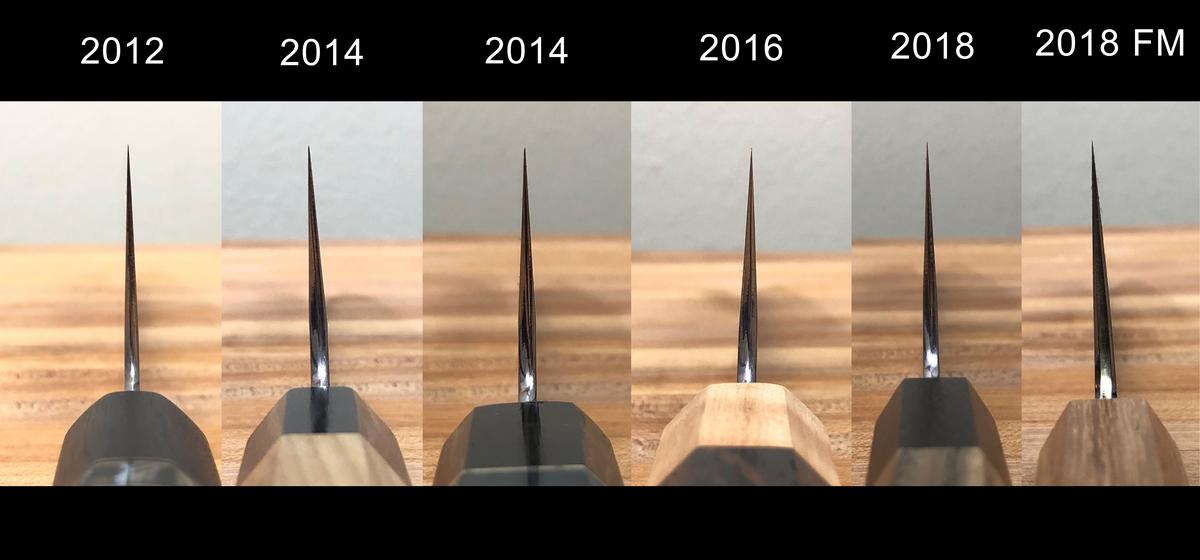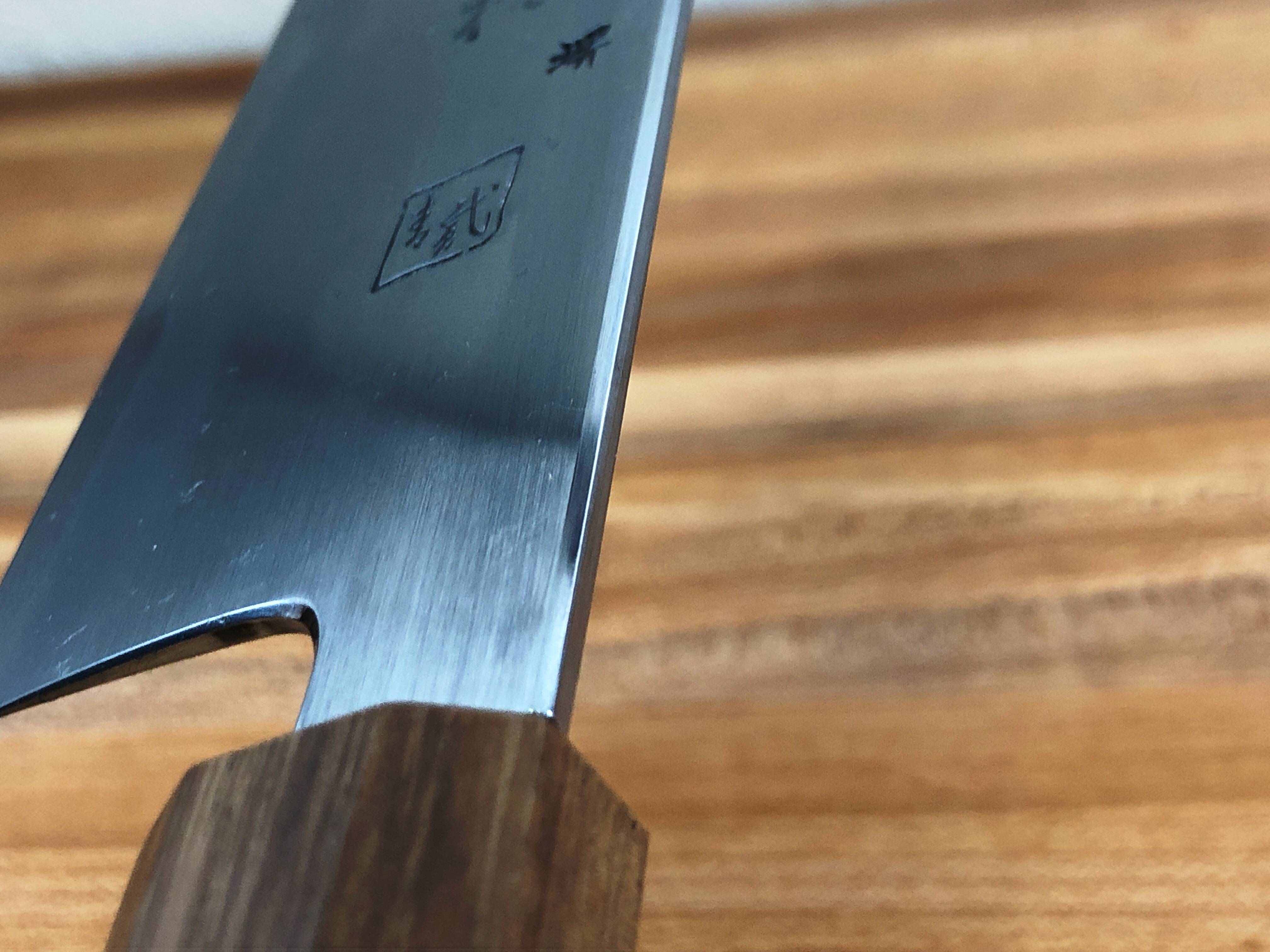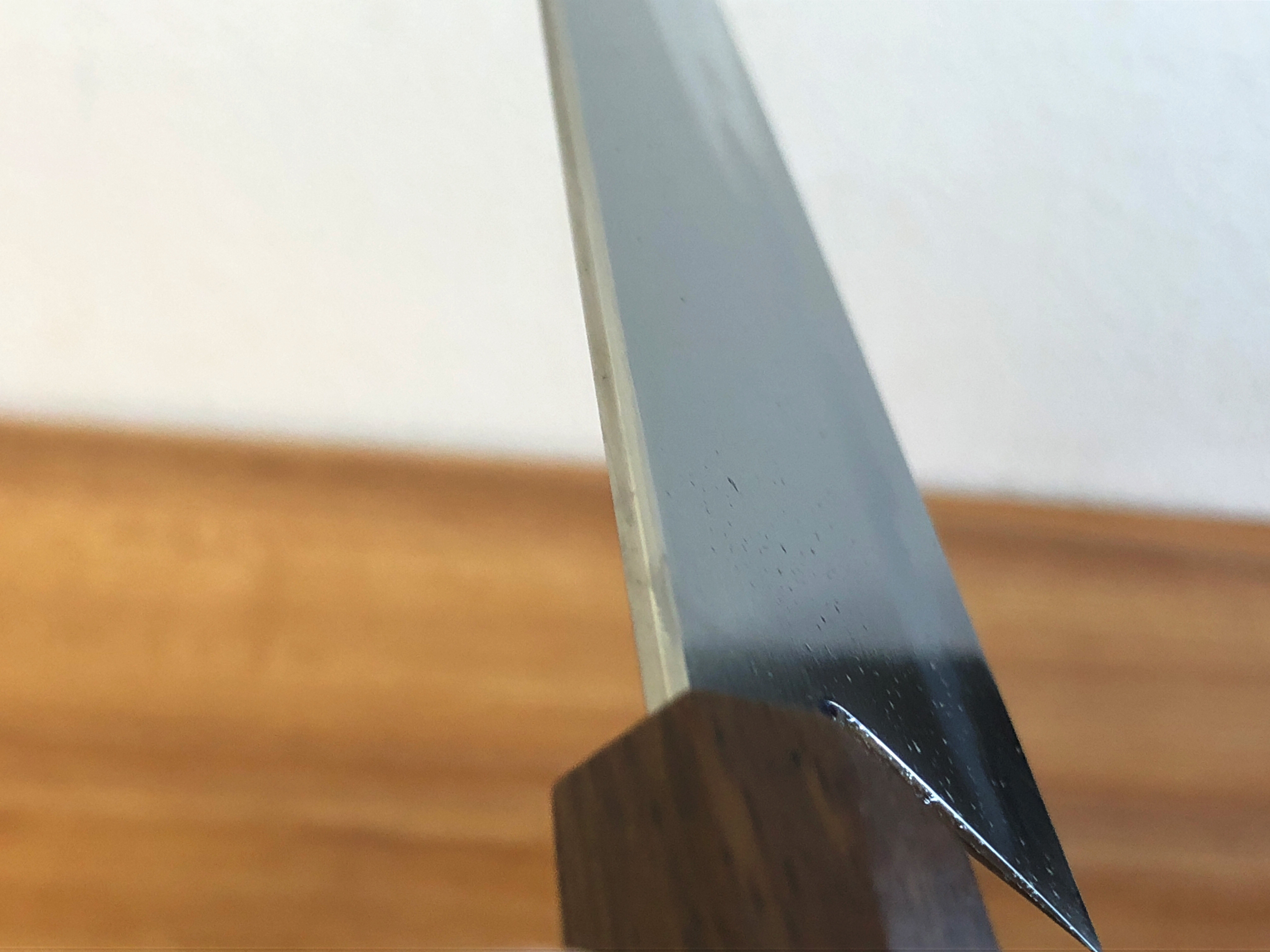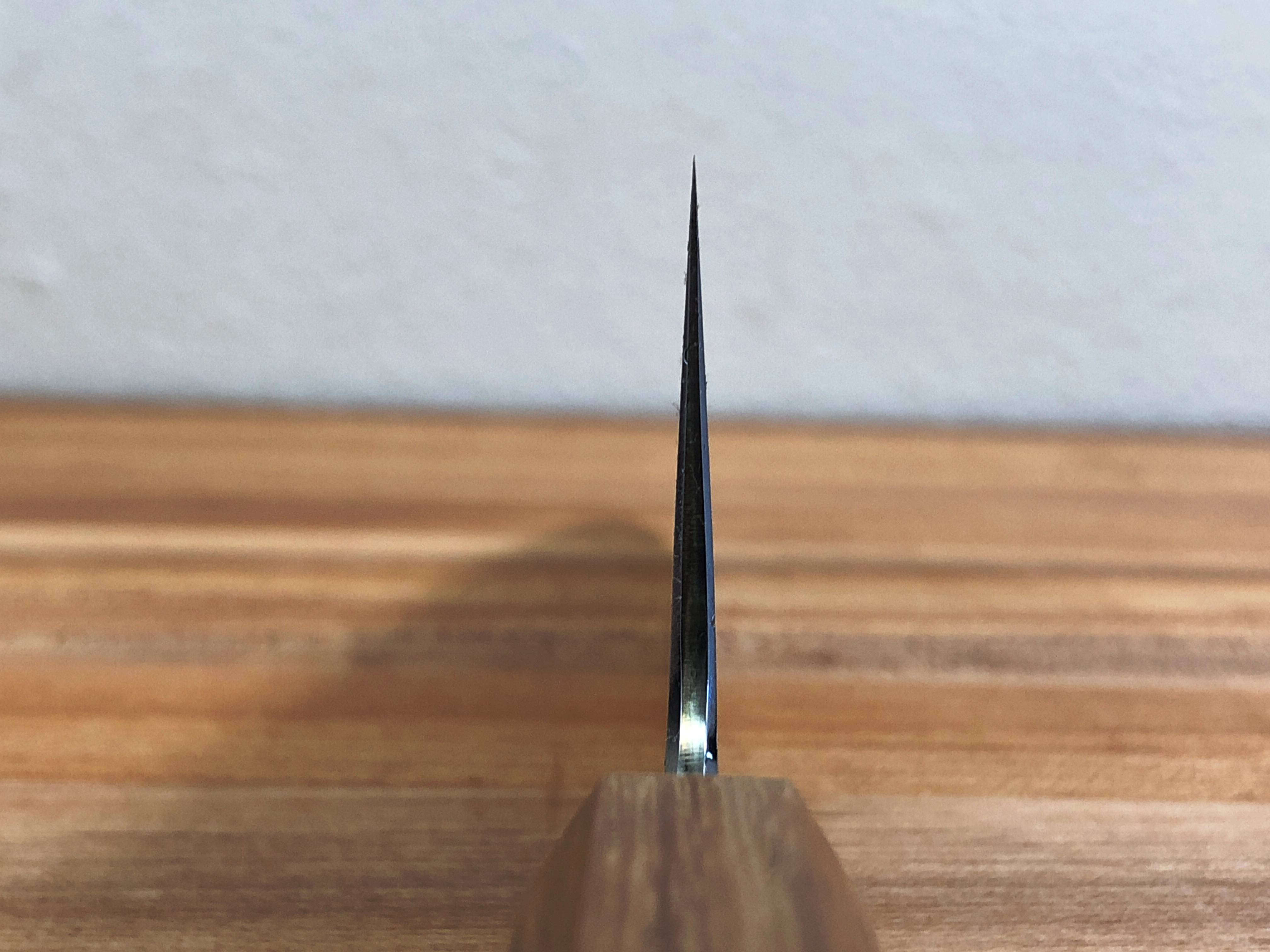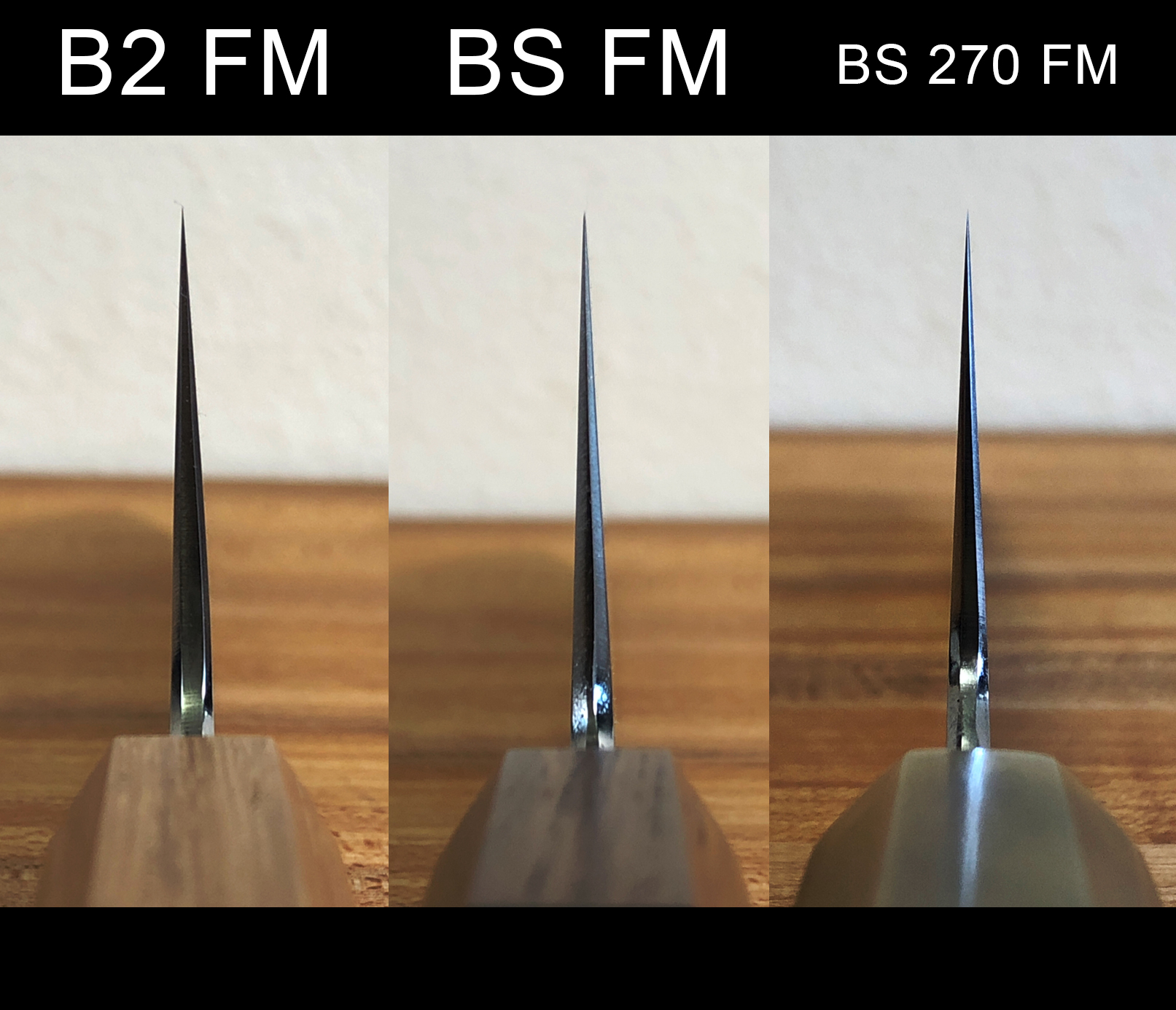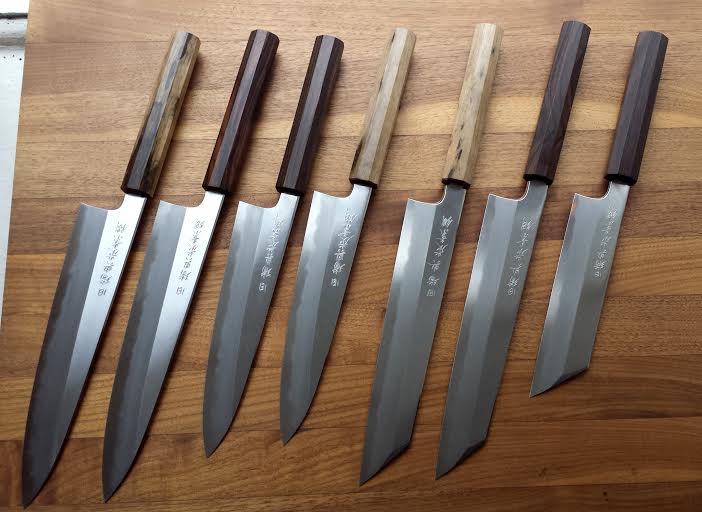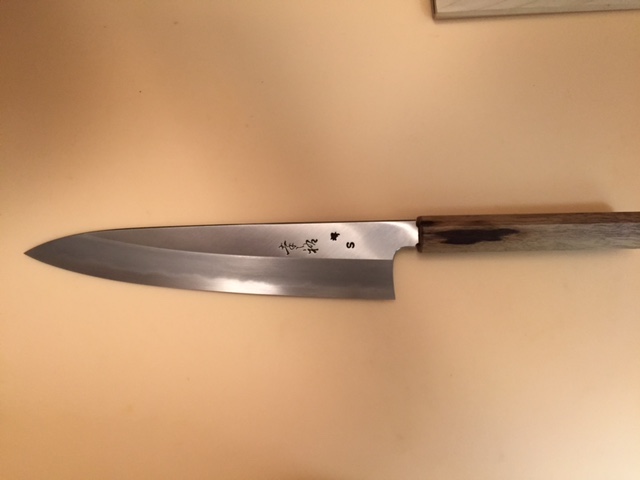Omega
Senior Member
- Joined
- Aug 19, 2016
- Messages
- 380
- Reaction score
- 363
Konosuke Fujiyama; a History
The Konosuke Fujiyama is in contention for one of the best known knives of the past ten years. From their beginnings as an amazing performance-per-dollar knife with stellar fit and finish, to the more recent relative scarcity that have pushed aftermarket prices, and necessitated a buyer be ready to check out within minutes of a new batch, they have quite the history. Whether you love them or hate them, there’s a solid chance you’re well aware of them.
For me personally, Konosuke specifically is the reason why I am into Japanese knives to this day. Between a certain YouTube video of a Konosuke Honyaki, and a video of one of the first group buys from the original Knife Forums back in 2009, I went from saying “I could never spend that much for a knife!” to “…how can I get one?” in short order. But as that budding obsession took hold, and I ventured to the forums to hopefully find answers, I wound up with only more questions.
Who was the blacksmith?
Who was the sharpener?
What was the difference between the steels?
Why did some people swear up and down that the Blue 2s were magical, and the White steel variants would sit for weeks untouched?
Was there any truth to statements of “the Fujiyama of today are NOTHING like what they used to be” ?
Truthfully, it all seemed for not. I felt like instead of answers, I only found conflicting opinions. Frustrated, I stubbornly kept on; and that leads me to today-
I have spent the last four years reading, collecting, examining, and finally speaking with members of Konosuke personally. With this write up I hope to offer the best overview of the line that can be had. What follows below is both a history of the evolution of the Fujiyama, along with profile pictures, choil shots, and measurements of Twenty Four different Fujiyama gyuto.
If you don’t much care for the story of the inception of the Fujiyama, feel free to skip to below. I have included pictures of every Fujiyama referenced in this article, concluded with a master table of every knife, and all the notable measurements and details.
---
When the president of Kosuke Kawamura went to open Konosuke knives in 2007, he had a very specific vision- he wanted to make new, exciting knives that hadn’t been seen before in Sakai. It was with this goal he approached the many storied blacksmiths and sharpeners of Sakai. One by one he met with them, and explained what he hoped to do- wanting to breath new life and options for creativity into the knife making community, and to raise the standard of living of everyone therein.
And one by one, he was rejected.
He was told he was naïve and foolish; that that’s not how things were done; that it wouldn’t work. No one believed in him or what he wanted to do.
Until he met a sharpener- Hiromi Morimoto, ‘Morihiro’.
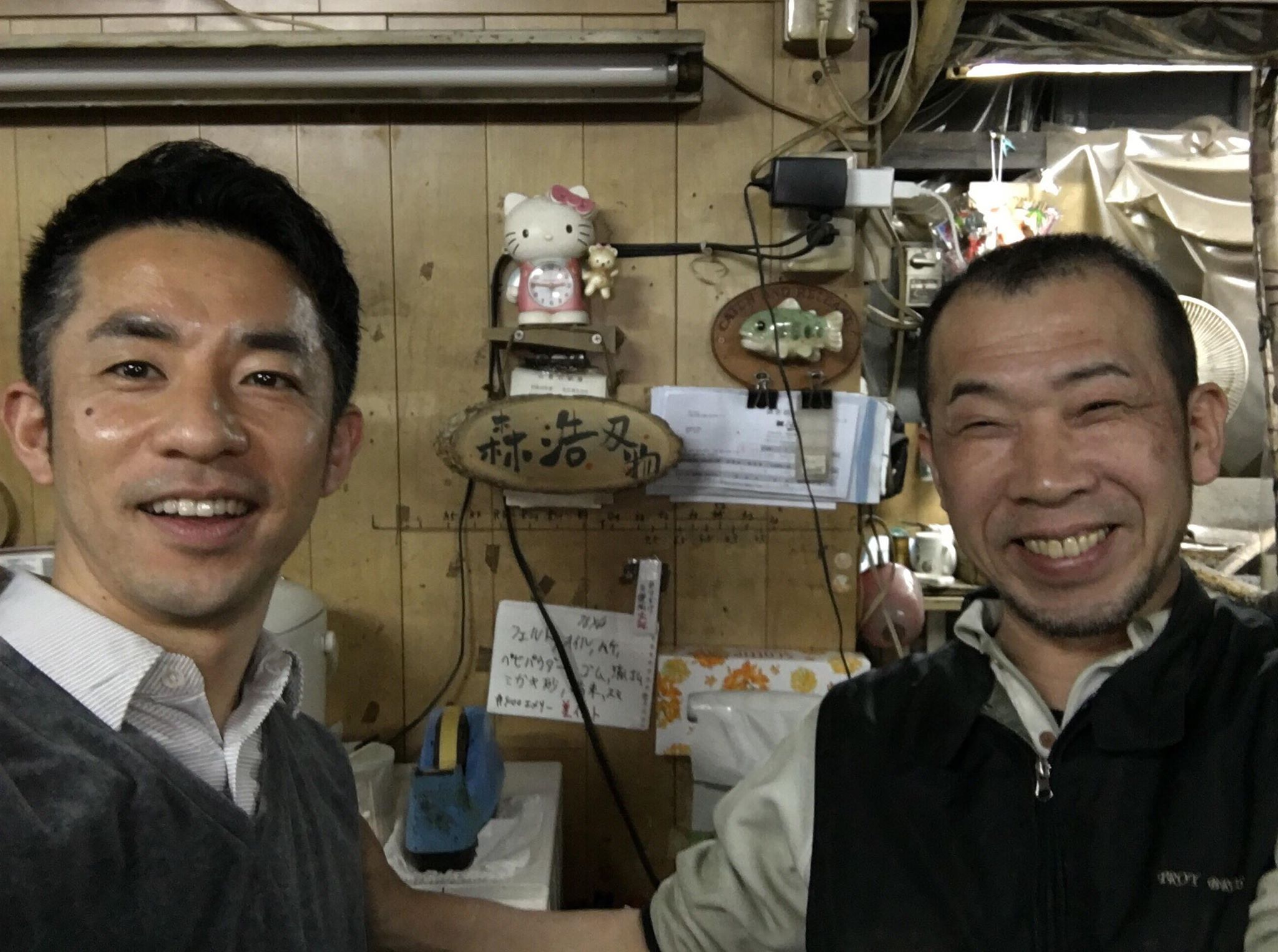
Seen: Kosuke, left, and Morihiro, right
Morihiro heard what Kosuke wanted to do and was excited. The idea of getting to push his sharpening technique in, different ways.. to have more freedom to be creative.. this was captivating to him. Together, Morihiro and Kosuke set out to design something new- and thus created the Fujiyama.
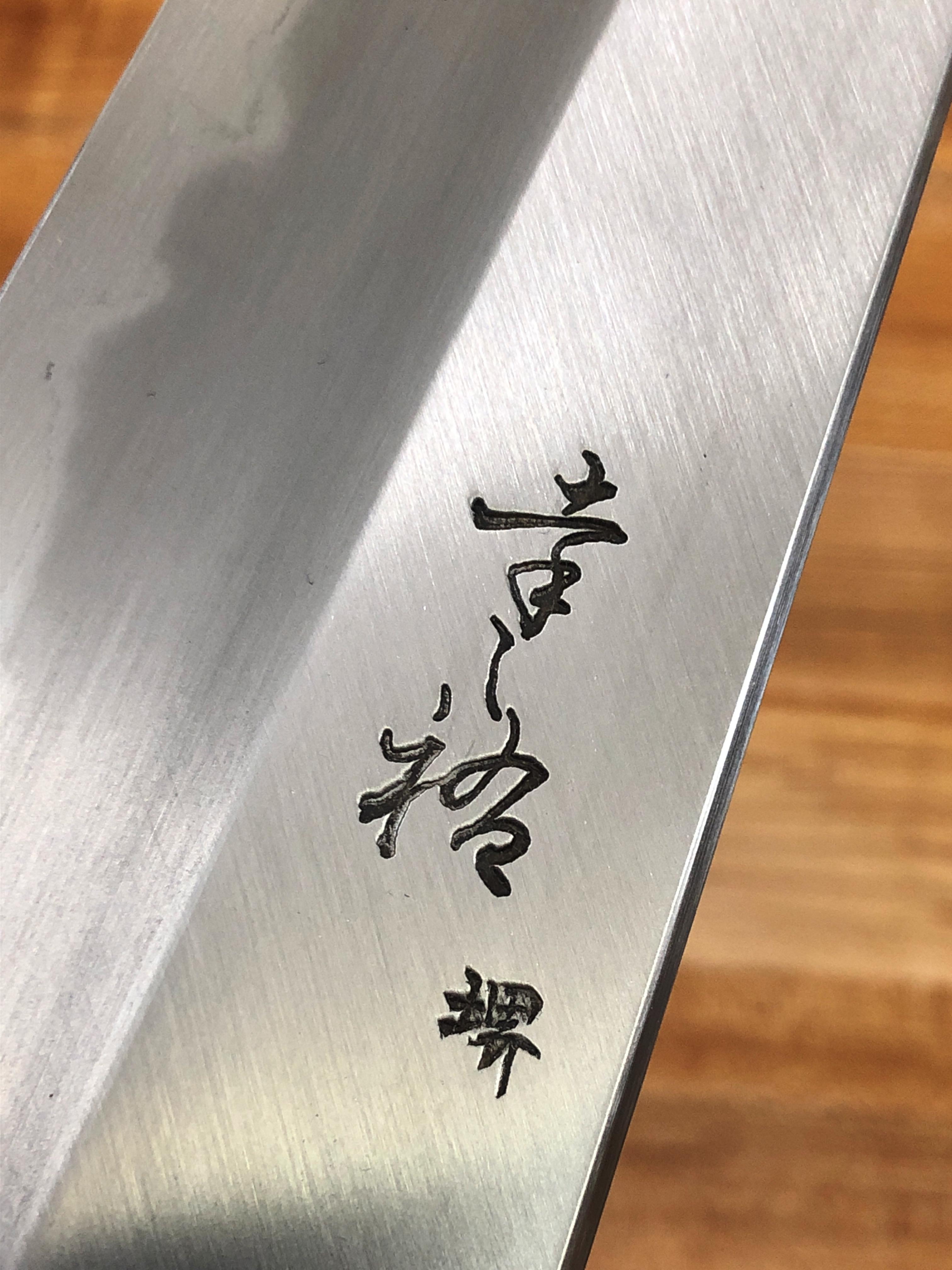
Believe it or not, this was the first time a double bevel knife had ever been fashioned like this. The defined shinogi. The diagonal scratch markets on the hira. The lengthwise finishing on the kiraha. These were pioneered by Kosuke and Morihiro back in 2007. These stylings seem ubiquitous today- they can be had from places like Jikko and Kagekiyo. But these are all copies of the design Kosuke and Morihiro came up with back at the start of Konosuke back in 2007.
In addition to the profile of the knife, Morihiro implemented two other interesting facets that are mainstays on the Fujiyama to this very day- his way of mirror polishing and shaping the choil and spine. Iconic amongst those who love Fujiyama, creating this is no easy task- Morihiro actually had to design a new piece of equipment to accomplish this, and is why so few other knives have this styling: the only other individuals that can do it are those that have trained under Morihiro, and recreated this machine.
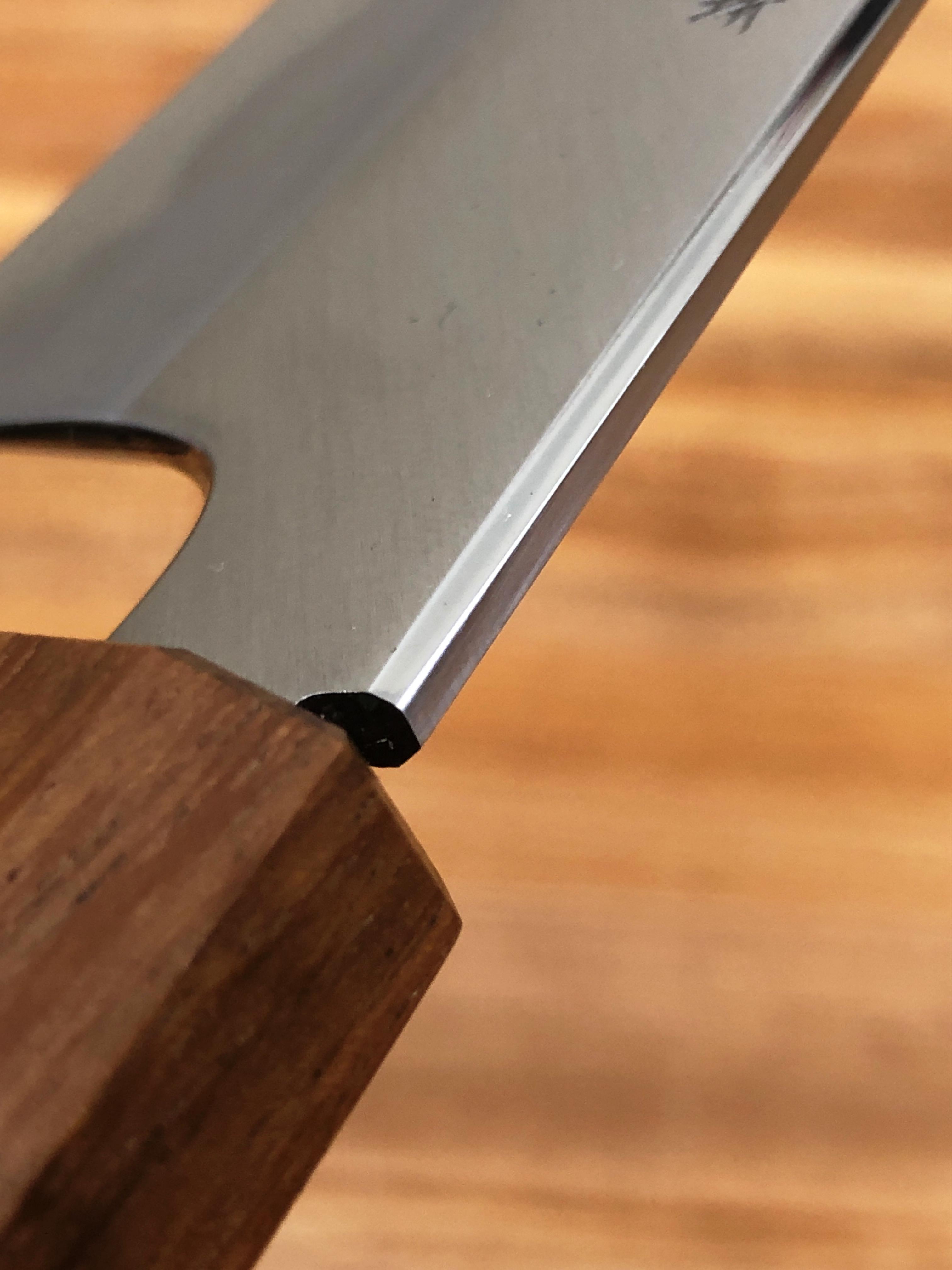
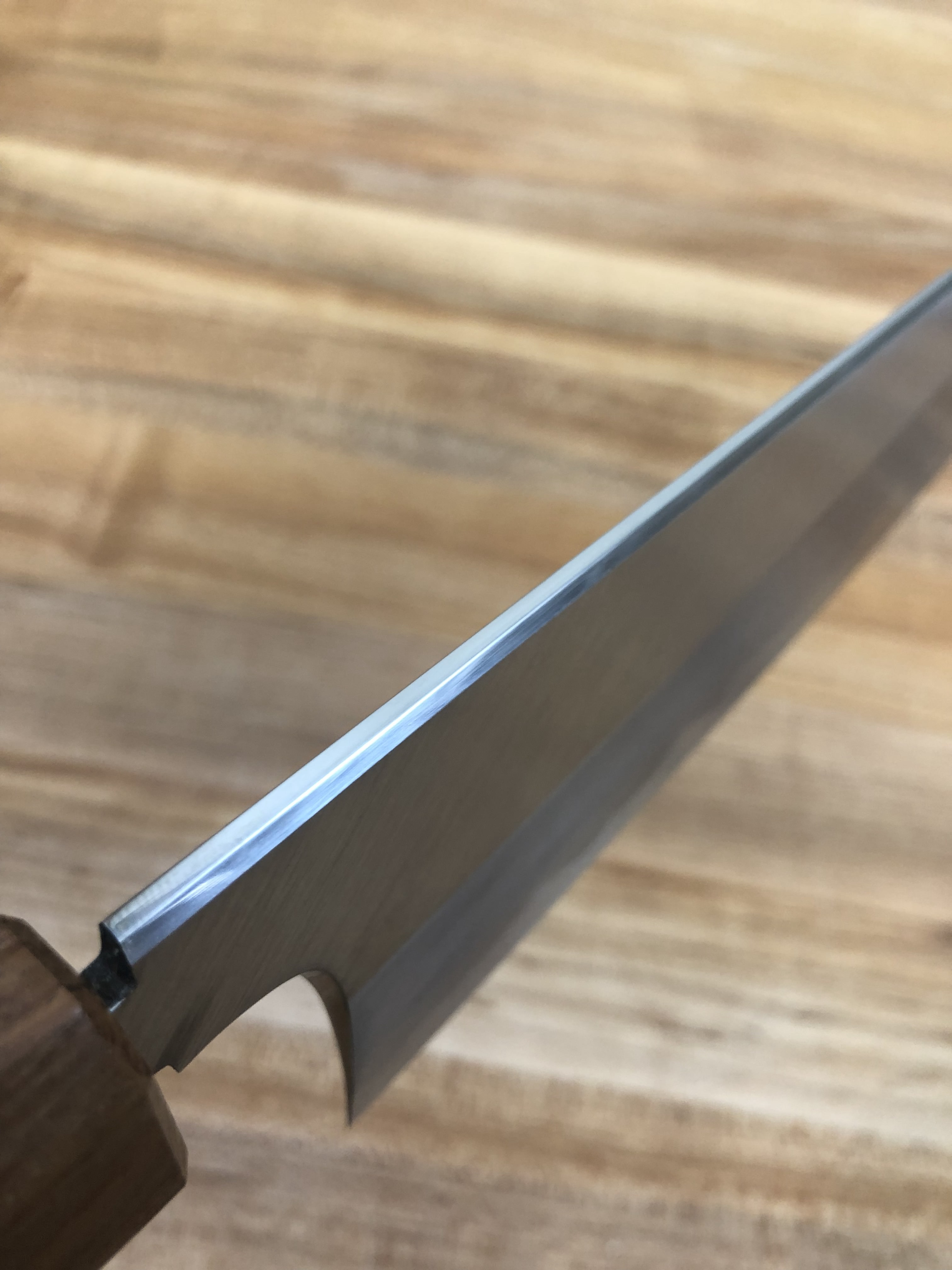
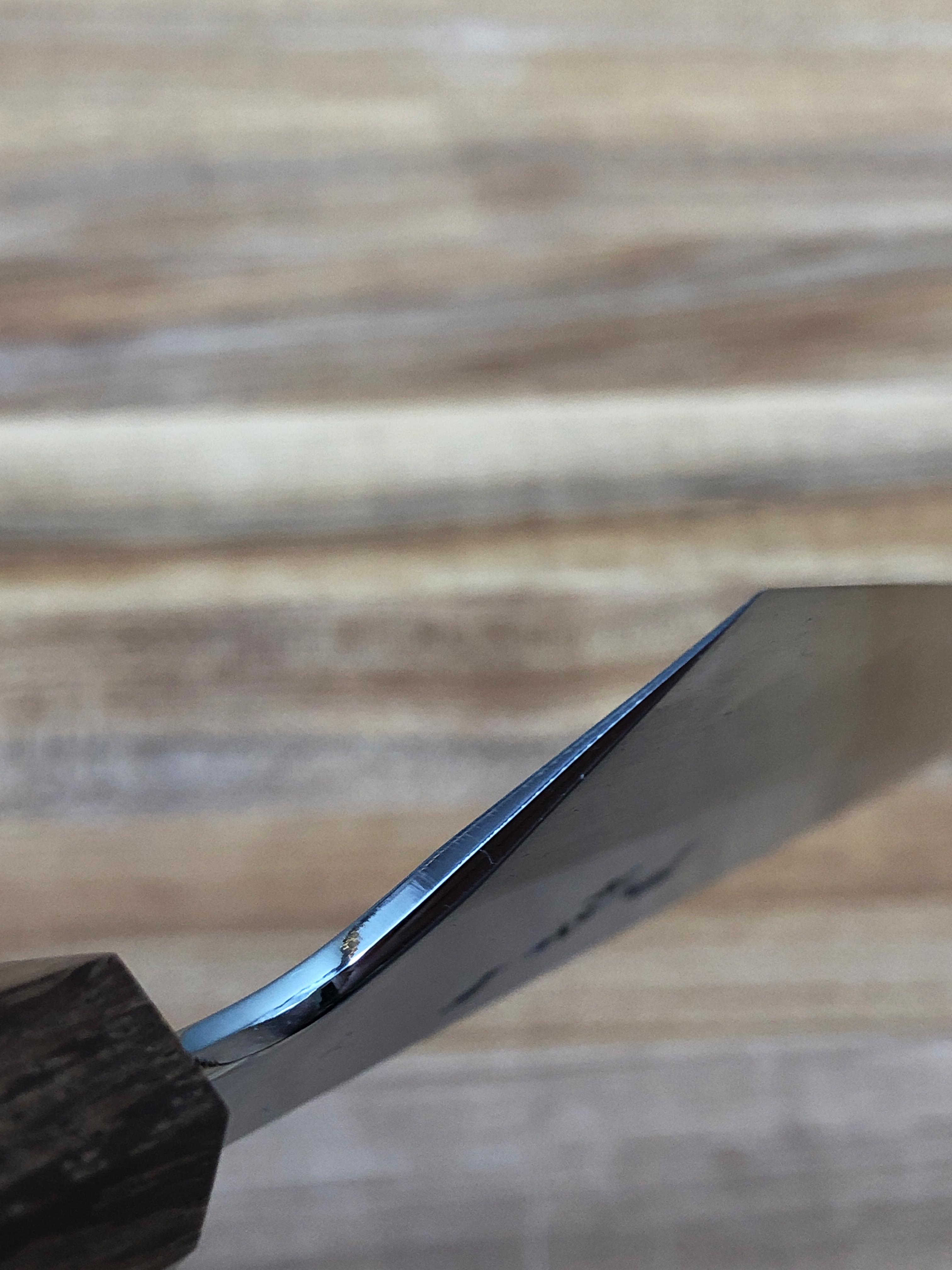
In this way, the Fujiyama is integral to the history of Konosuke as a company- the first original design, the proof of concept that there was still innovation to be had in knives, and the first step towards the future Kosuke hoped to help bring about.
Anyone who has used a Fujiyama can attest to their incredible grinds- but as we knife nuts know well, the grind is only half the story. The forging and heat treatment of the blade plays an important role. And for the Fujiyama, Konosuke employed one of the best in Sakai: Yoshikazu Tanaka.
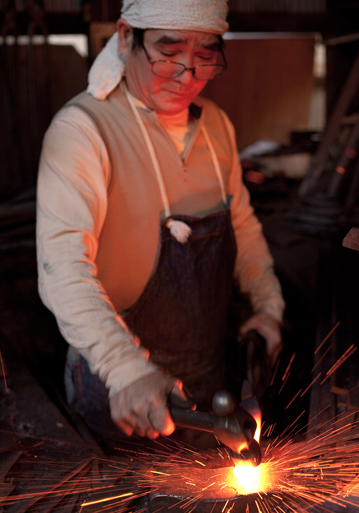
Seen: Yoshikazu Tanaka
It’s hard to describe Tanaka-san in a way that does him justice. A true craftsman, he’s made it his life’s goal to try and unlock the full potential of hitachi carbon steel. Across years of crawling the forums, I’d come across different anecdotes of “the Fujiyama blacksmith’s favorite steel is blue”; or “the Fujiyama blacksmith is good at all steels, but he’s especially great in White 1”.
Having had a chance to use every single steel he offers, I can say this- he has a mastery of them all. I feel incredibly confident in saying, no matter what steel Fujiyama you purchase, you will not be getting one of lesser quality. If you have a preference, let that be your guide.
Now, this brings me to an important part of this history- in all my digging, I saw much pondering about the identities of the Fujiyama craftsmen, with many people speculating that across time and across steels, the craftsmen are different. They’d say, perhaps, for the Fujiyama san mai gyutos in white steels, up until 2014 it was one set of craftsmen, and then it changed. Or that they had multiple craftsmen in their employ and that they rotated from offering to offering.
This is Not the case.
For ALL san mai Fujiyama gyuto in White 1, White 2, Blue 1, Blue 2 and Blue Super:
The Blacksmith has, and continues to be Yoshikazu Tanaka.
The sharpener was exclusively- until 2018, Morihiro.
After 2018, we saw the introduction of two knew version of the Fujiyama- the FM and the FT. Both of these are Not sharpened by Morihiro.
Sometimes people will swear up and down that they saw information to the contrary posted on major retailer websites. As best I can tell, they are referring to these statements I was able to pull from the CKTG website from 2015:
 (*)
(*)
 (*)
(*)
In the first instance, the text means to say that the Blacksmith for the Fujiyama is different from the blacksmith of other non-Fujiyama Konosuke lines (HD/HD2, GS+, HH, etc.)
In the second instance, the text refers specifically to the Honyaki. For that case, yes- the blacksmith responsible for the Blue-steel traditional Fujiyama style wide bevel honyaki is a different blacksmith and sharpener than the White-steel laser style honyaki.
Blue Steel, Fujiyama-style Honyaki
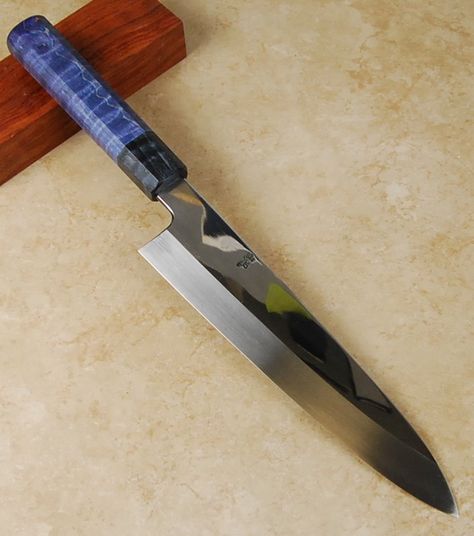 (*)
(*)
(*) The use of the 3 print-grabs from the CKTG webapage was authorized by Mark Richmond of CKTG
White Steel, laser-style Honyaki
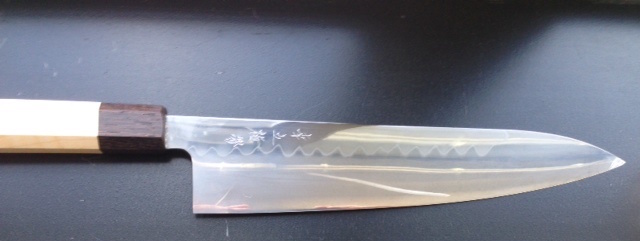
But, again- for ALL san mai Fujiyama gyuto, in White 1, White 2, Blue 1, Blue 2 and Blue Super, from 2007 until 2018:
The Blacksmith was Yoshikazu Tanaka
The Sharpener was Morihiro
To be fair, I can certainly understand why individuals might be compelled to think different craftsmen are involved- as you examine samples from year to year, a person does tend to see slight variation over time. From conversations with Kosuke and other members of the Konosuke staff, this largely seems to be a function of Morihiro. Never satisfied, he constantly was iterating on his designs, trying both to get better as a sharpener, but also to constantly improve what he thought the Fujiyama should be.
To date, I have had the opportunity to view of 50 Fujiyama, and have been able to compare 24 different samples, in different steels and from different years, concurrently. From this, I feel I can say I’ve observed a few general trends that allow all Fujiyama to be divided into four groups:
2007-2012
2013 – 2015
2016 - 2017
2018+
The Konosuke Fujiyama is in contention for one of the best known knives of the past ten years. From their beginnings as an amazing performance-per-dollar knife with stellar fit and finish, to the more recent relative scarcity that have pushed aftermarket prices, and necessitated a buyer be ready to check out within minutes of a new batch, they have quite the history. Whether you love them or hate them, there’s a solid chance you’re well aware of them.
For me personally, Konosuke specifically is the reason why I am into Japanese knives to this day. Between a certain YouTube video of a Konosuke Honyaki, and a video of one of the first group buys from the original Knife Forums back in 2009, I went from saying “I could never spend that much for a knife!” to “…how can I get one?” in short order. But as that budding obsession took hold, and I ventured to the forums to hopefully find answers, I wound up with only more questions.
Who was the blacksmith?
Who was the sharpener?
What was the difference between the steels?
Why did some people swear up and down that the Blue 2s were magical, and the White steel variants would sit for weeks untouched?
Was there any truth to statements of “the Fujiyama of today are NOTHING like what they used to be” ?
Truthfully, it all seemed for not. I felt like instead of answers, I only found conflicting opinions. Frustrated, I stubbornly kept on; and that leads me to today-
I have spent the last four years reading, collecting, examining, and finally speaking with members of Konosuke personally. With this write up I hope to offer the best overview of the line that can be had. What follows below is both a history of the evolution of the Fujiyama, along with profile pictures, choil shots, and measurements of Twenty Four different Fujiyama gyuto.
If you don’t much care for the story of the inception of the Fujiyama, feel free to skip to below. I have included pictures of every Fujiyama referenced in this article, concluded with a master table of every knife, and all the notable measurements and details.
---
When the president of Kosuke Kawamura went to open Konosuke knives in 2007, he had a very specific vision- he wanted to make new, exciting knives that hadn’t been seen before in Sakai. It was with this goal he approached the many storied blacksmiths and sharpeners of Sakai. One by one he met with them, and explained what he hoped to do- wanting to breath new life and options for creativity into the knife making community, and to raise the standard of living of everyone therein.
And one by one, he was rejected.
He was told he was naïve and foolish; that that’s not how things were done; that it wouldn’t work. No one believed in him or what he wanted to do.
Until he met a sharpener- Hiromi Morimoto, ‘Morihiro’.

Seen: Kosuke, left, and Morihiro, right
Morihiro heard what Kosuke wanted to do and was excited. The idea of getting to push his sharpening technique in, different ways.. to have more freedom to be creative.. this was captivating to him. Together, Morihiro and Kosuke set out to design something new- and thus created the Fujiyama.

Believe it or not, this was the first time a double bevel knife had ever been fashioned like this. The defined shinogi. The diagonal scratch markets on the hira. The lengthwise finishing on the kiraha. These were pioneered by Kosuke and Morihiro back in 2007. These stylings seem ubiquitous today- they can be had from places like Jikko and Kagekiyo. But these are all copies of the design Kosuke and Morihiro came up with back at the start of Konosuke back in 2007.
In addition to the profile of the knife, Morihiro implemented two other interesting facets that are mainstays on the Fujiyama to this very day- his way of mirror polishing and shaping the choil and spine. Iconic amongst those who love Fujiyama, creating this is no easy task- Morihiro actually had to design a new piece of equipment to accomplish this, and is why so few other knives have this styling: the only other individuals that can do it are those that have trained under Morihiro, and recreated this machine.



In this way, the Fujiyama is integral to the history of Konosuke as a company- the first original design, the proof of concept that there was still innovation to be had in knives, and the first step towards the future Kosuke hoped to help bring about.
Anyone who has used a Fujiyama can attest to their incredible grinds- but as we knife nuts know well, the grind is only half the story. The forging and heat treatment of the blade plays an important role. And for the Fujiyama, Konosuke employed one of the best in Sakai: Yoshikazu Tanaka.

Seen: Yoshikazu Tanaka
It’s hard to describe Tanaka-san in a way that does him justice. A true craftsman, he’s made it his life’s goal to try and unlock the full potential of hitachi carbon steel. Across years of crawling the forums, I’d come across different anecdotes of “the Fujiyama blacksmith’s favorite steel is blue”; or “the Fujiyama blacksmith is good at all steels, but he’s especially great in White 1”.
Having had a chance to use every single steel he offers, I can say this- he has a mastery of them all. I feel incredibly confident in saying, no matter what steel Fujiyama you purchase, you will not be getting one of lesser quality. If you have a preference, let that be your guide.
Now, this brings me to an important part of this history- in all my digging, I saw much pondering about the identities of the Fujiyama craftsmen, with many people speculating that across time and across steels, the craftsmen are different. They’d say, perhaps, for the Fujiyama san mai gyutos in white steels, up until 2014 it was one set of craftsmen, and then it changed. Or that they had multiple craftsmen in their employ and that they rotated from offering to offering.
This is Not the case.
For ALL san mai Fujiyama gyuto in White 1, White 2, Blue 1, Blue 2 and Blue Super:
The Blacksmith has, and continues to be Yoshikazu Tanaka.
The sharpener was exclusively- until 2018, Morihiro.
After 2018, we saw the introduction of two knew version of the Fujiyama- the FM and the FT. Both of these are Not sharpened by Morihiro.
Sometimes people will swear up and down that they saw information to the contrary posted on major retailer websites. As best I can tell, they are referring to these statements I was able to pull from the CKTG website from 2015:
 (*)
(*) (*)
(*)In the first instance, the text means to say that the Blacksmith for the Fujiyama is different from the blacksmith of other non-Fujiyama Konosuke lines (HD/HD2, GS+, HH, etc.)
In the second instance, the text refers specifically to the Honyaki. For that case, yes- the blacksmith responsible for the Blue-steel traditional Fujiyama style wide bevel honyaki is a different blacksmith and sharpener than the White-steel laser style honyaki.
Blue Steel, Fujiyama-style Honyaki
 (*)
(*)(*) The use of the 3 print-grabs from the CKTG webapage was authorized by Mark Richmond of CKTG
White Steel, laser-style Honyaki

But, again- for ALL san mai Fujiyama gyuto, in White 1, White 2, Blue 1, Blue 2 and Blue Super, from 2007 until 2018:
The Blacksmith was Yoshikazu Tanaka
The Sharpener was Morihiro
To be fair, I can certainly understand why individuals might be compelled to think different craftsmen are involved- as you examine samples from year to year, a person does tend to see slight variation over time. From conversations with Kosuke and other members of the Konosuke staff, this largely seems to be a function of Morihiro. Never satisfied, he constantly was iterating on his designs, trying both to get better as a sharpener, but also to constantly improve what he thought the Fujiyama should be.
To date, I have had the opportunity to view of 50 Fujiyama, and have been able to compare 24 different samples, in different steels and from different years, concurrently. From this, I feel I can say I’ve observed a few general trends that allow all Fujiyama to be divided into four groups:
2007-2012
2013 – 2015
2016 - 2017
2018+
Last edited by a moderator:






